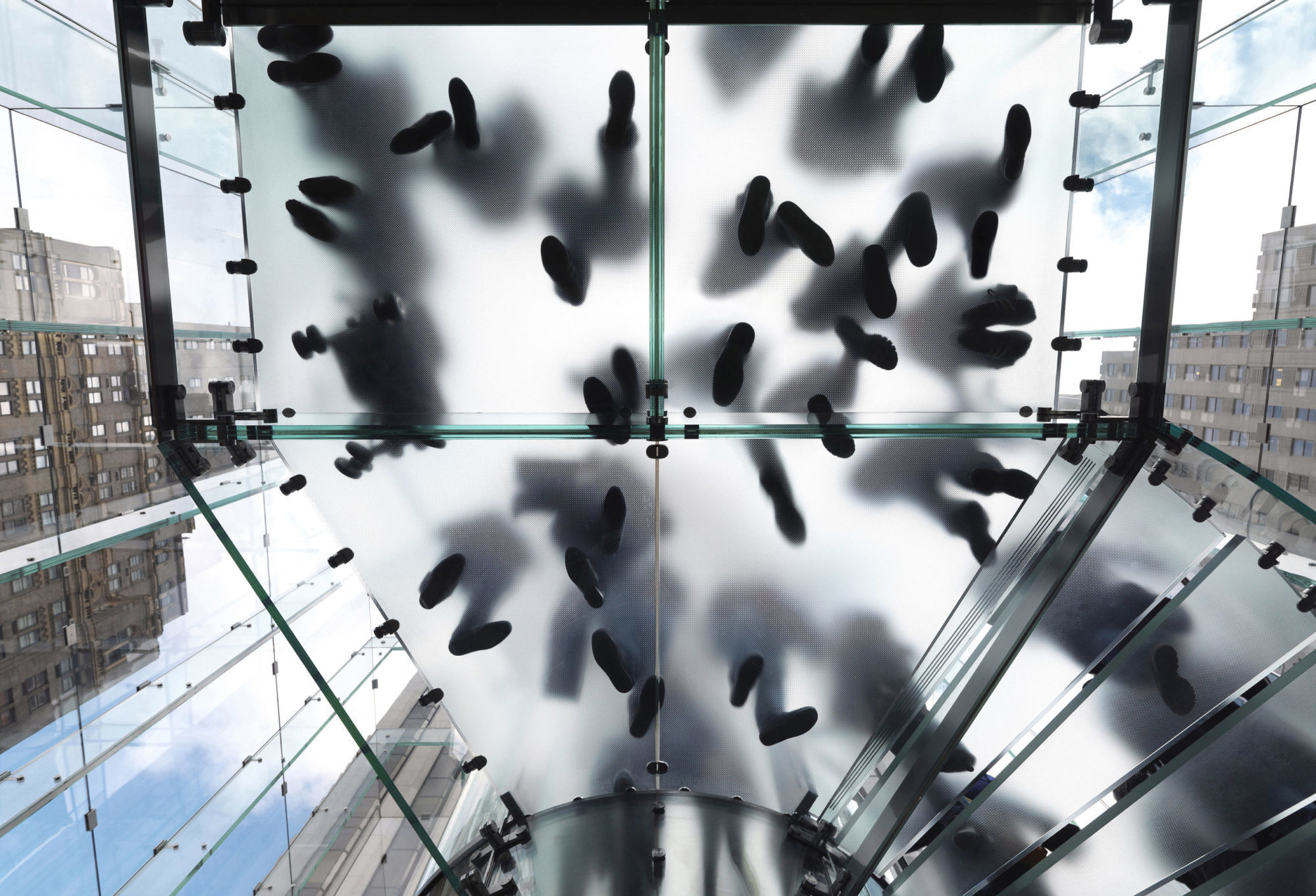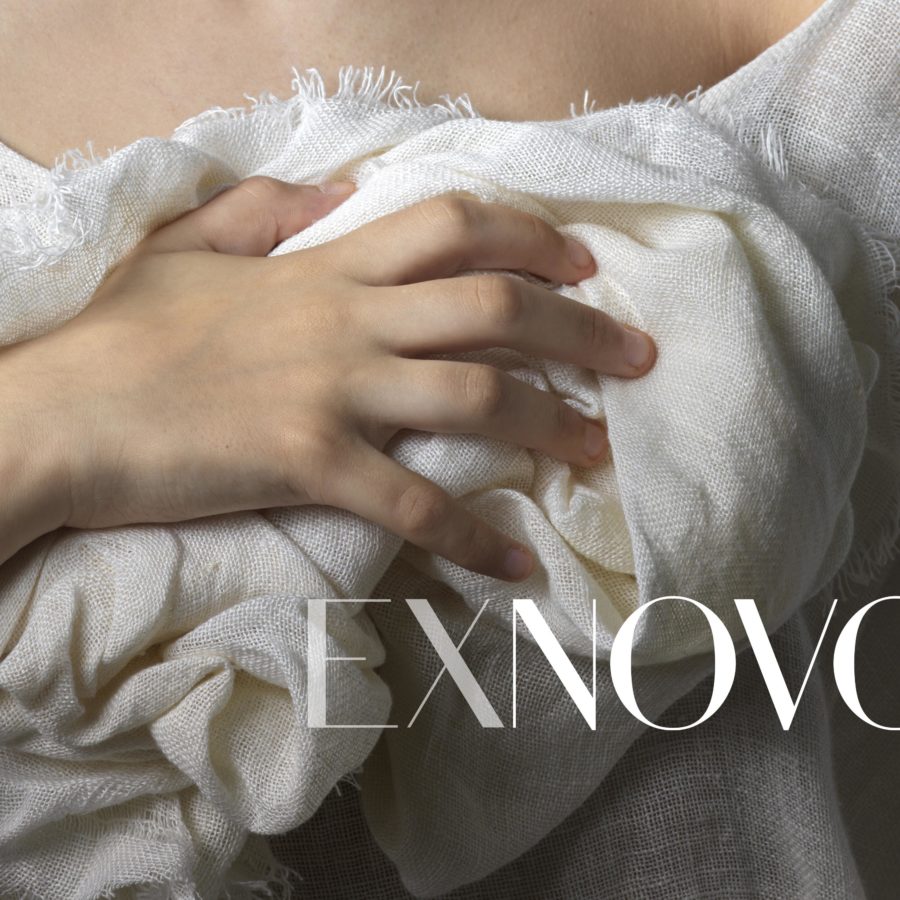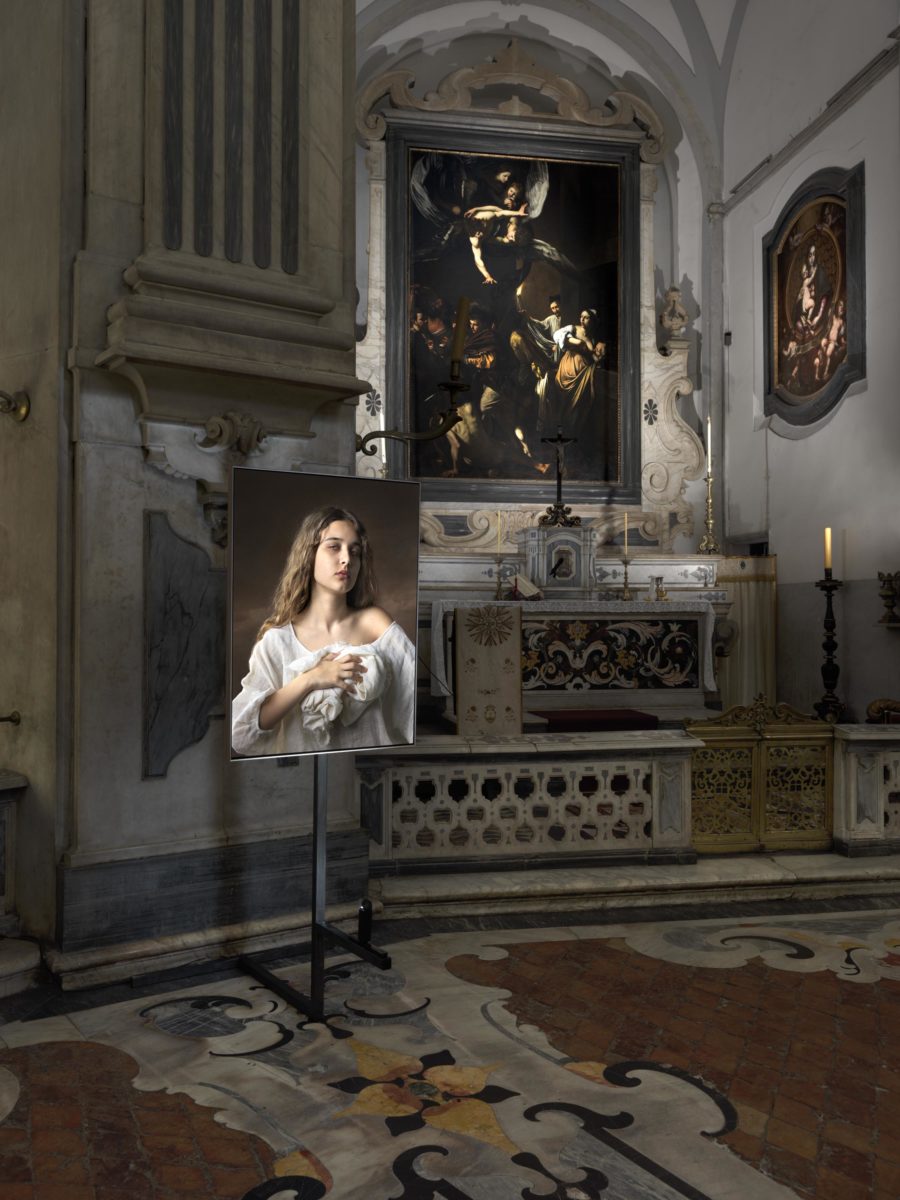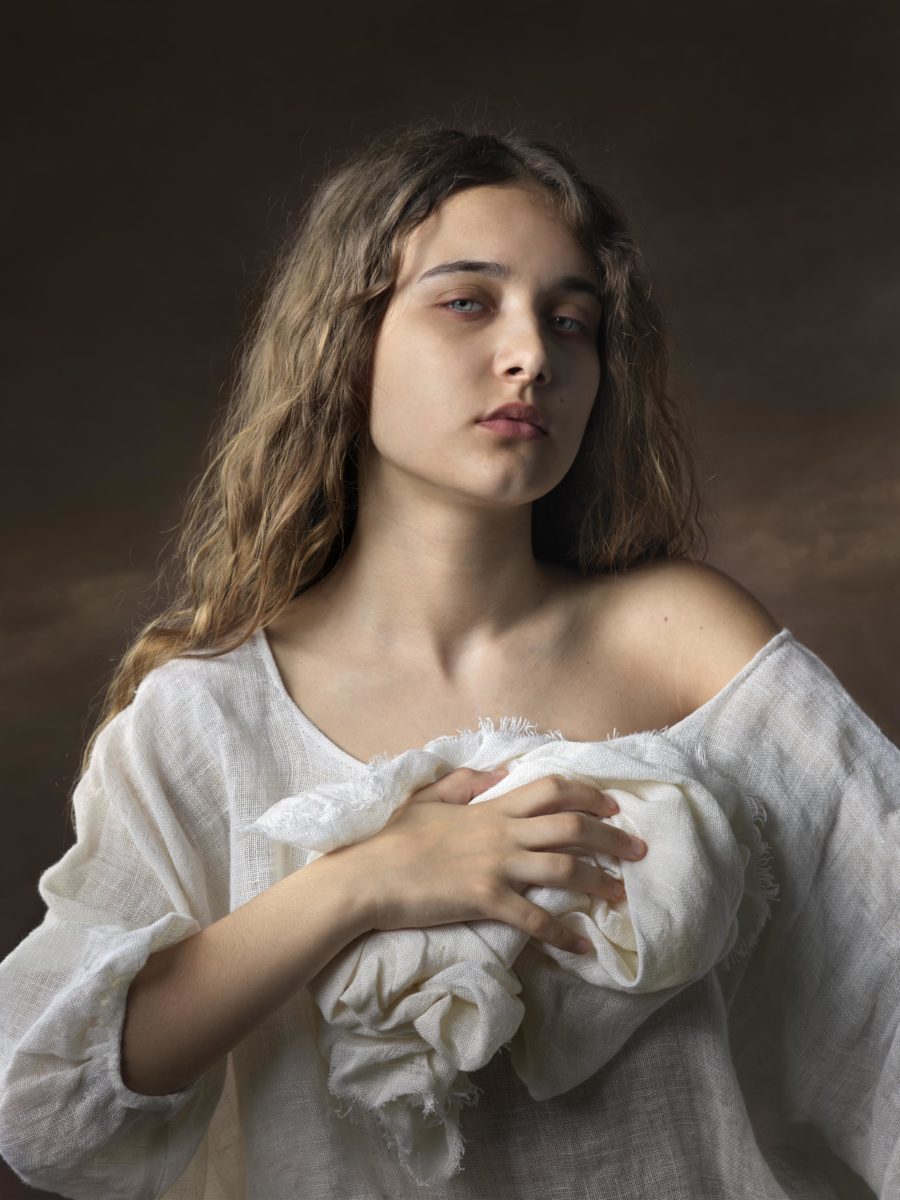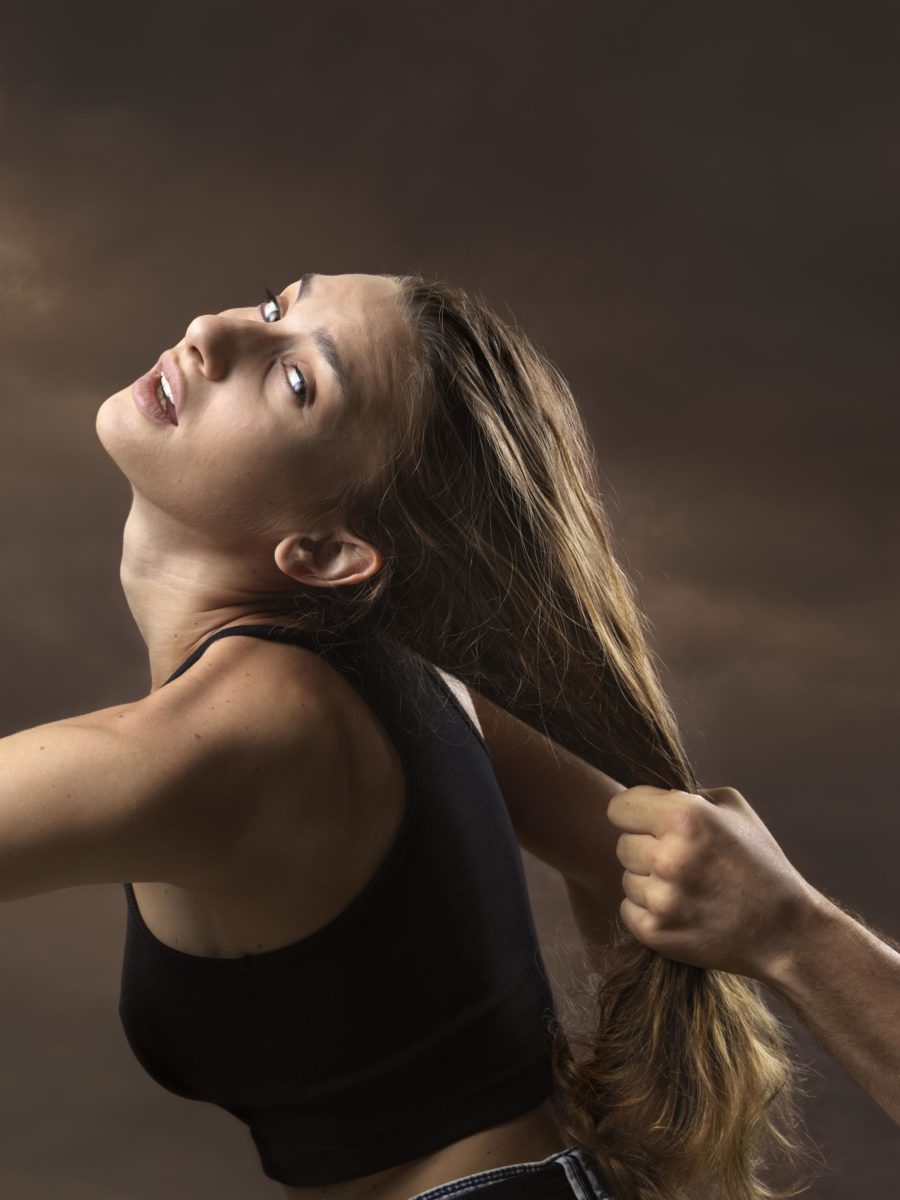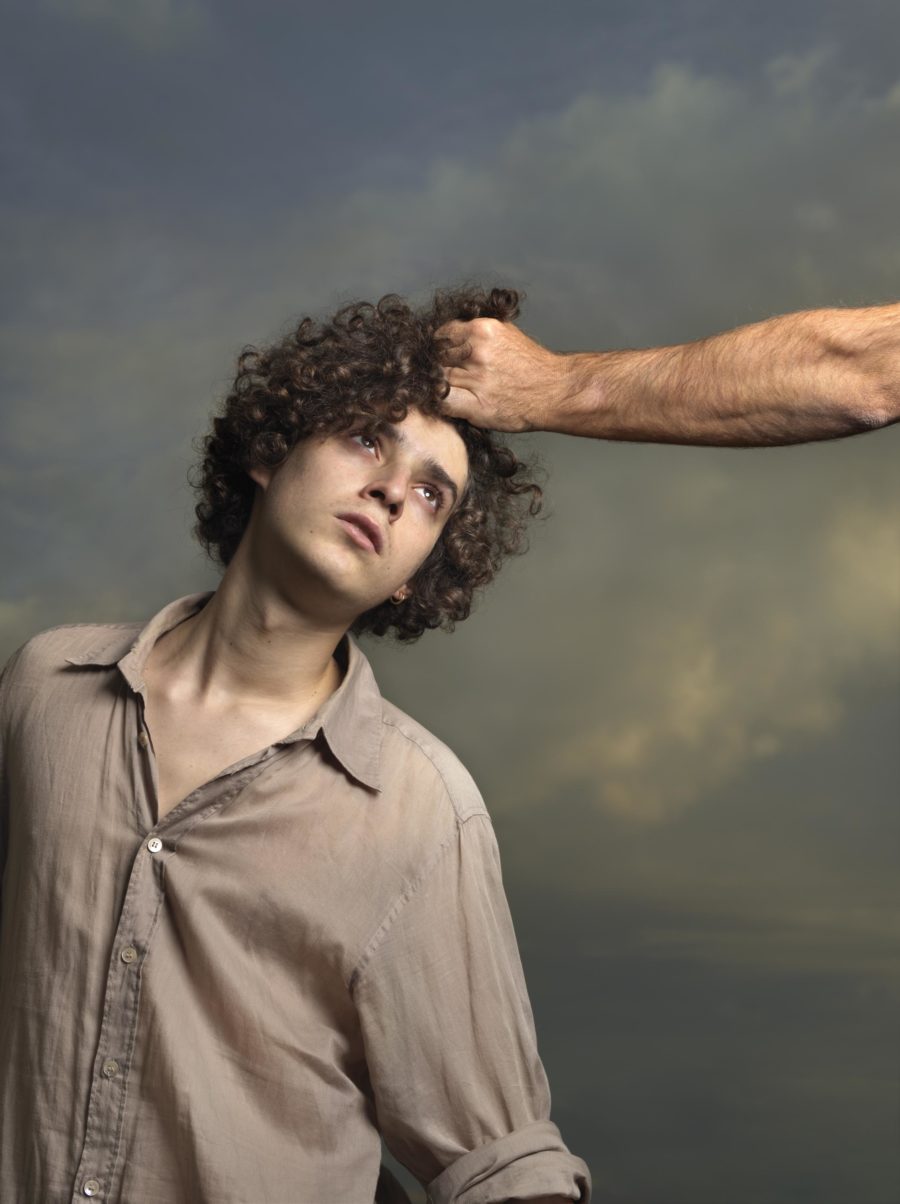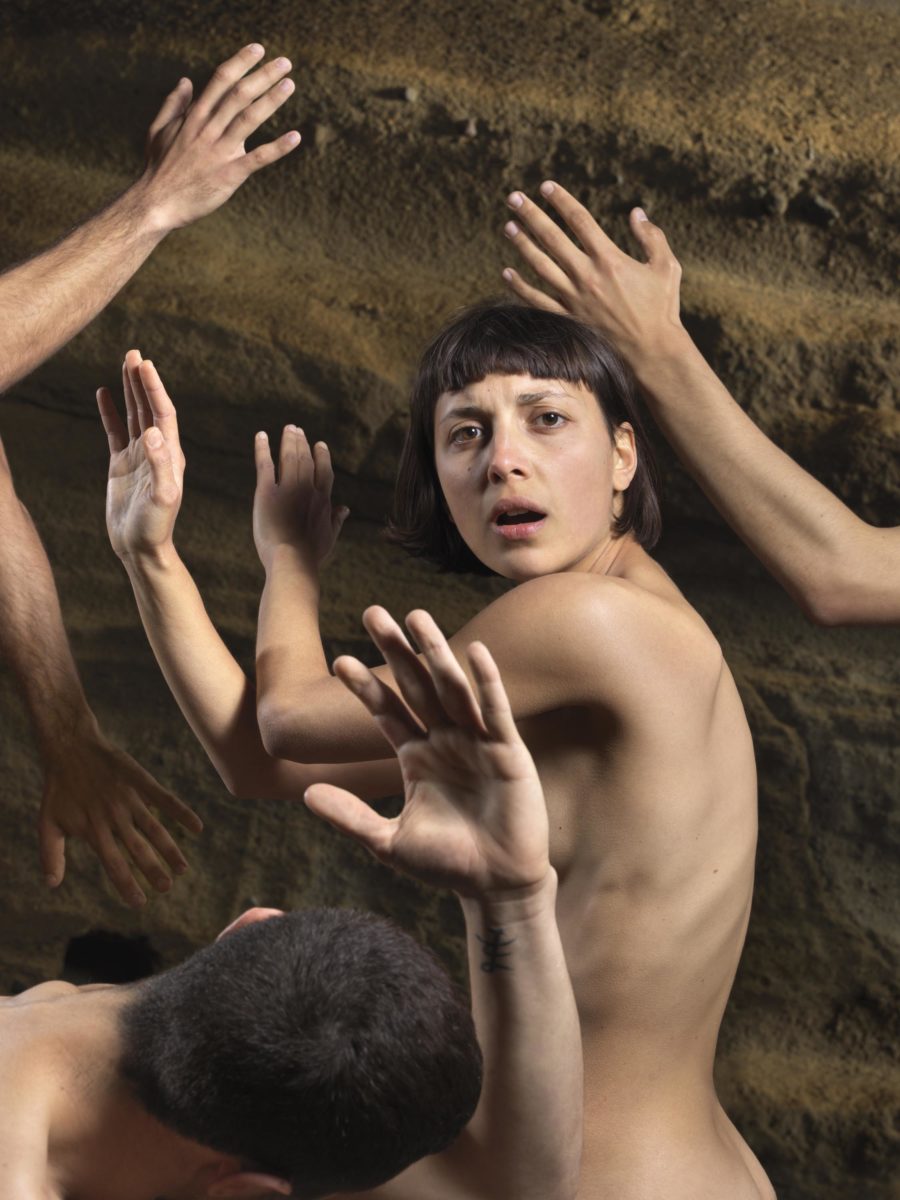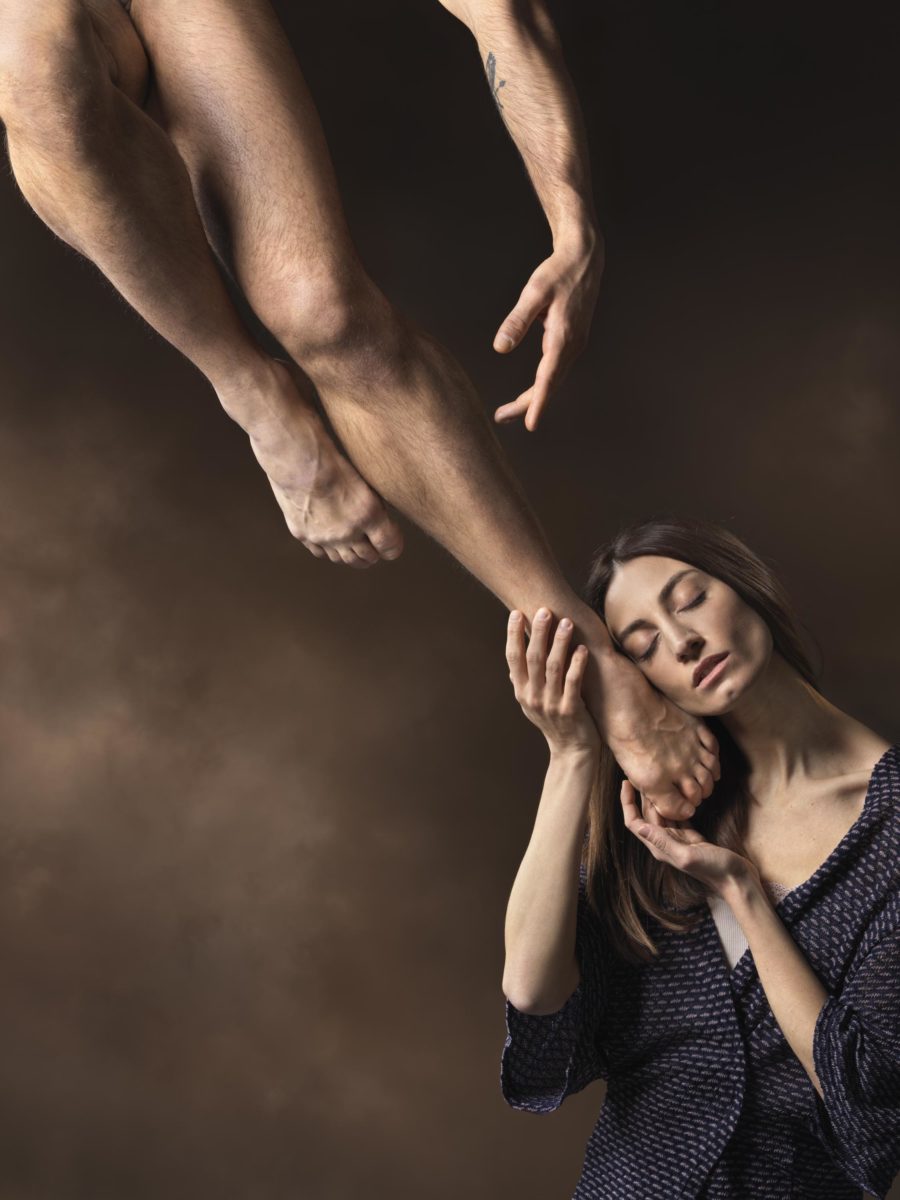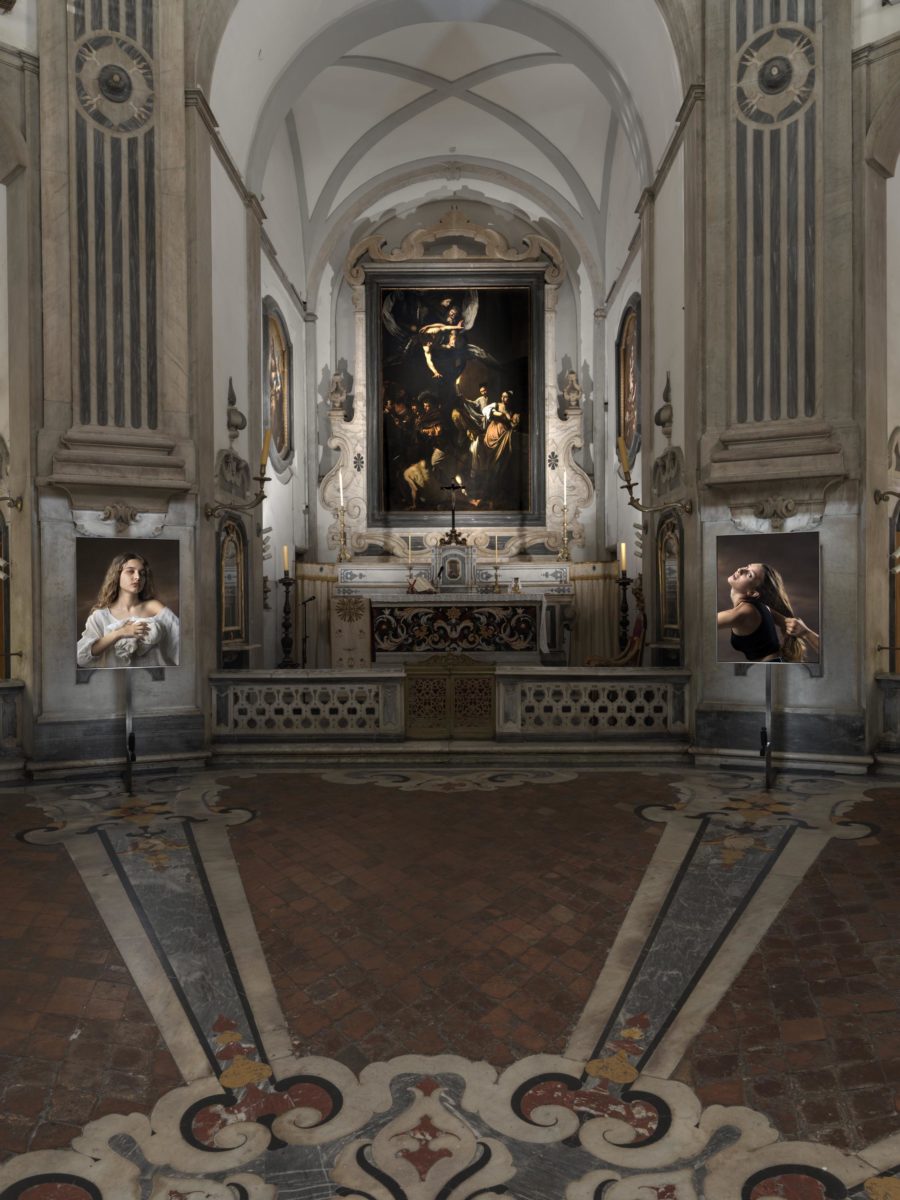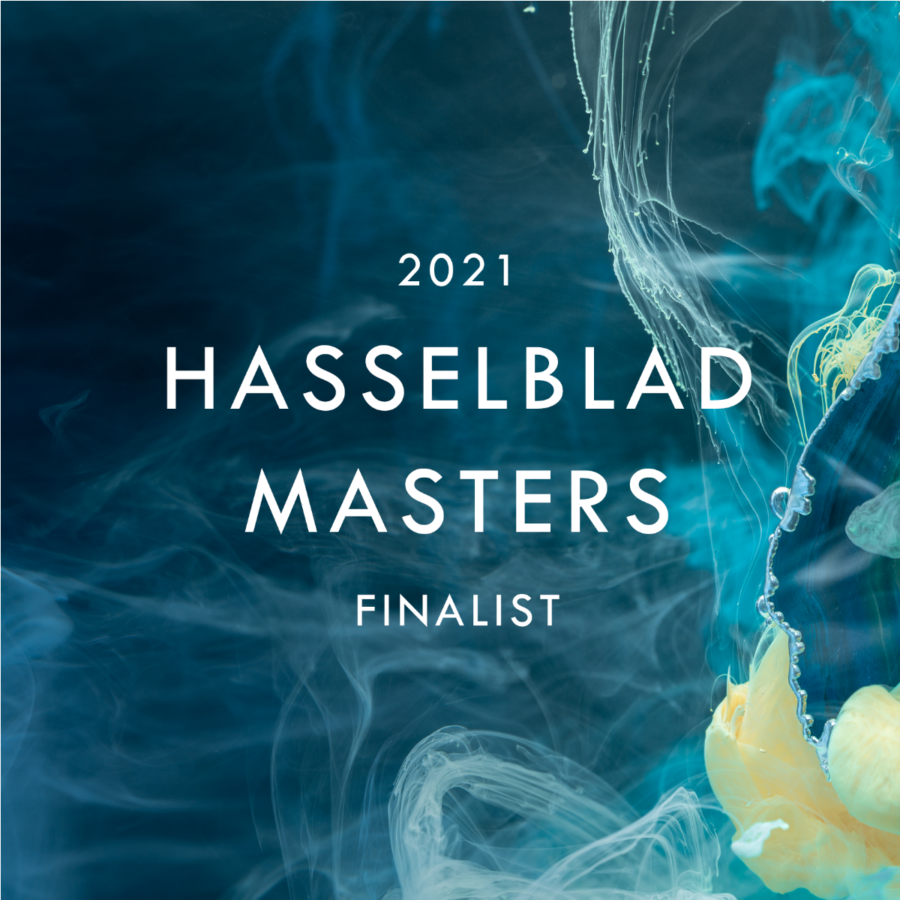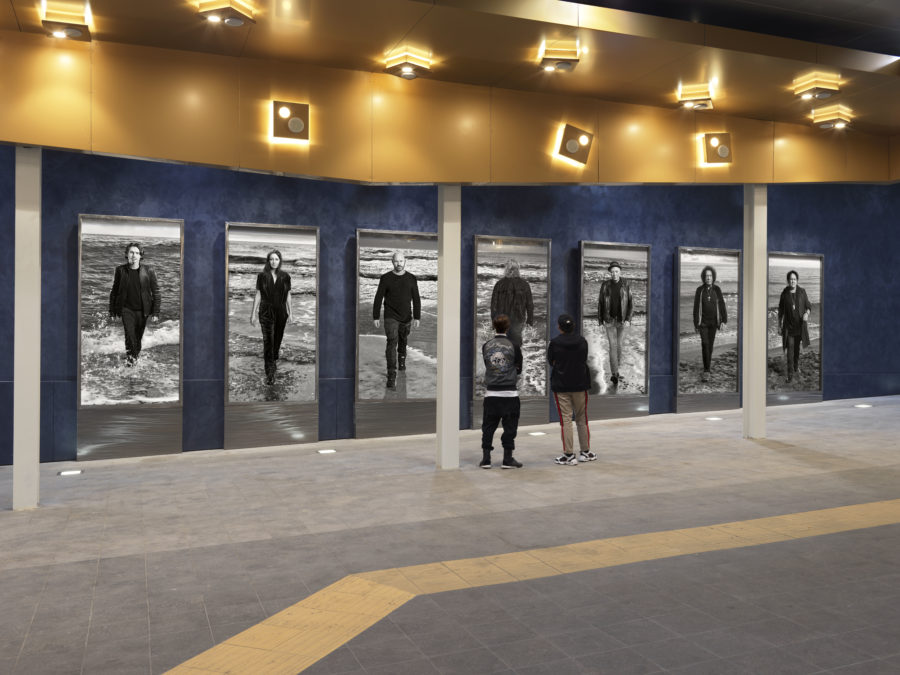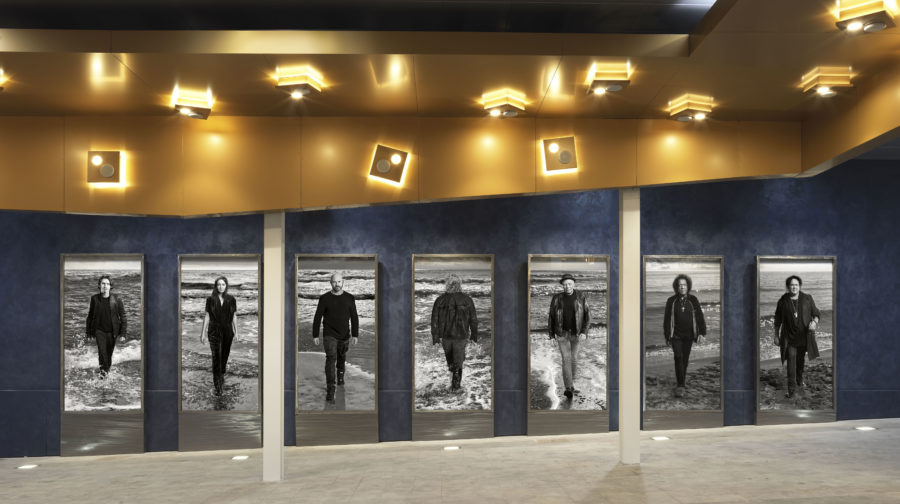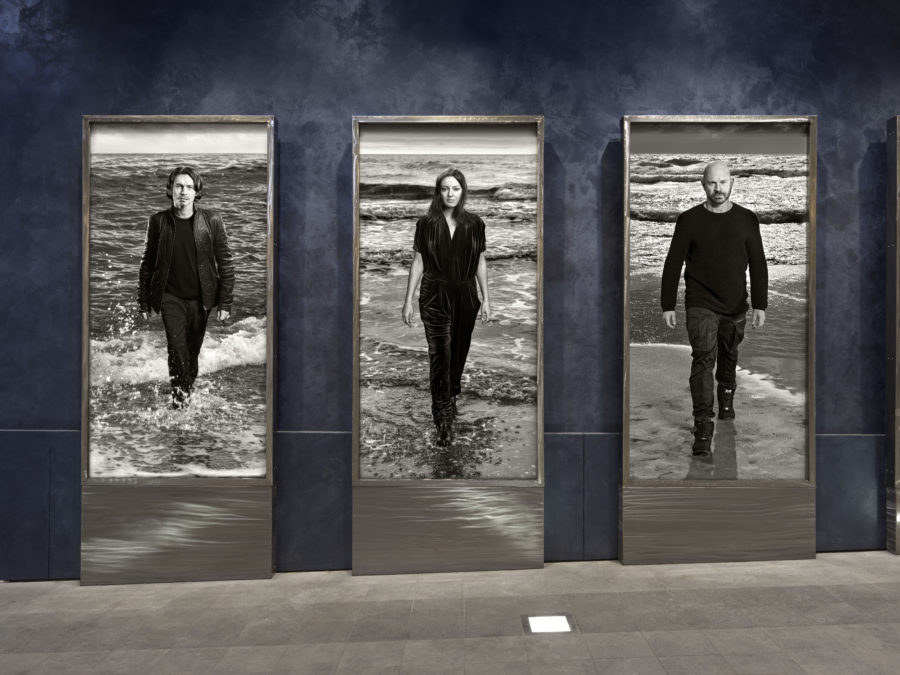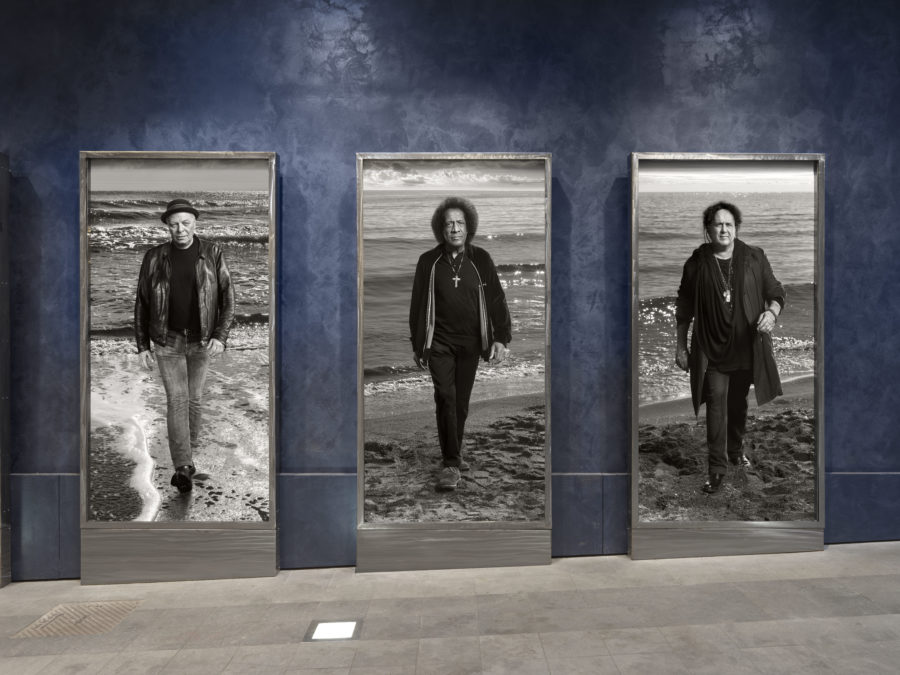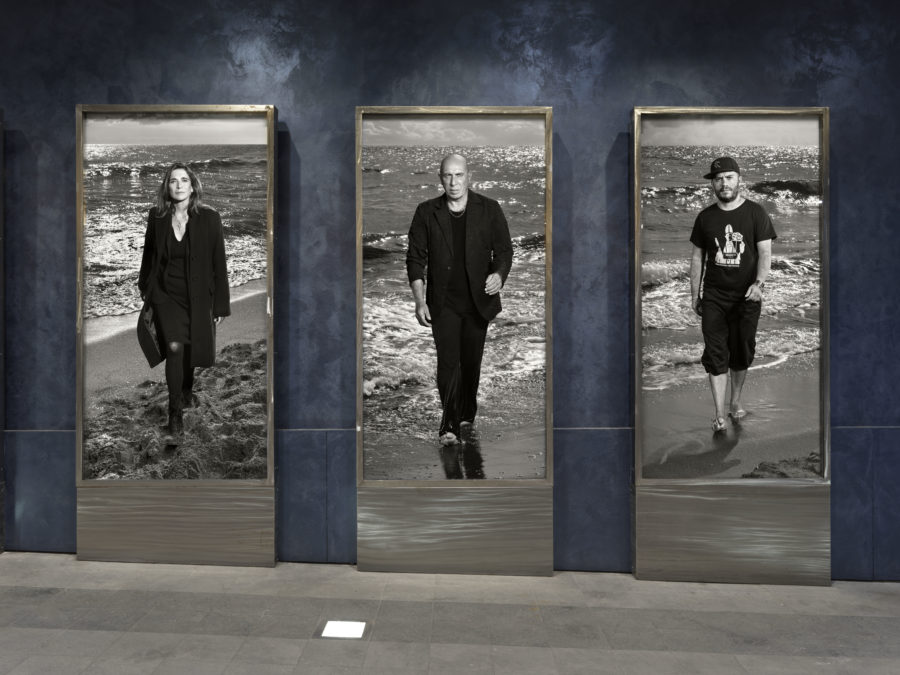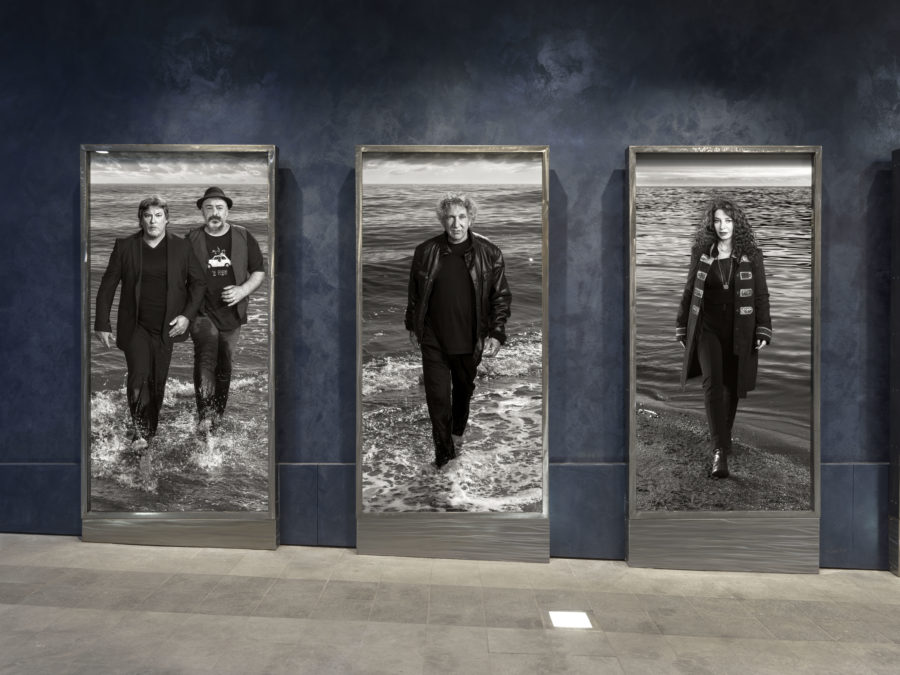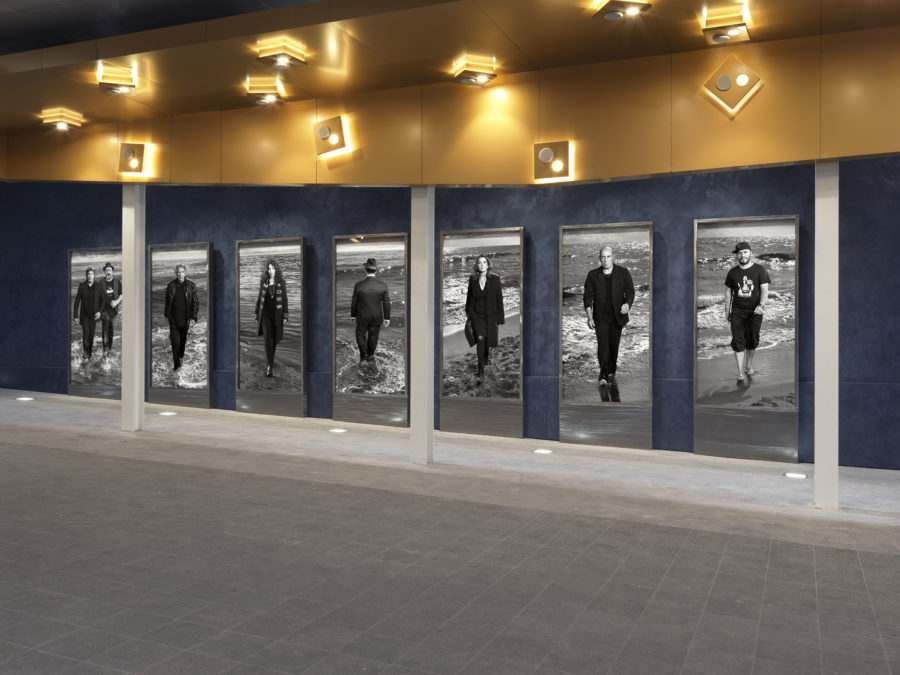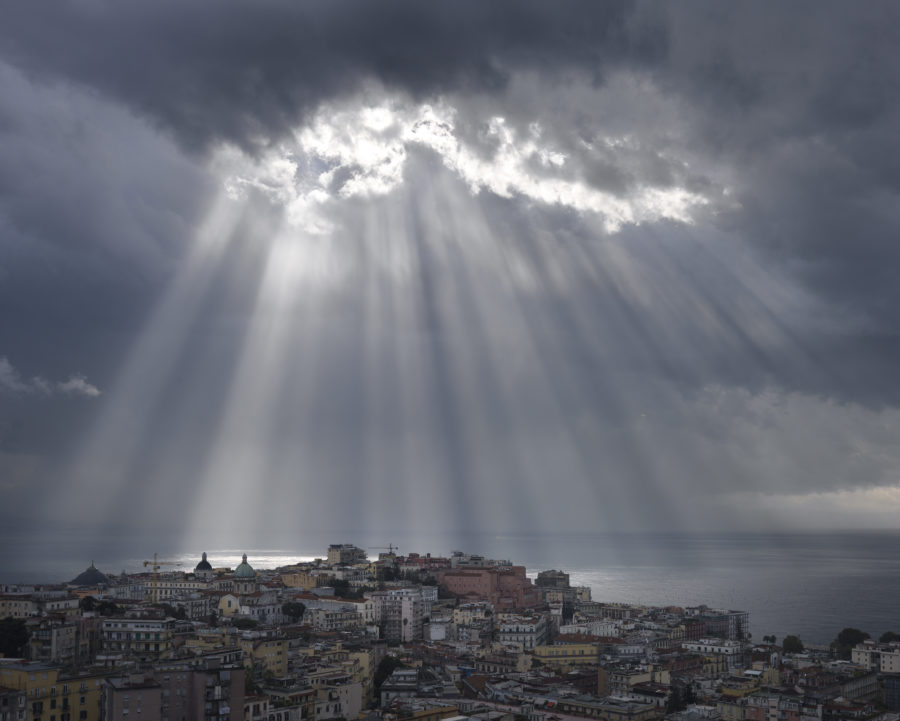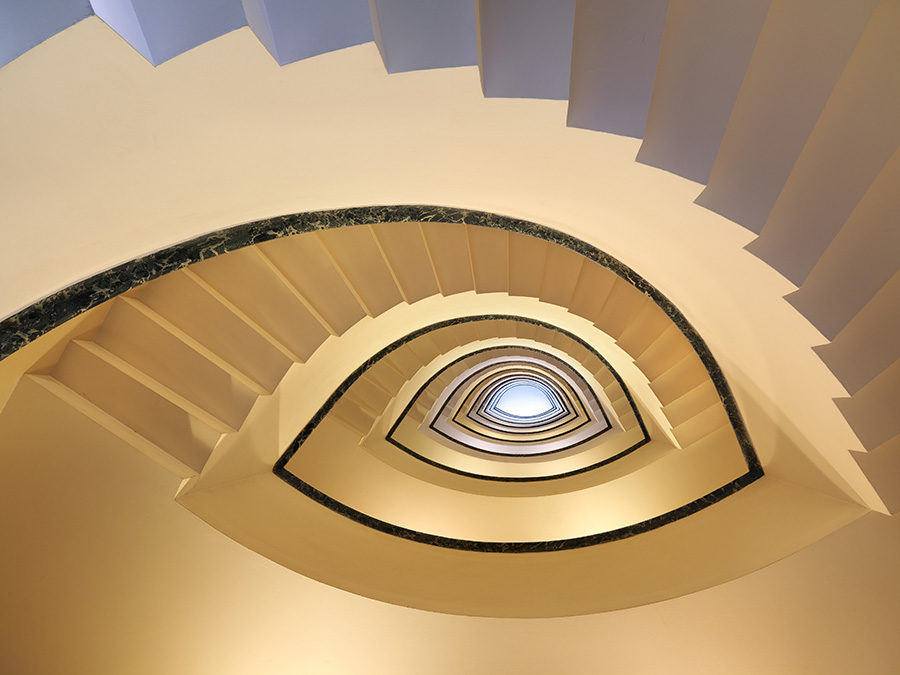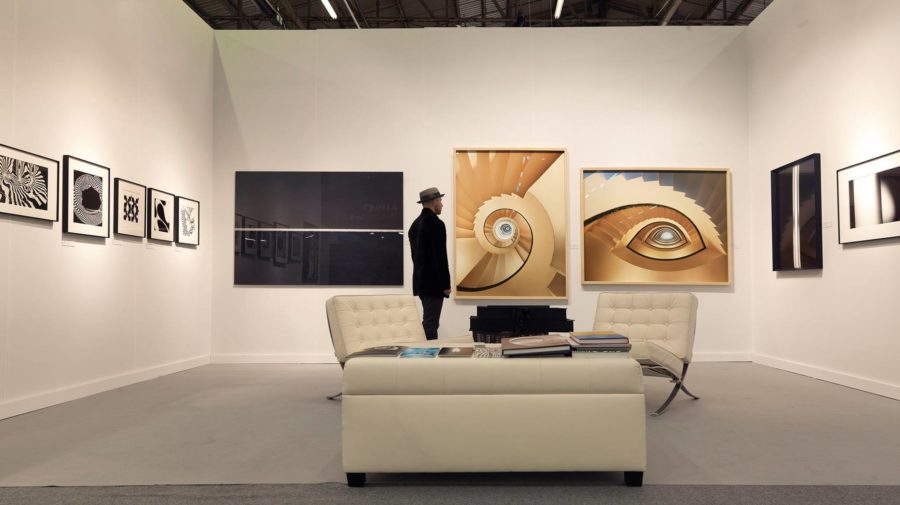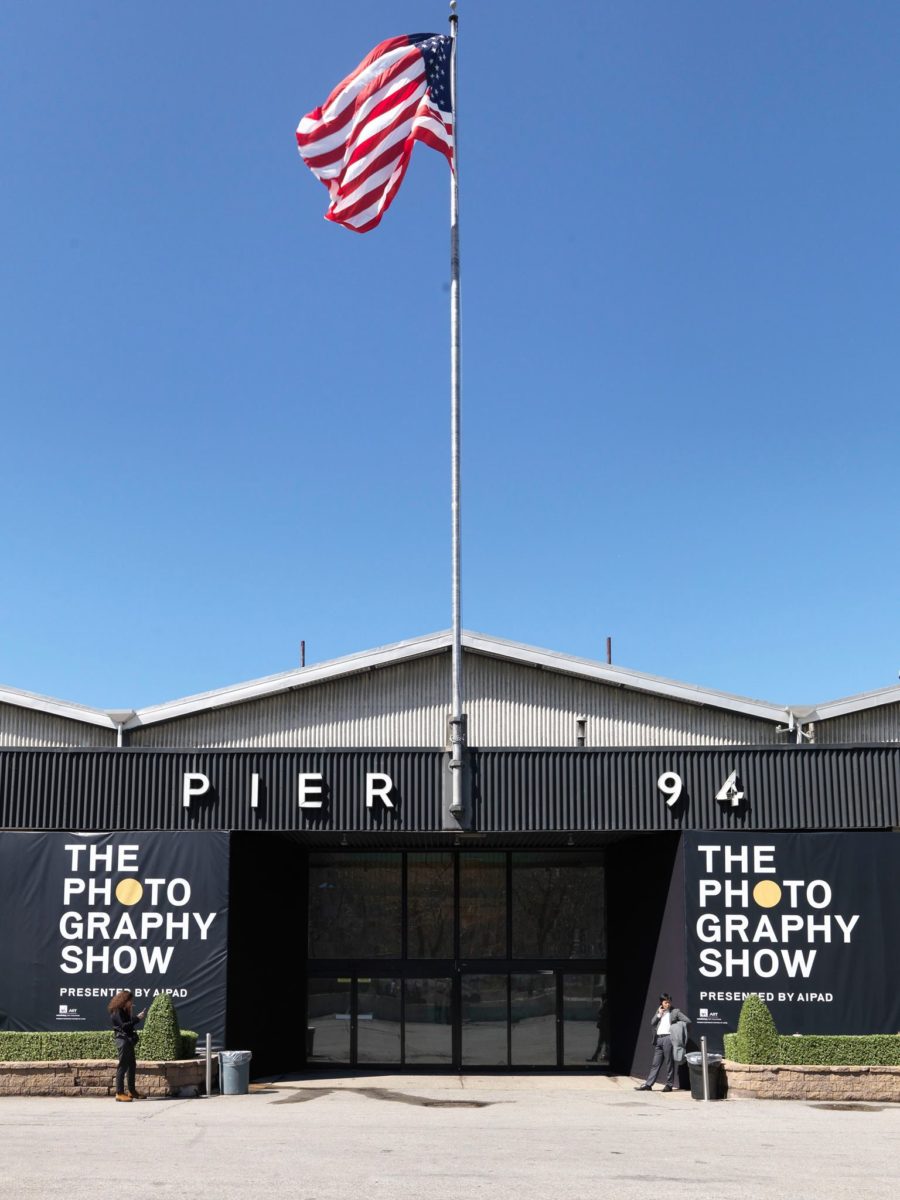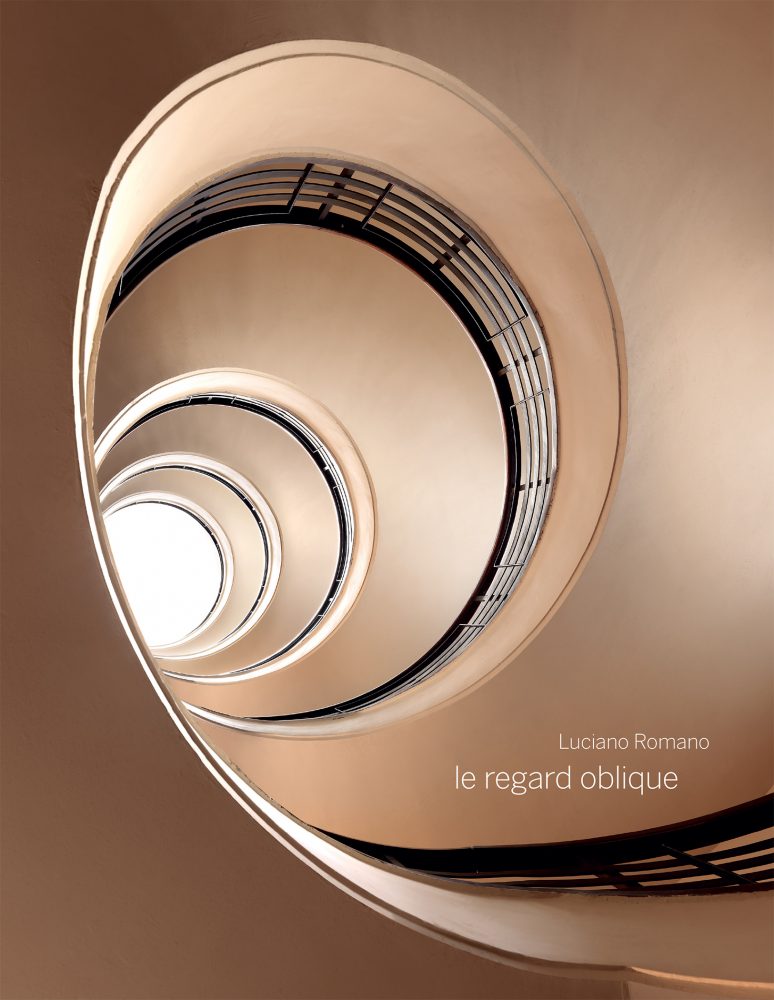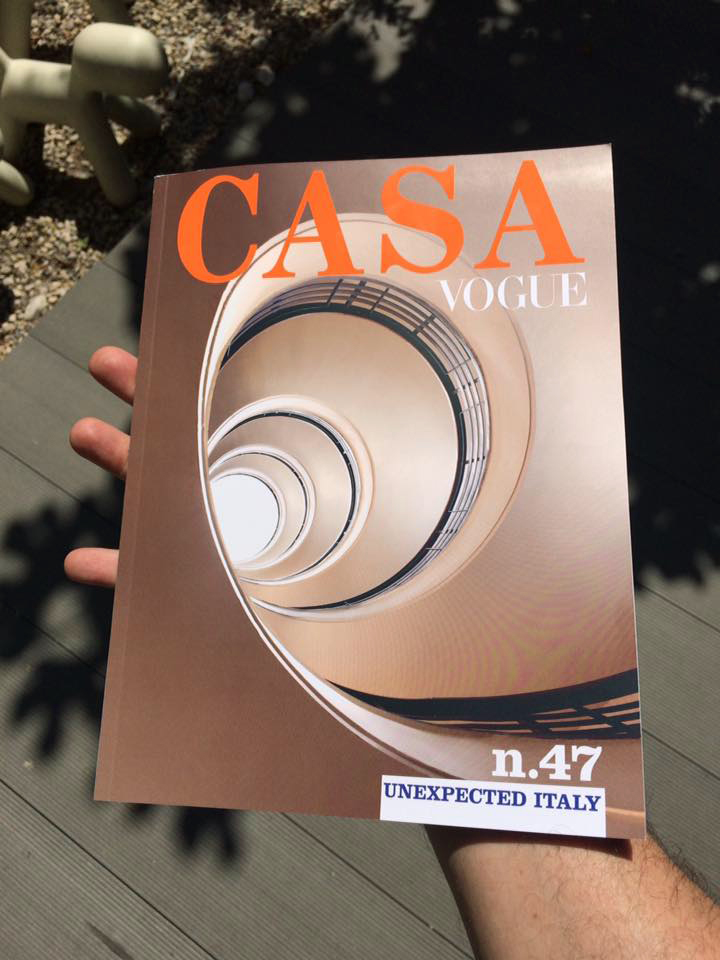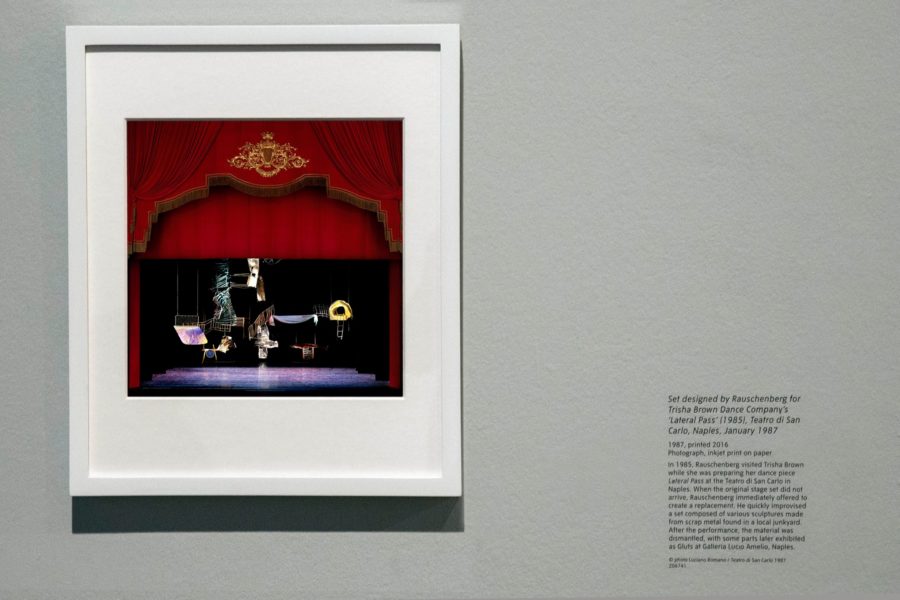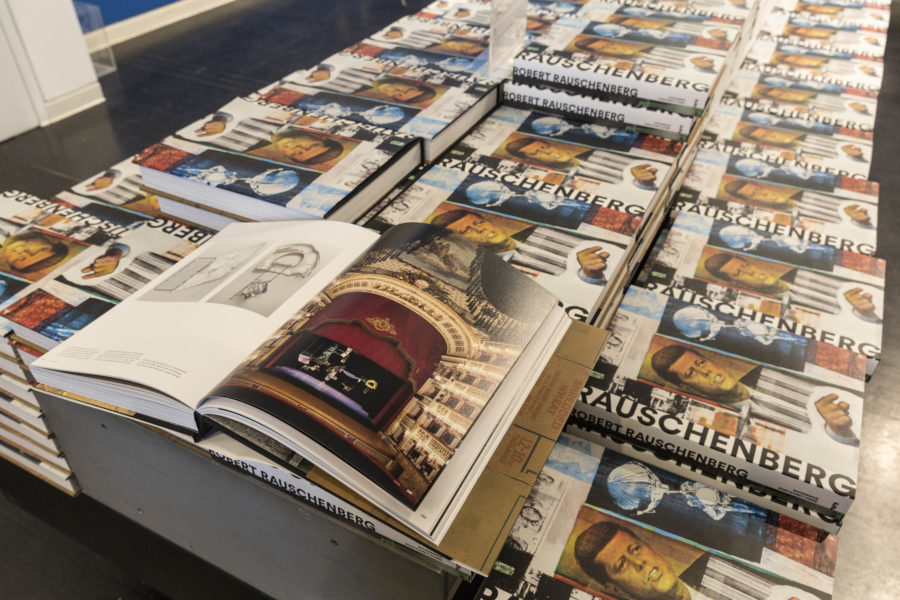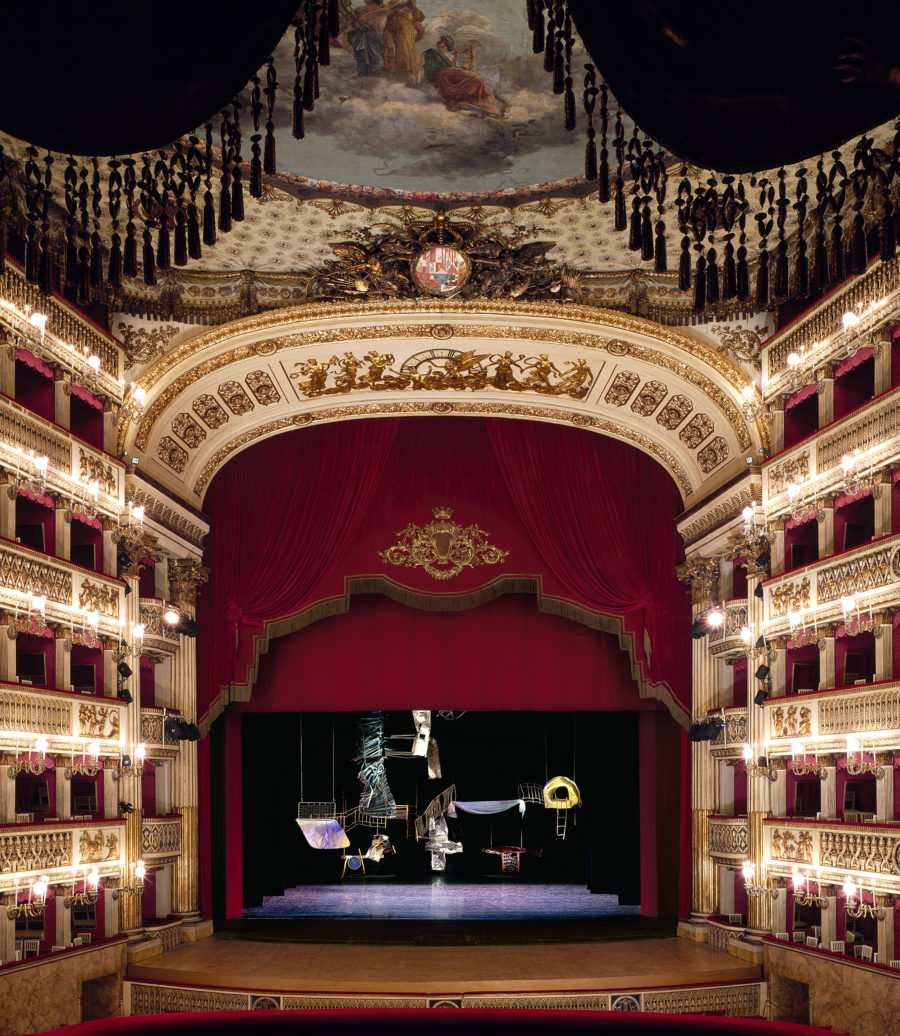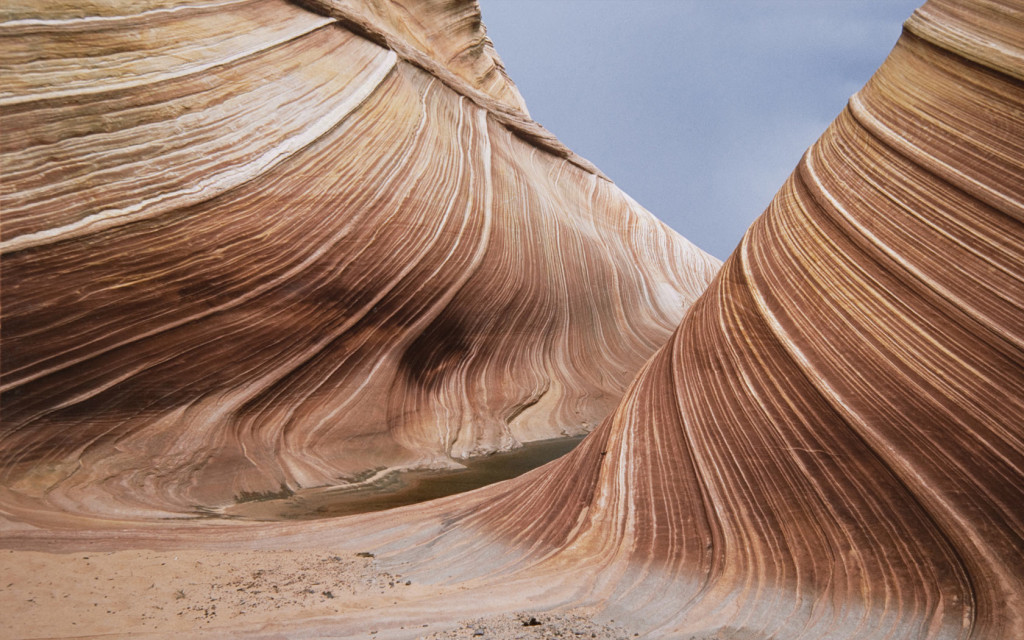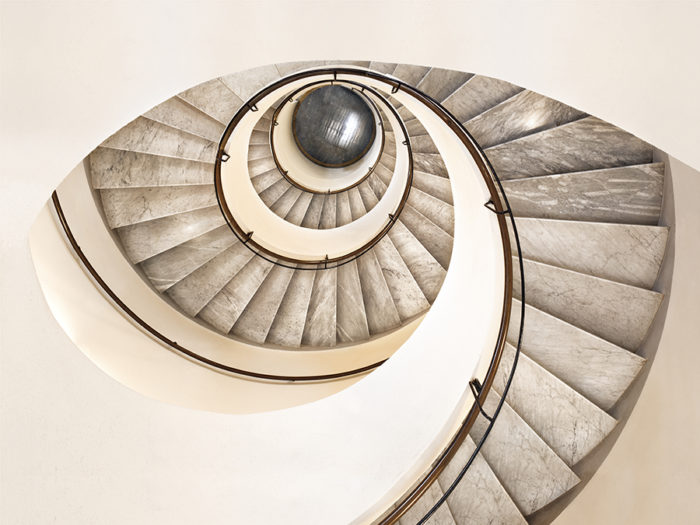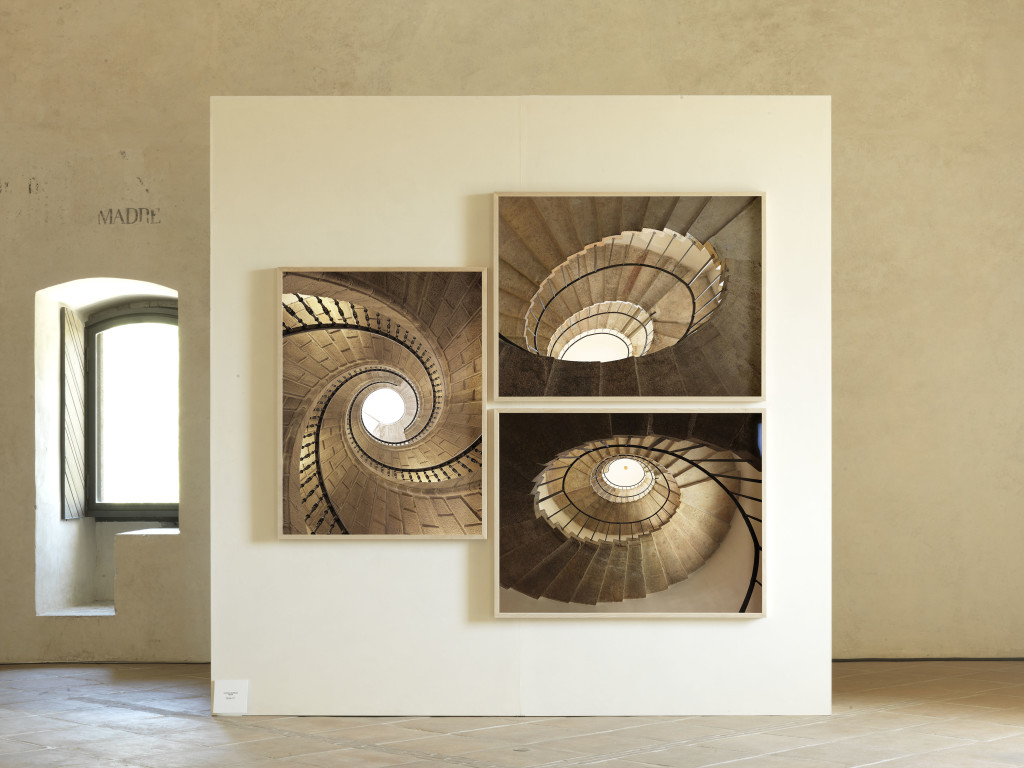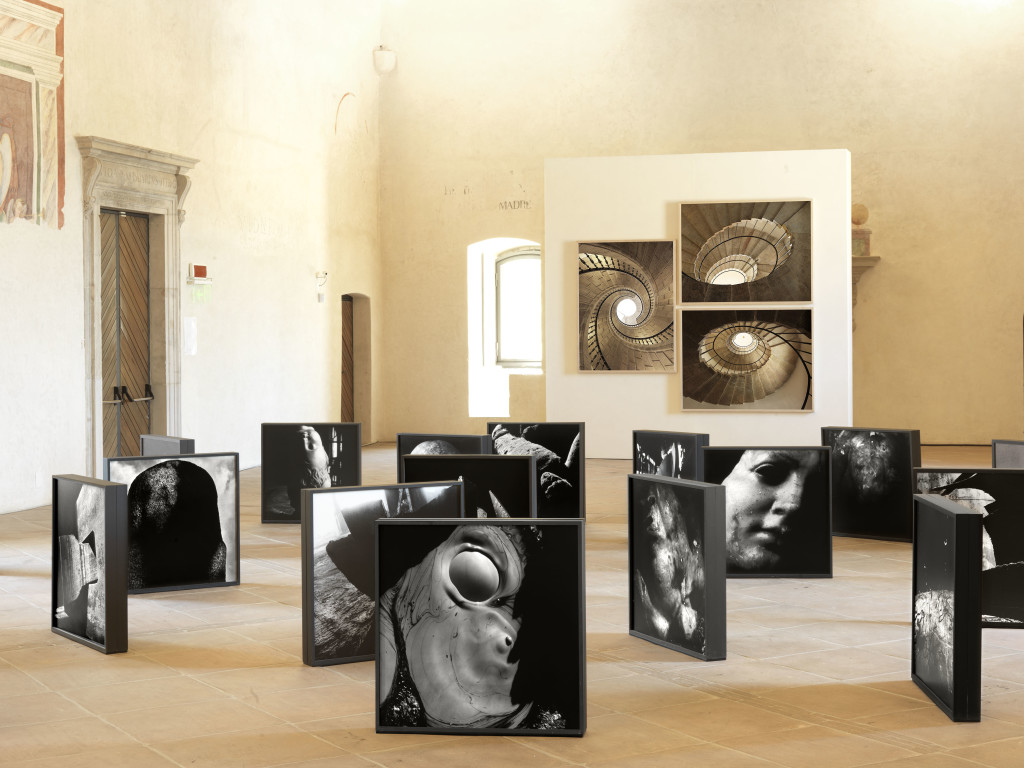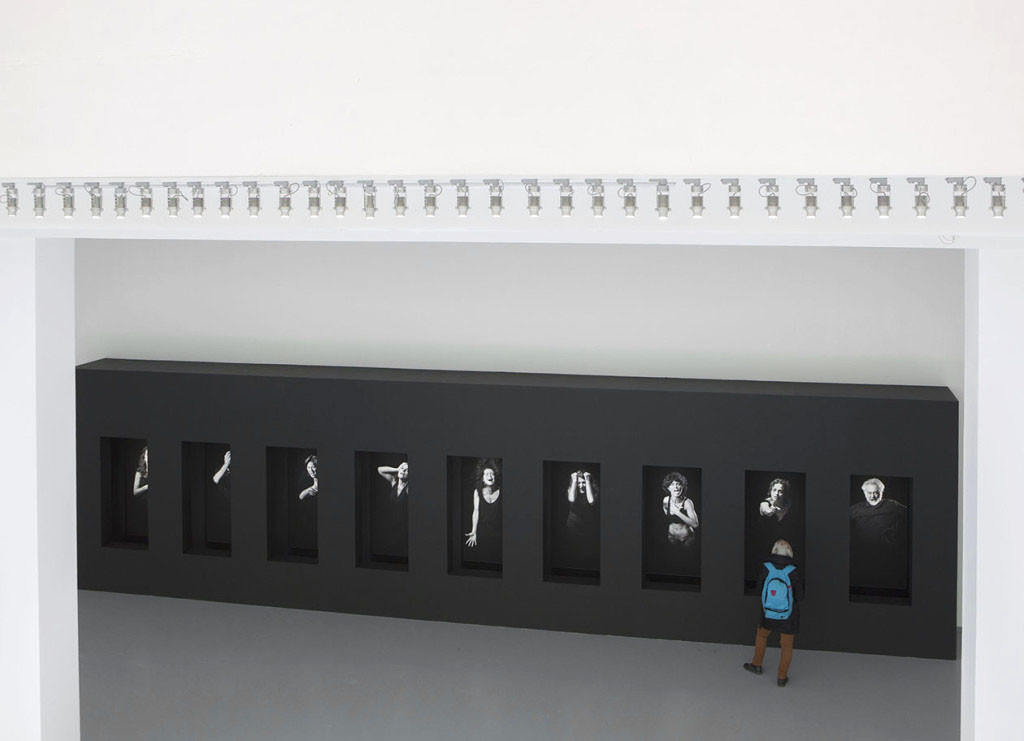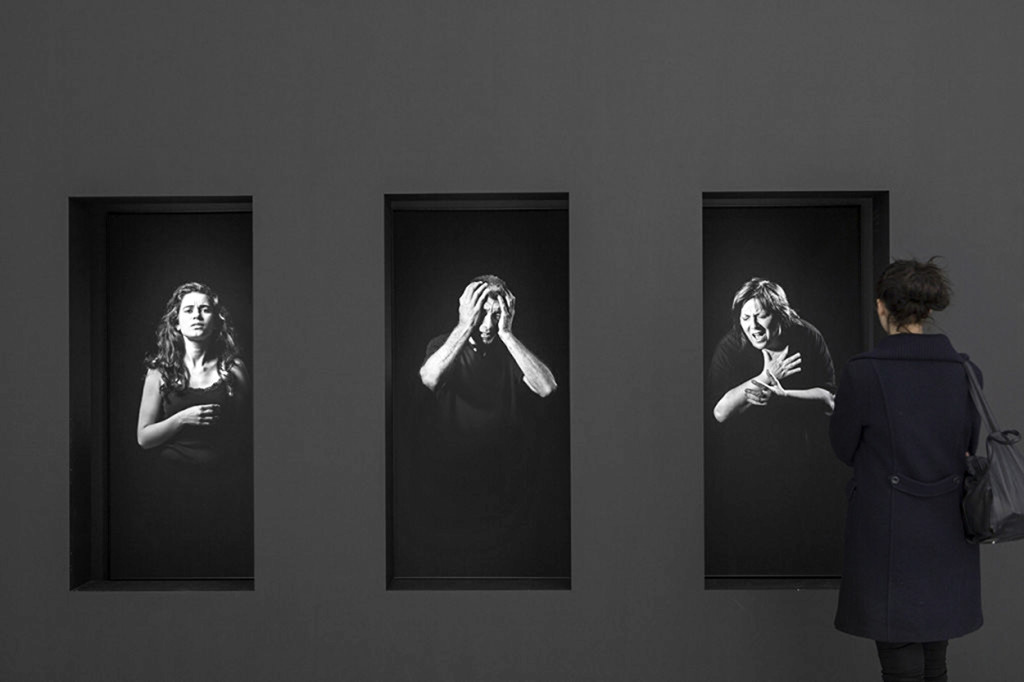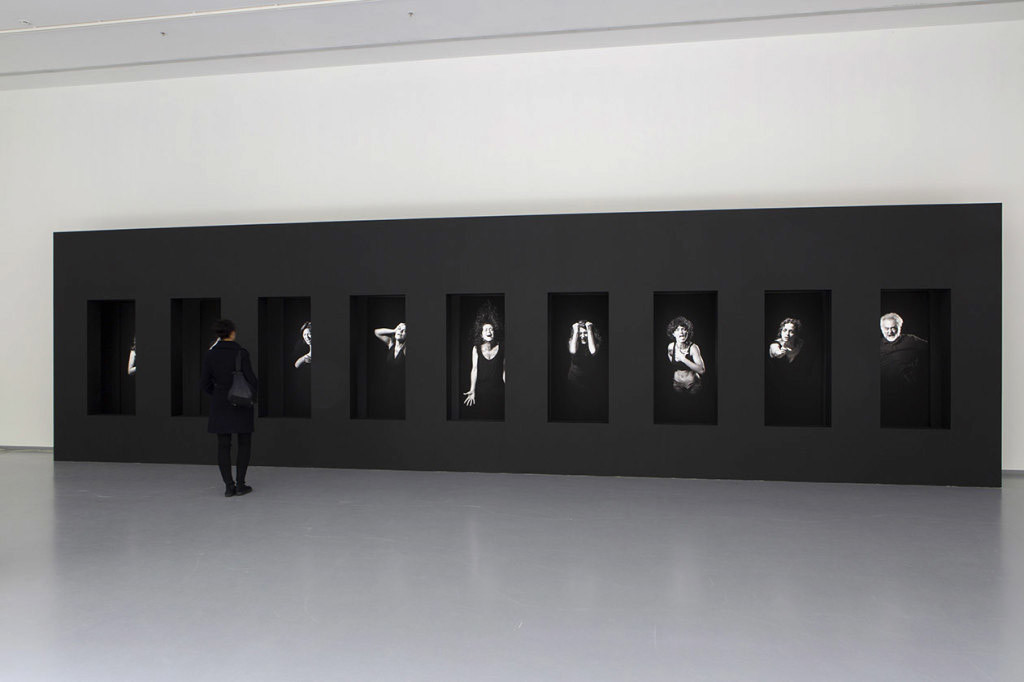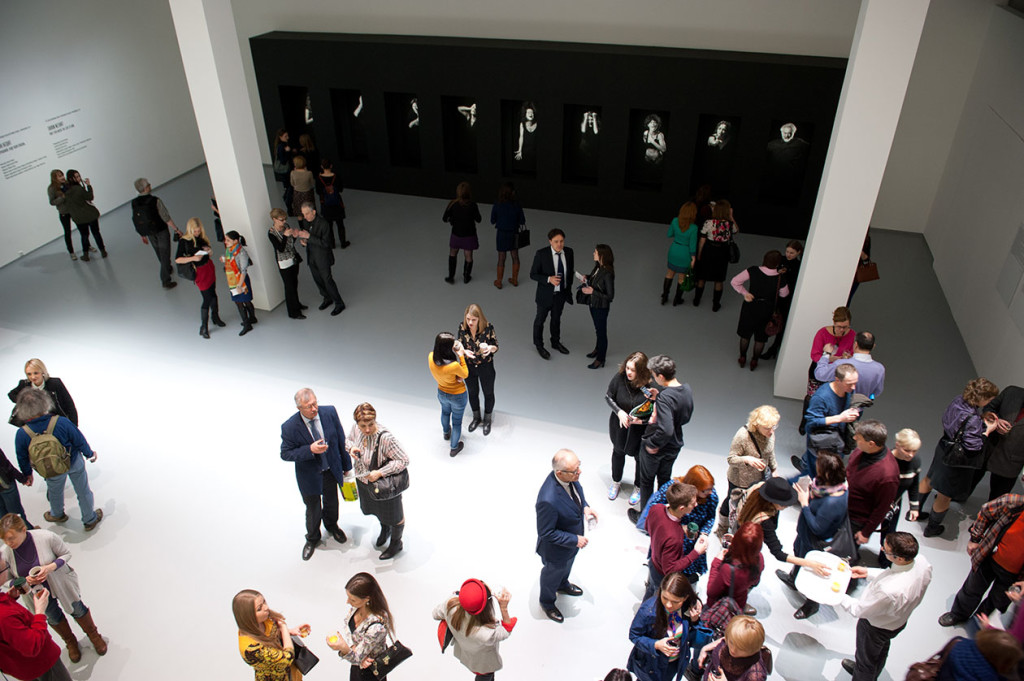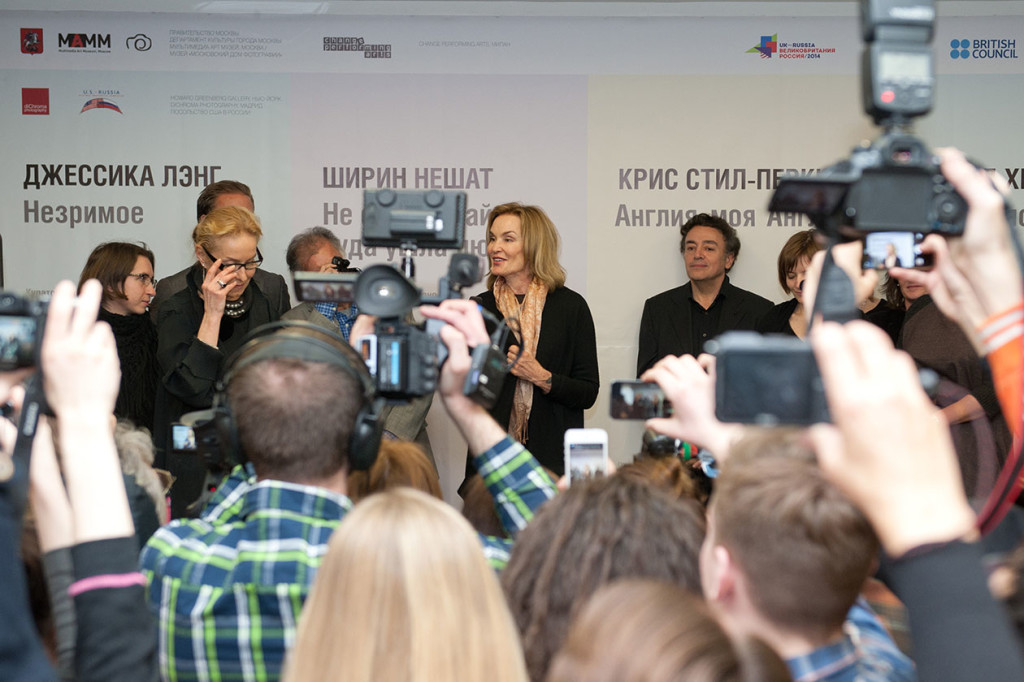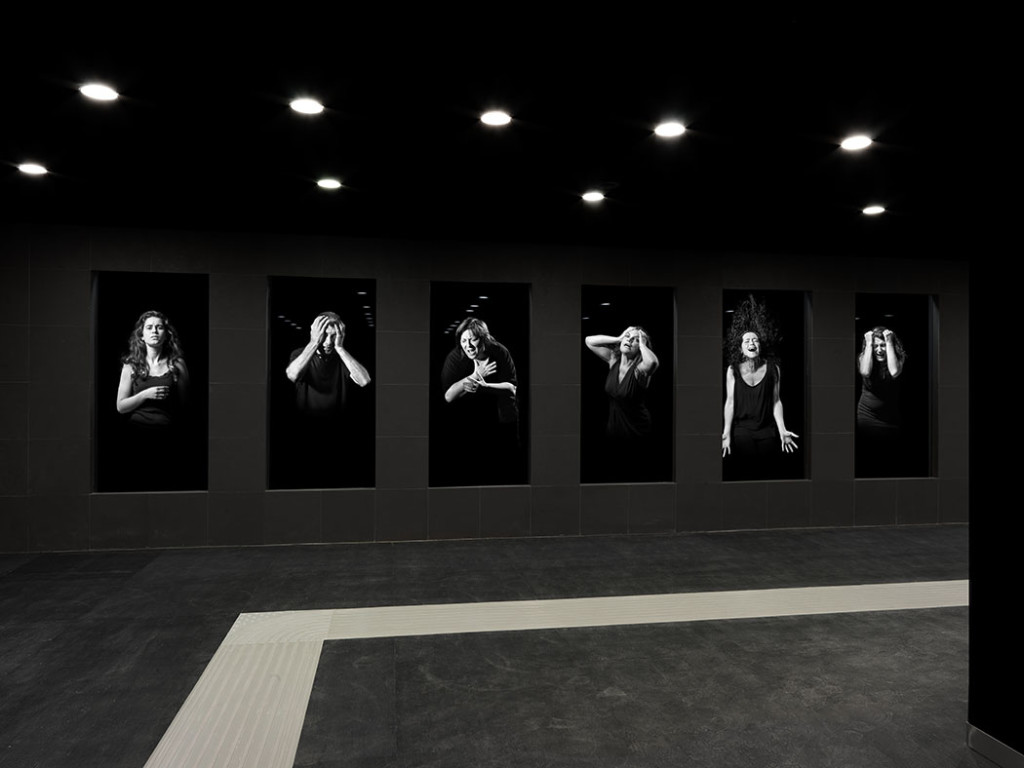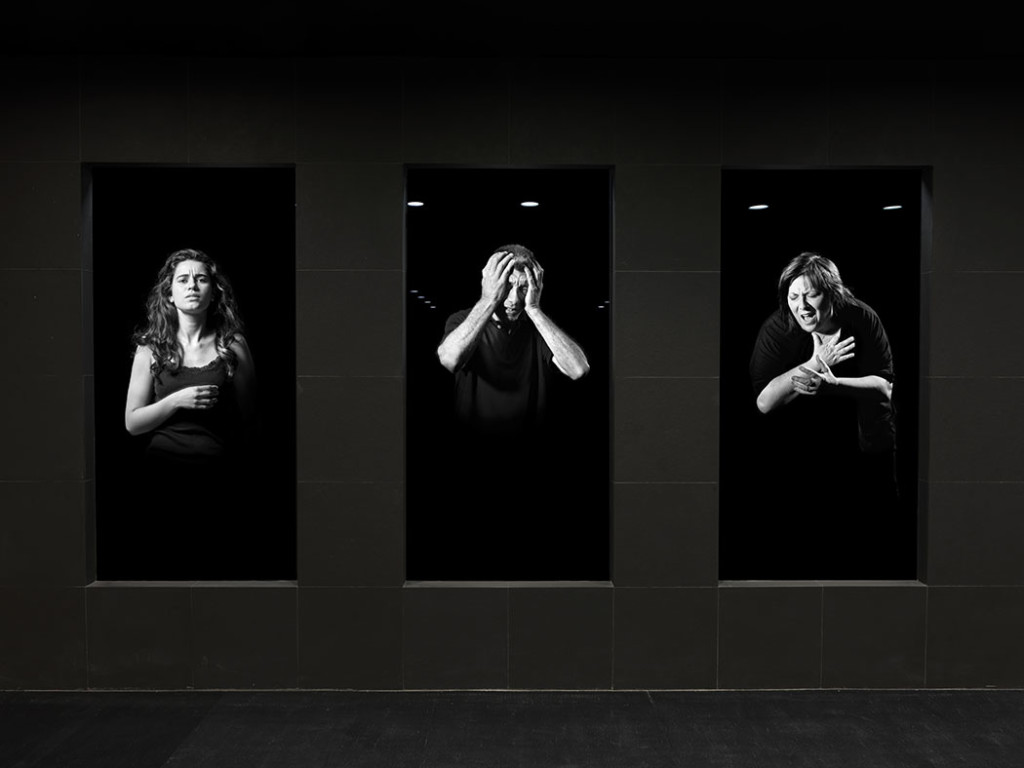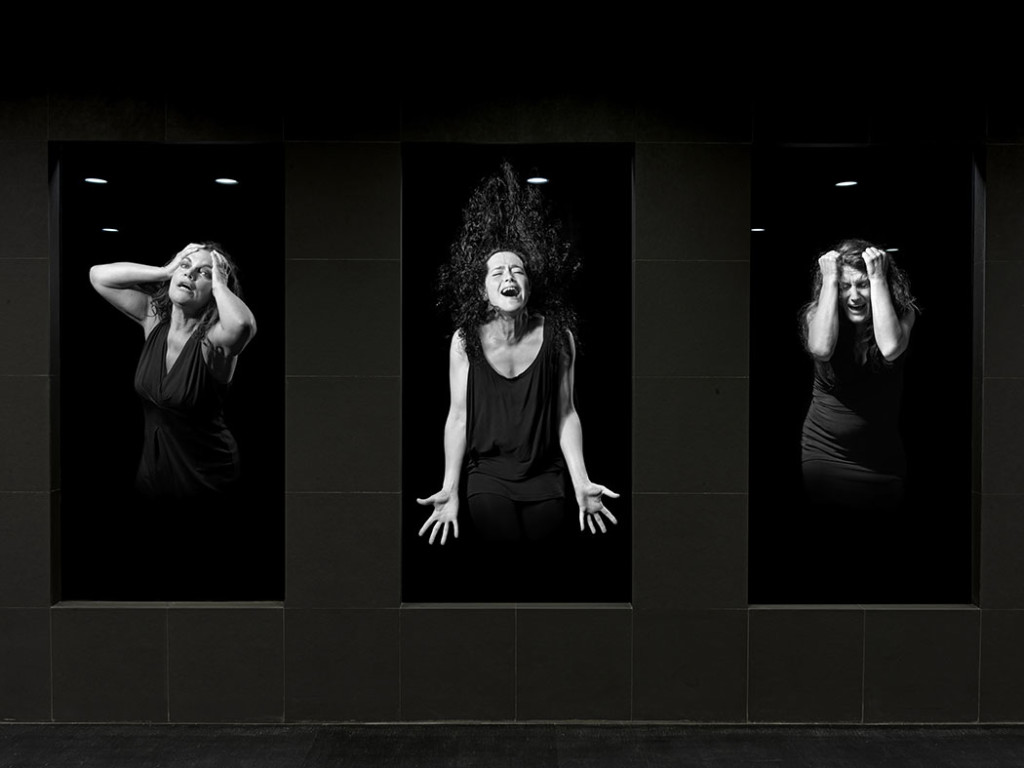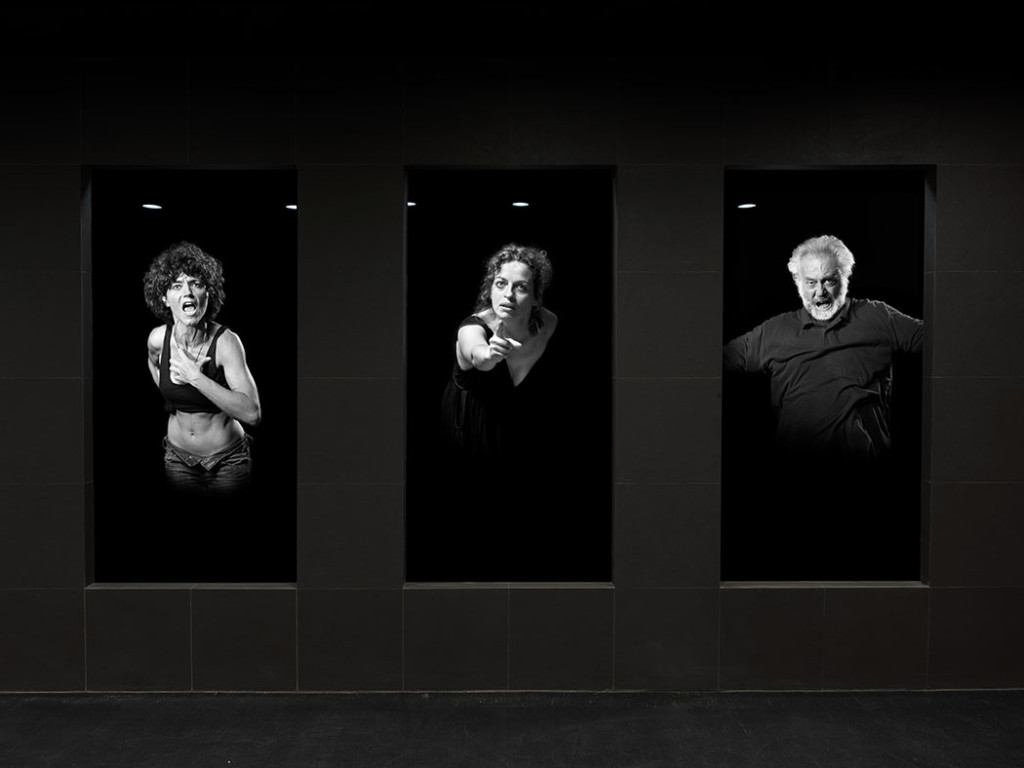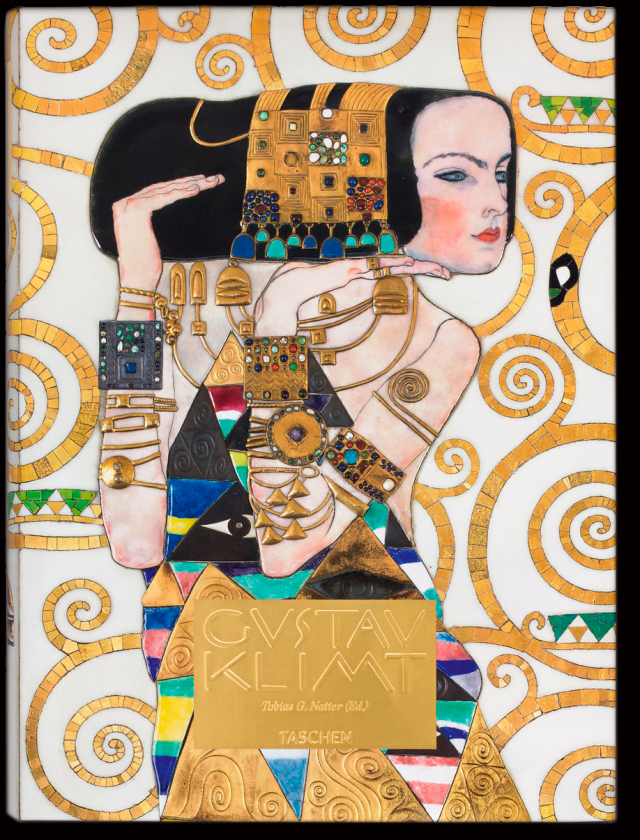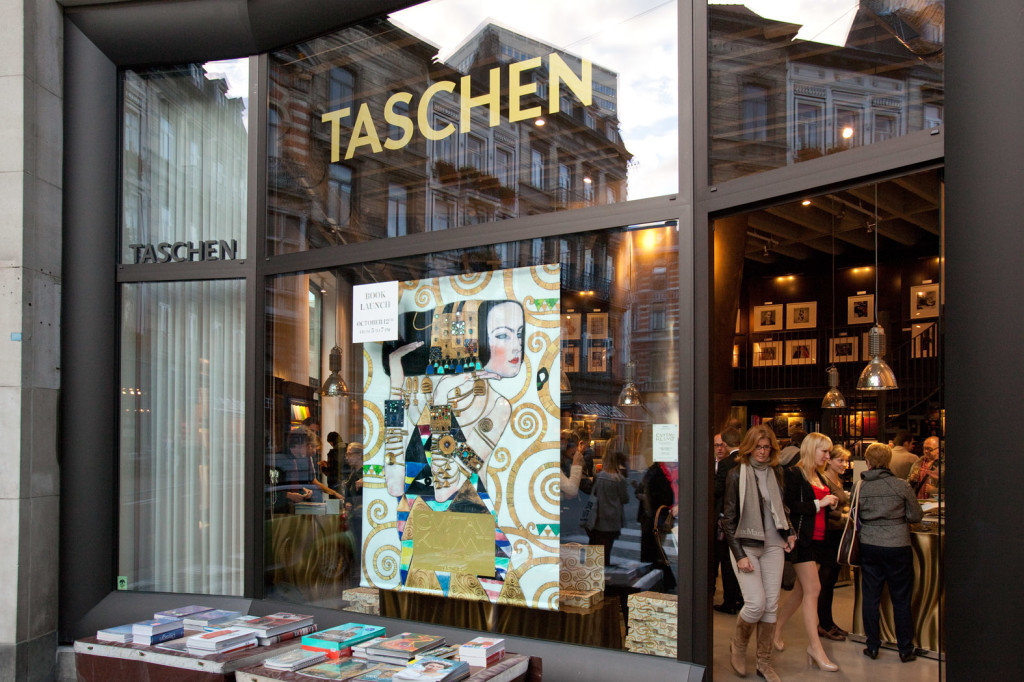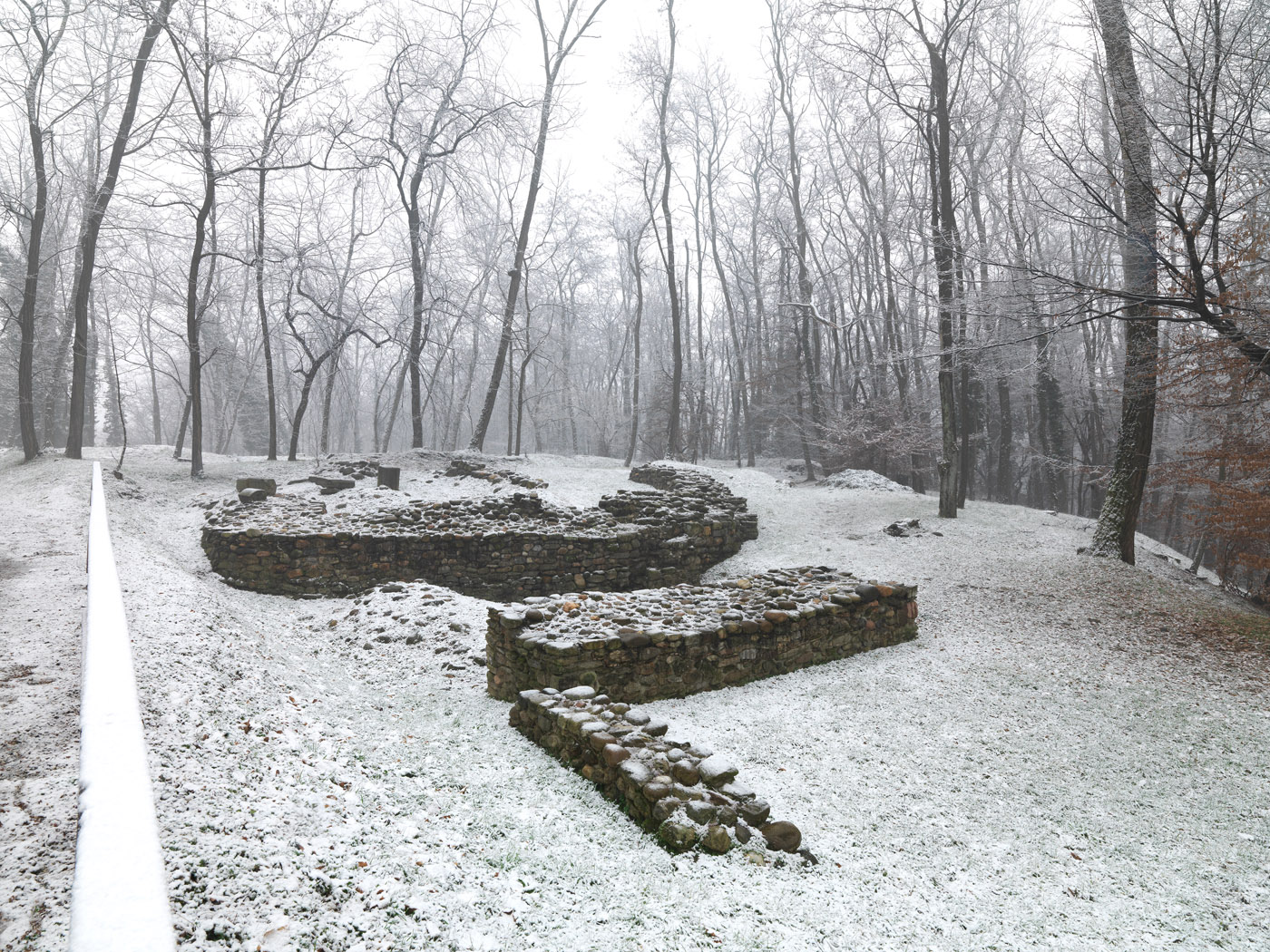Genius et Loci
Solo exhibition, Gran Galleria, Reggia di Caserta
February 29 – October 13 2024
Celebrations of the 250th anniversary of the death of Luigi Vanvitelli, winning project of the second edition of Strategia Fotografia, a call for proposals by the Directorate-General for Contemporary Creativity of the Ministry of Culture for the selection of proposals for the acquisition and valorization of photography and the Italian photographic heritage.
Celebrazioni del 250° anniversario della morte di Luigi Vanvitelli, progetto vincitore della seconda edizione di Strategia Fotografia, bando della Direzione Generale Creatività Contemporanea del Ministero della Cultura per la selezione di proposte di acquisizione e valorizzazione della fotografia e del patrimonio fotografico italiano.
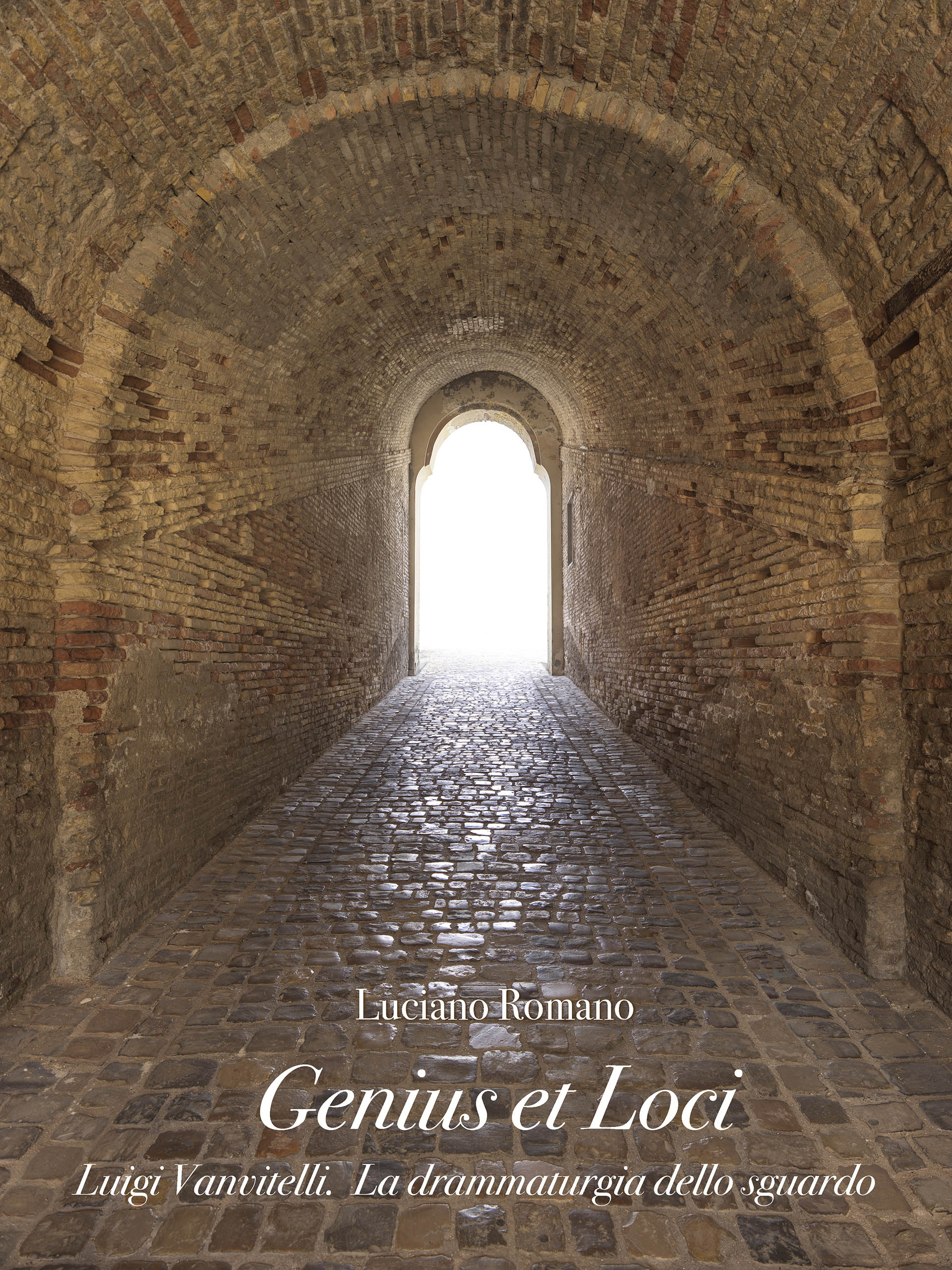
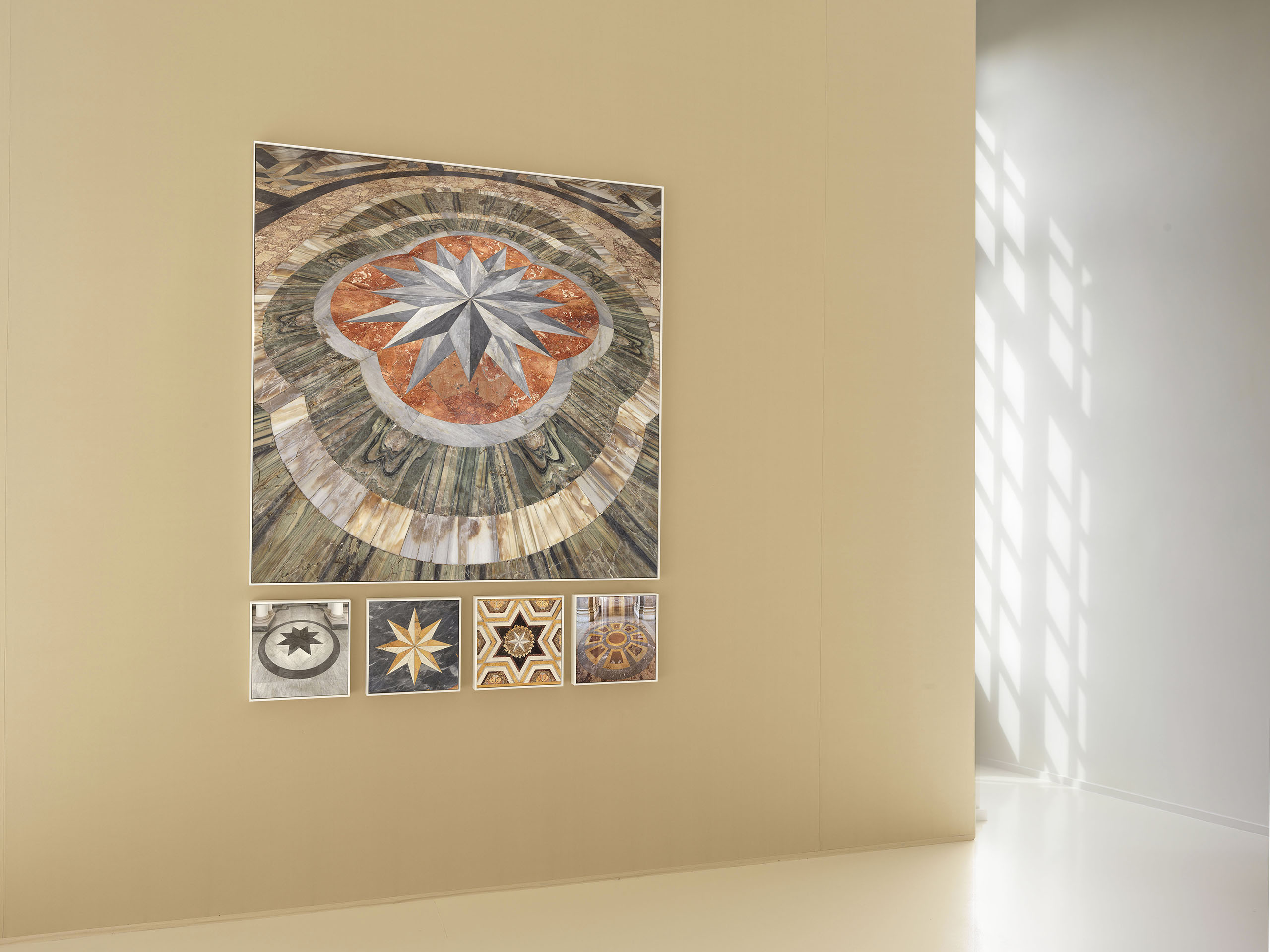
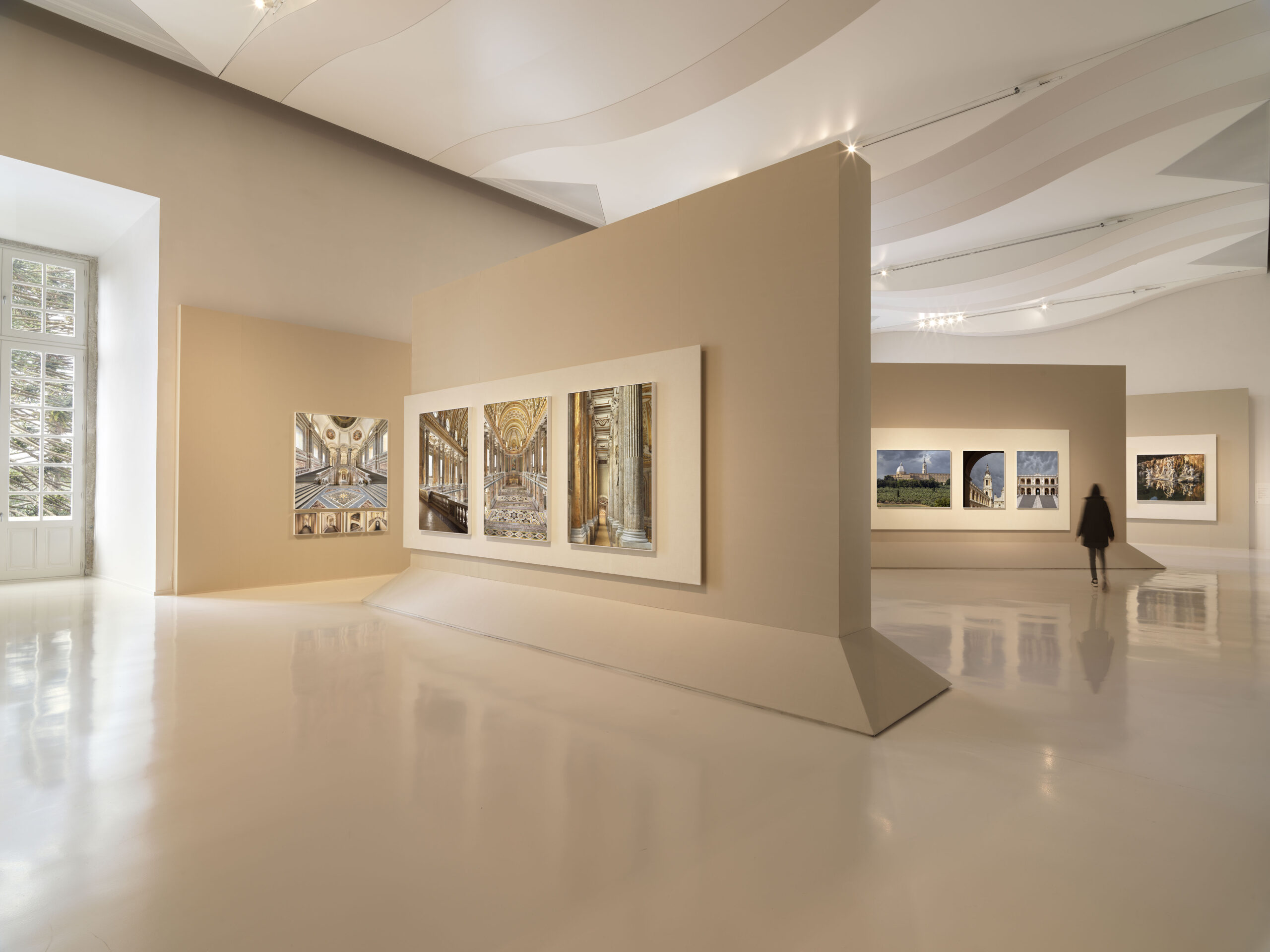
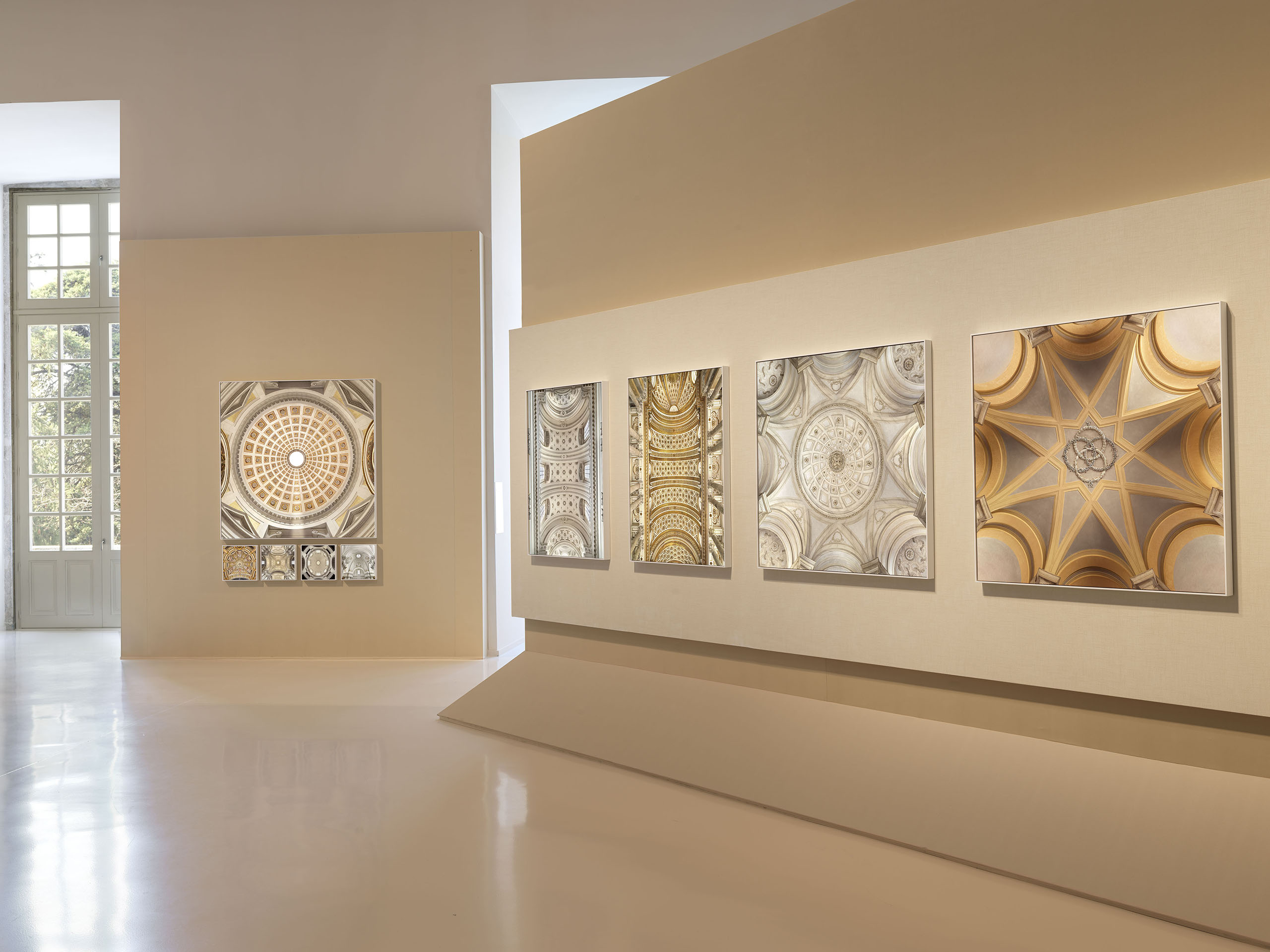
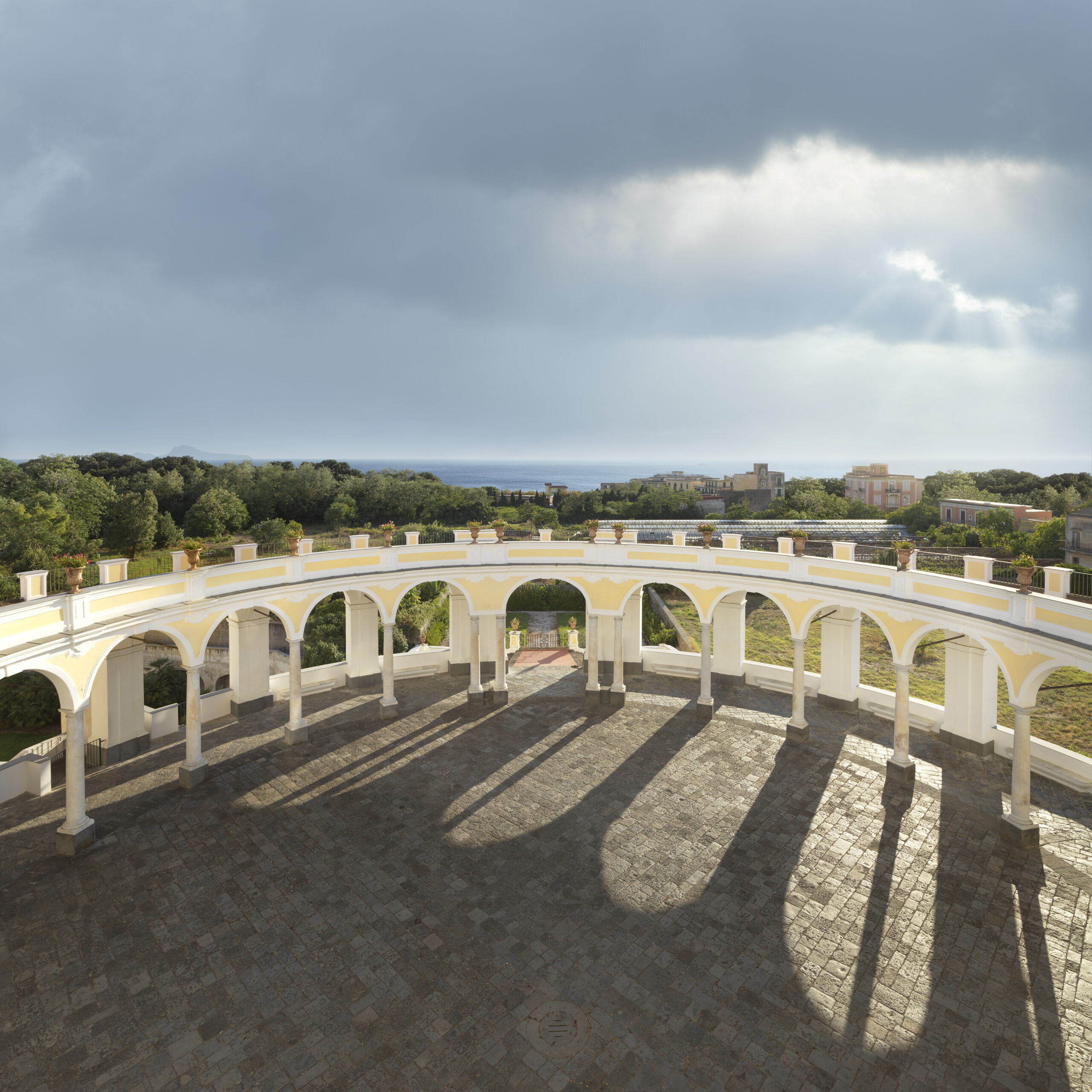
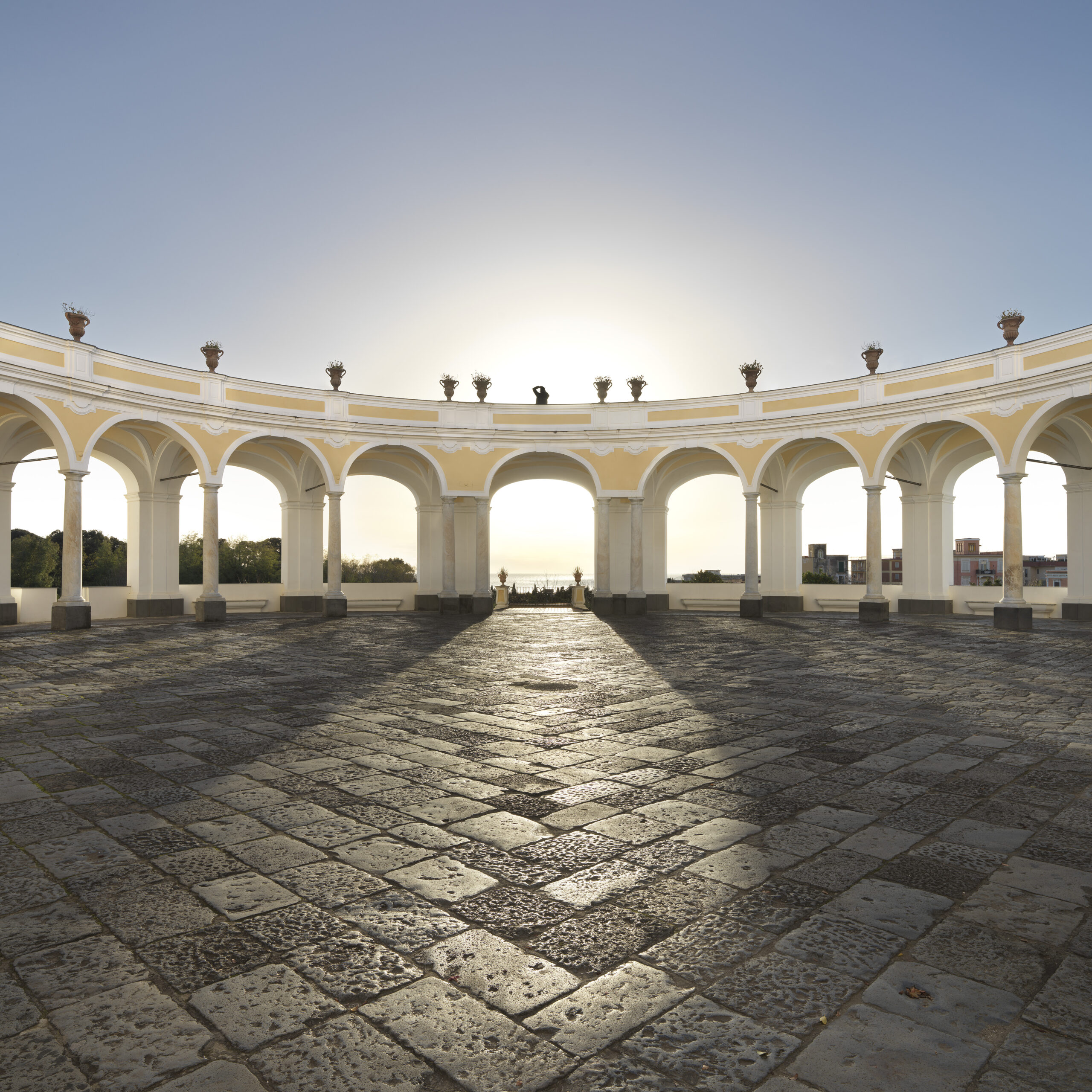
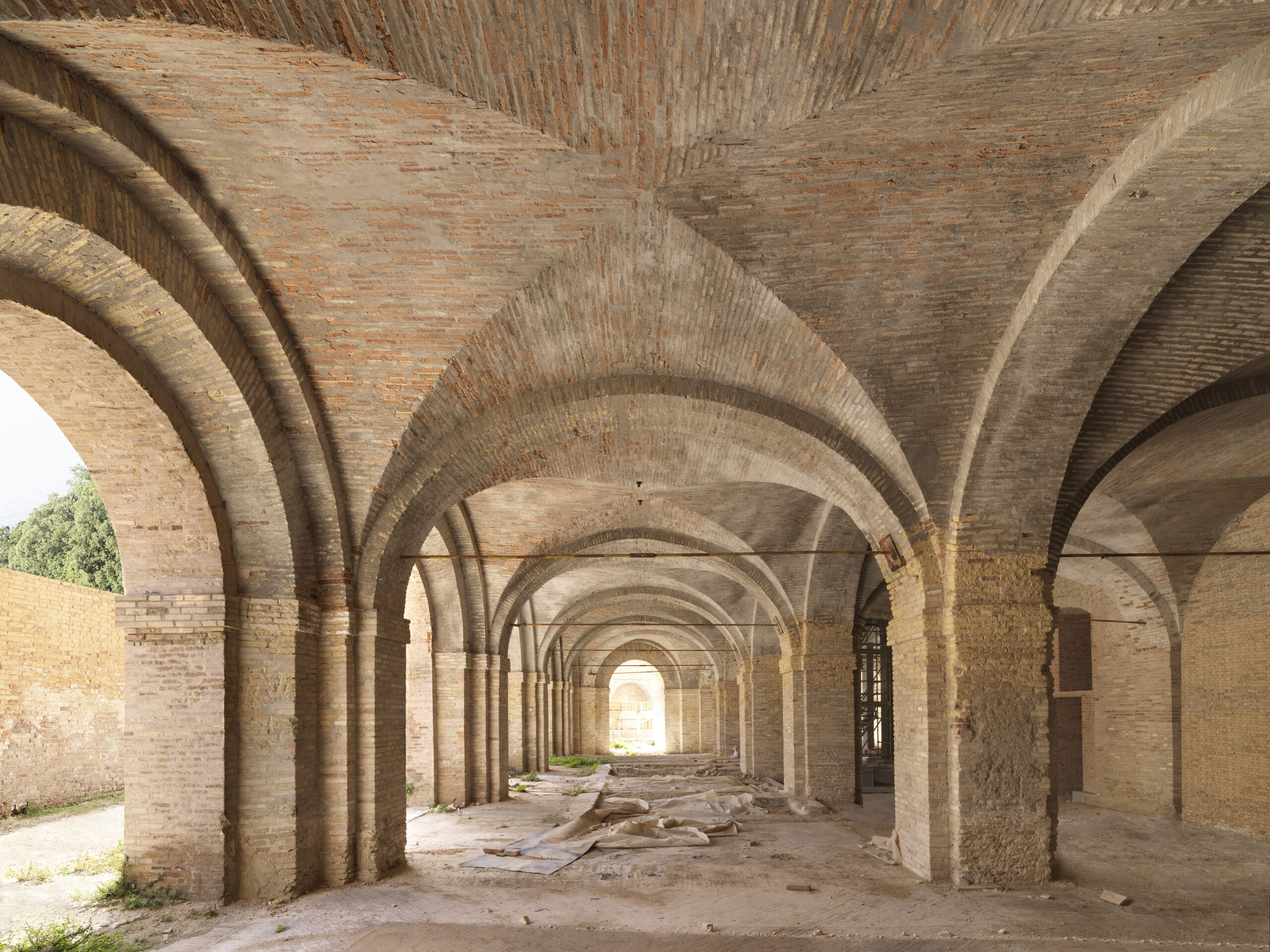
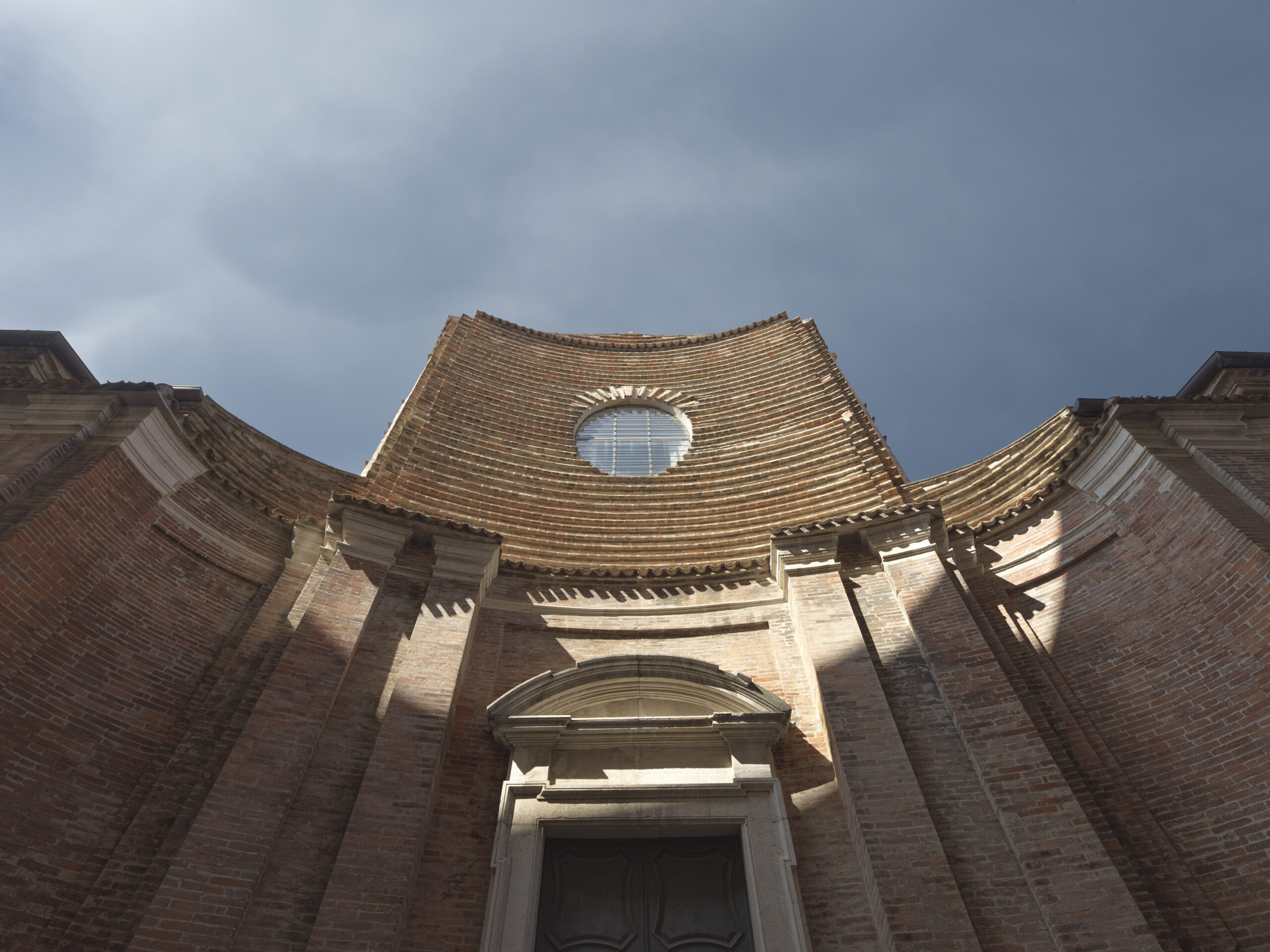
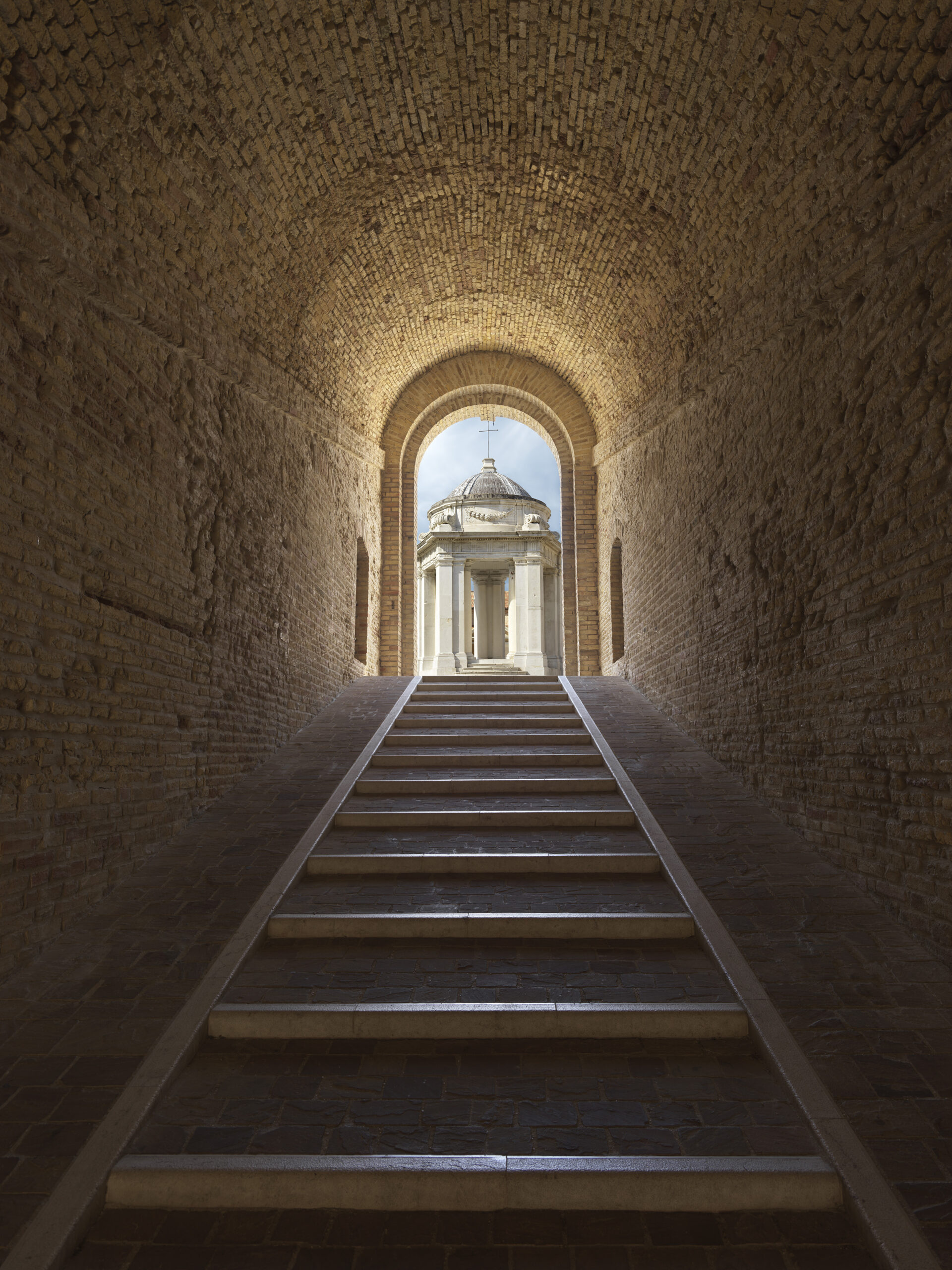
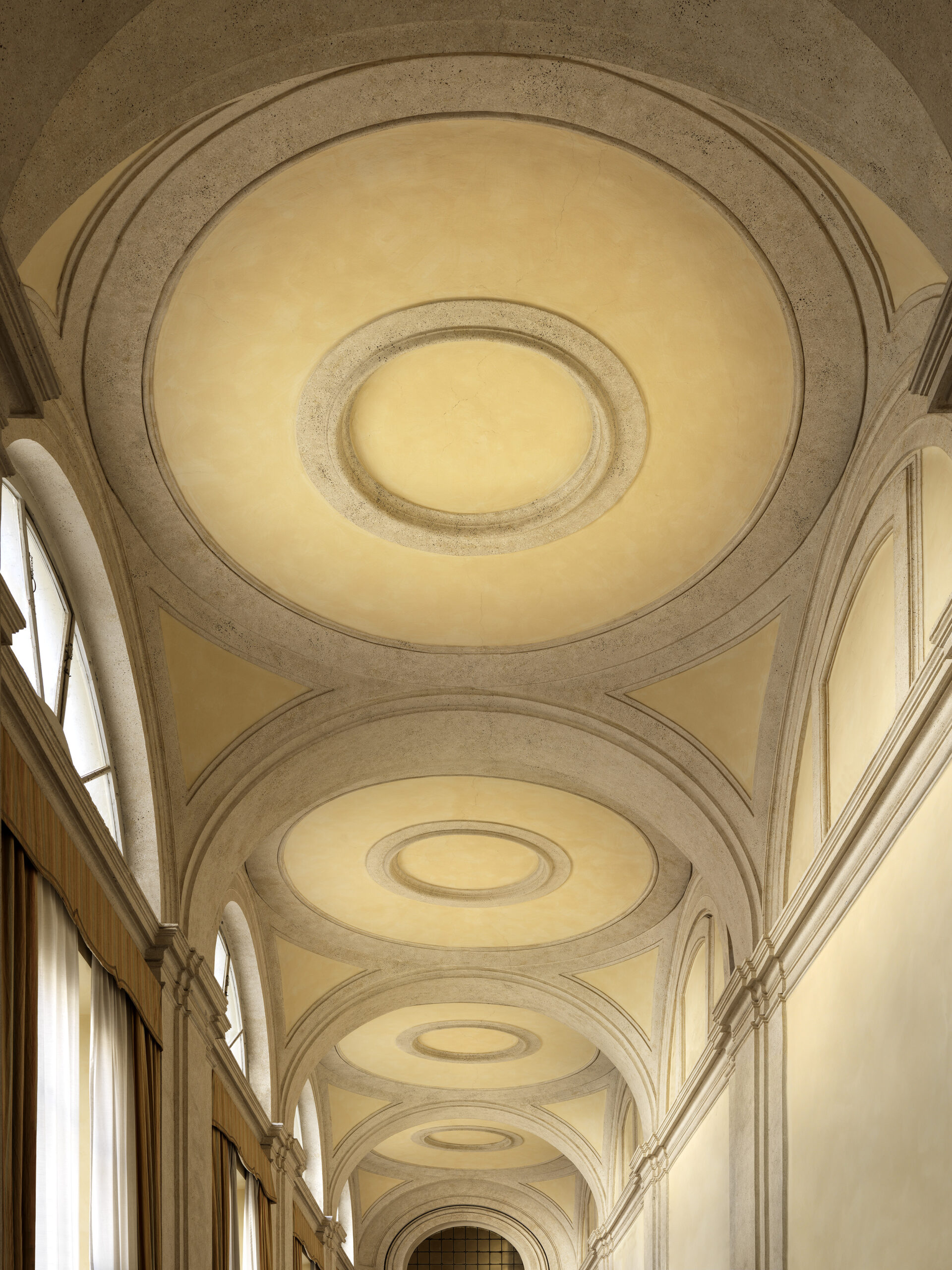
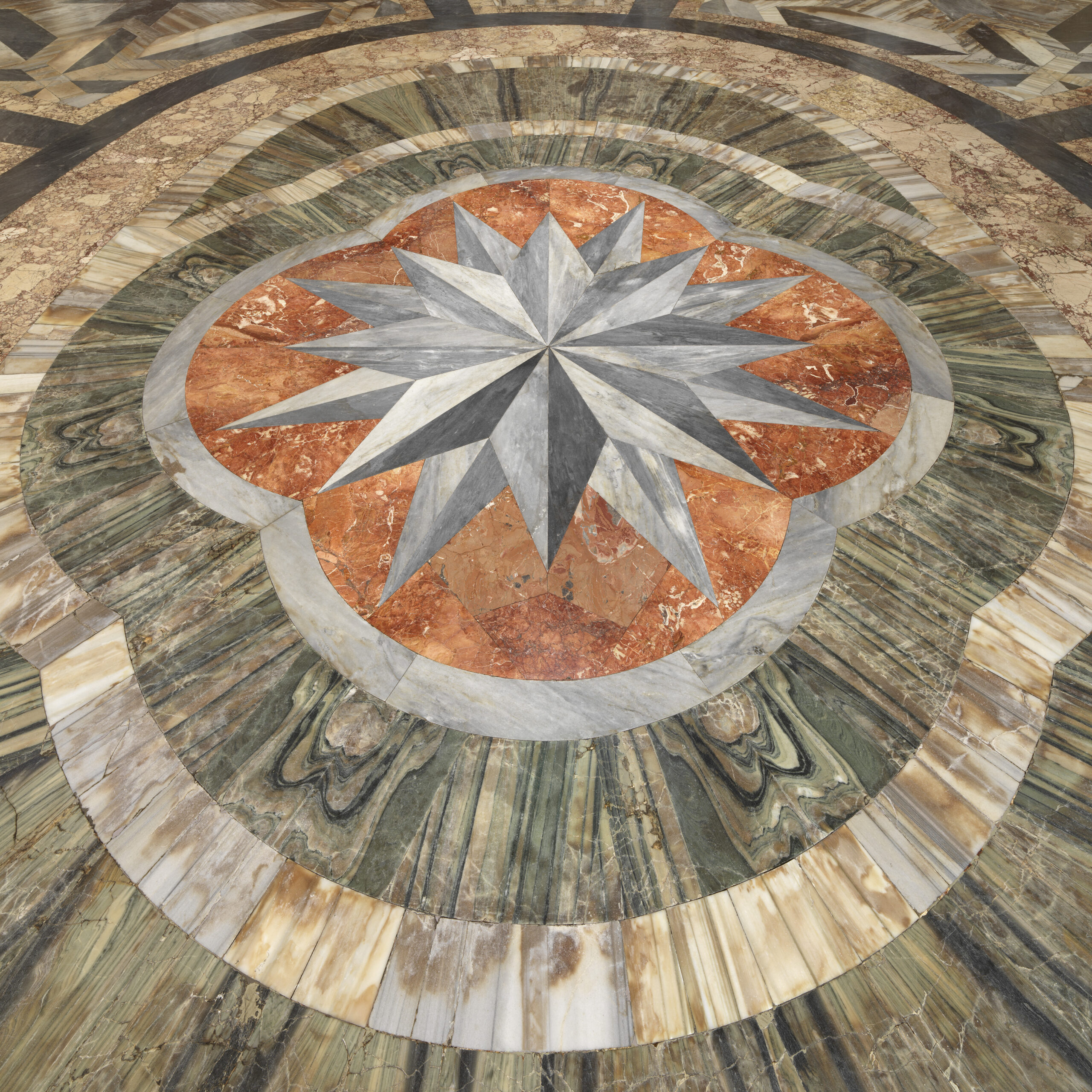
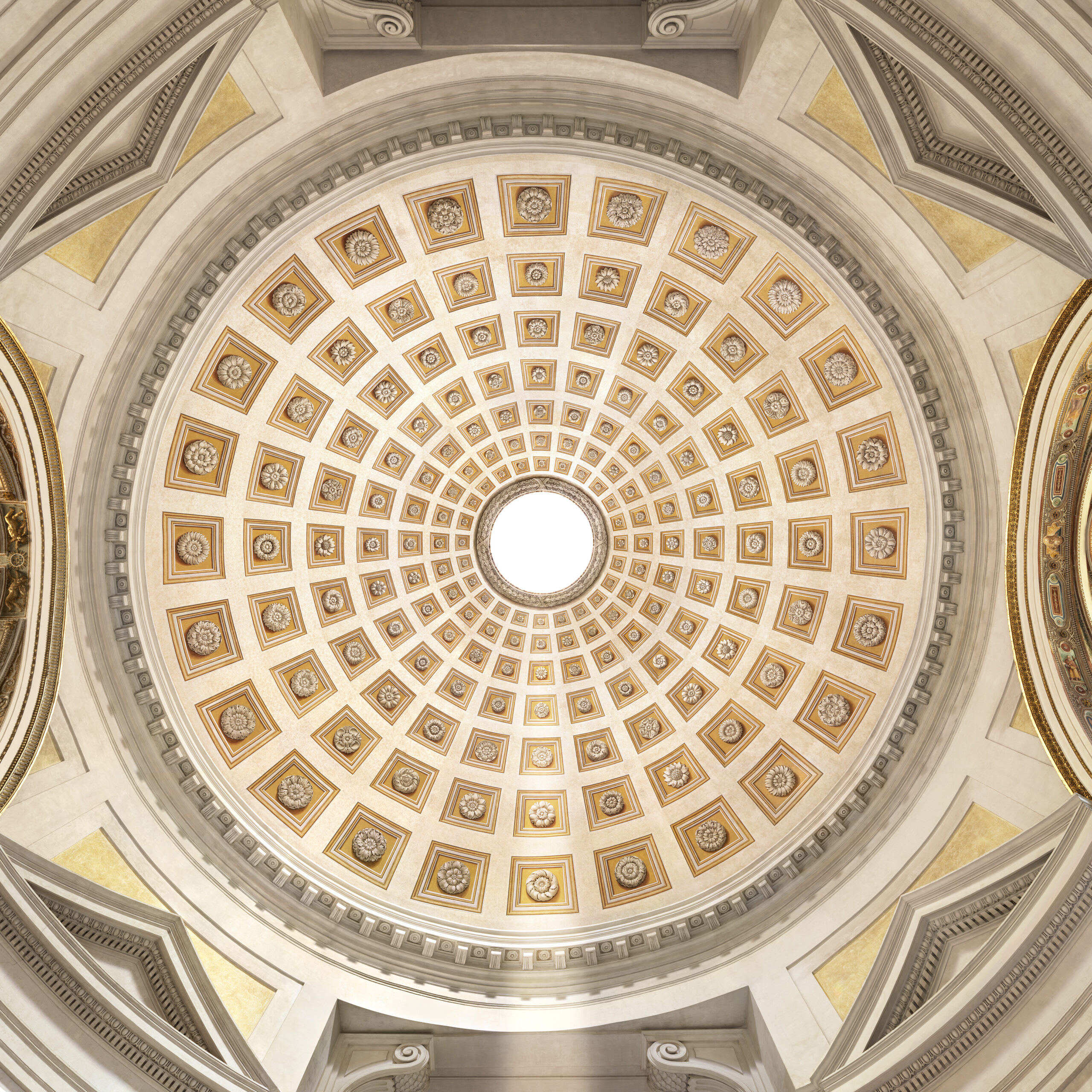
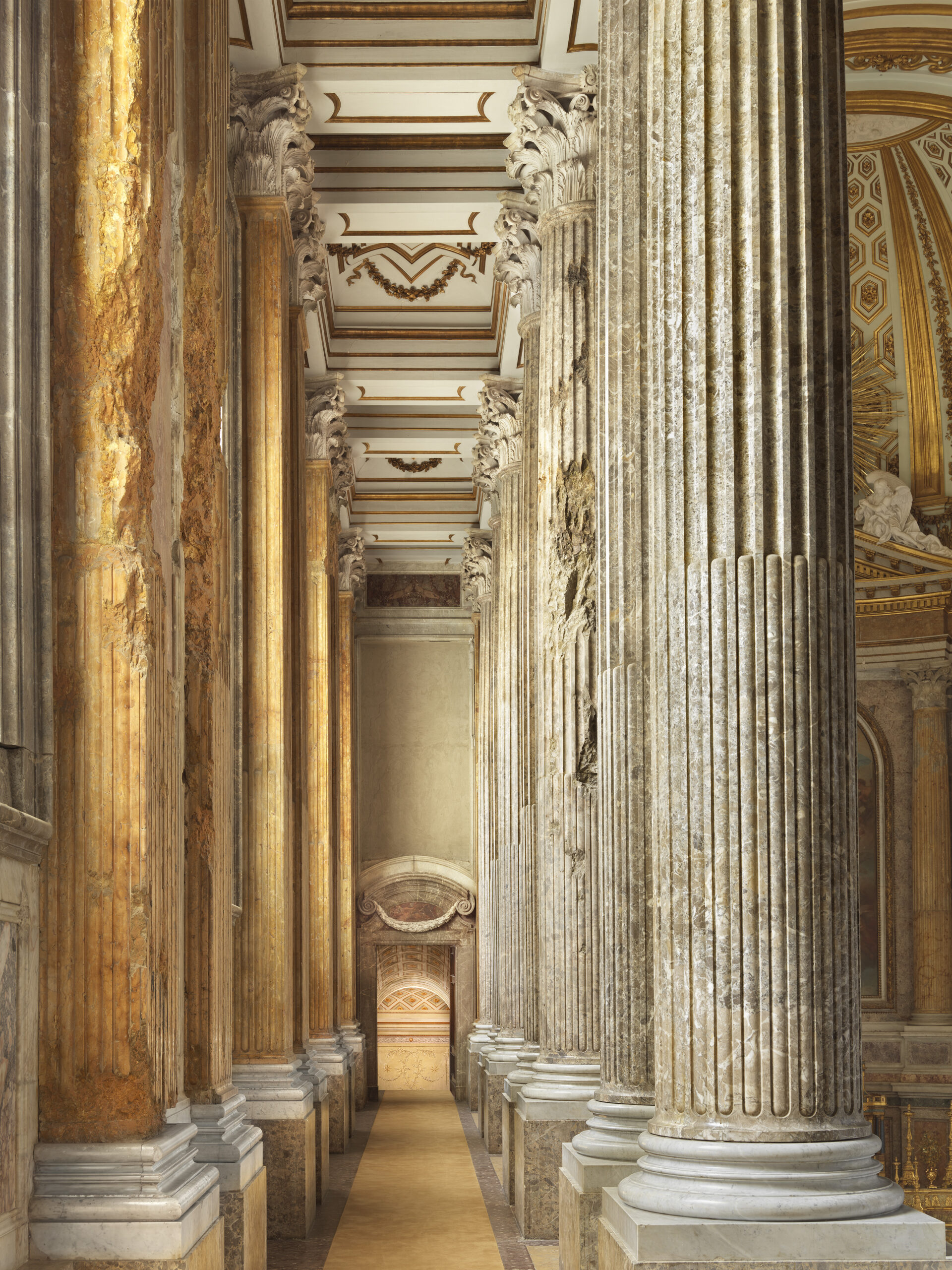
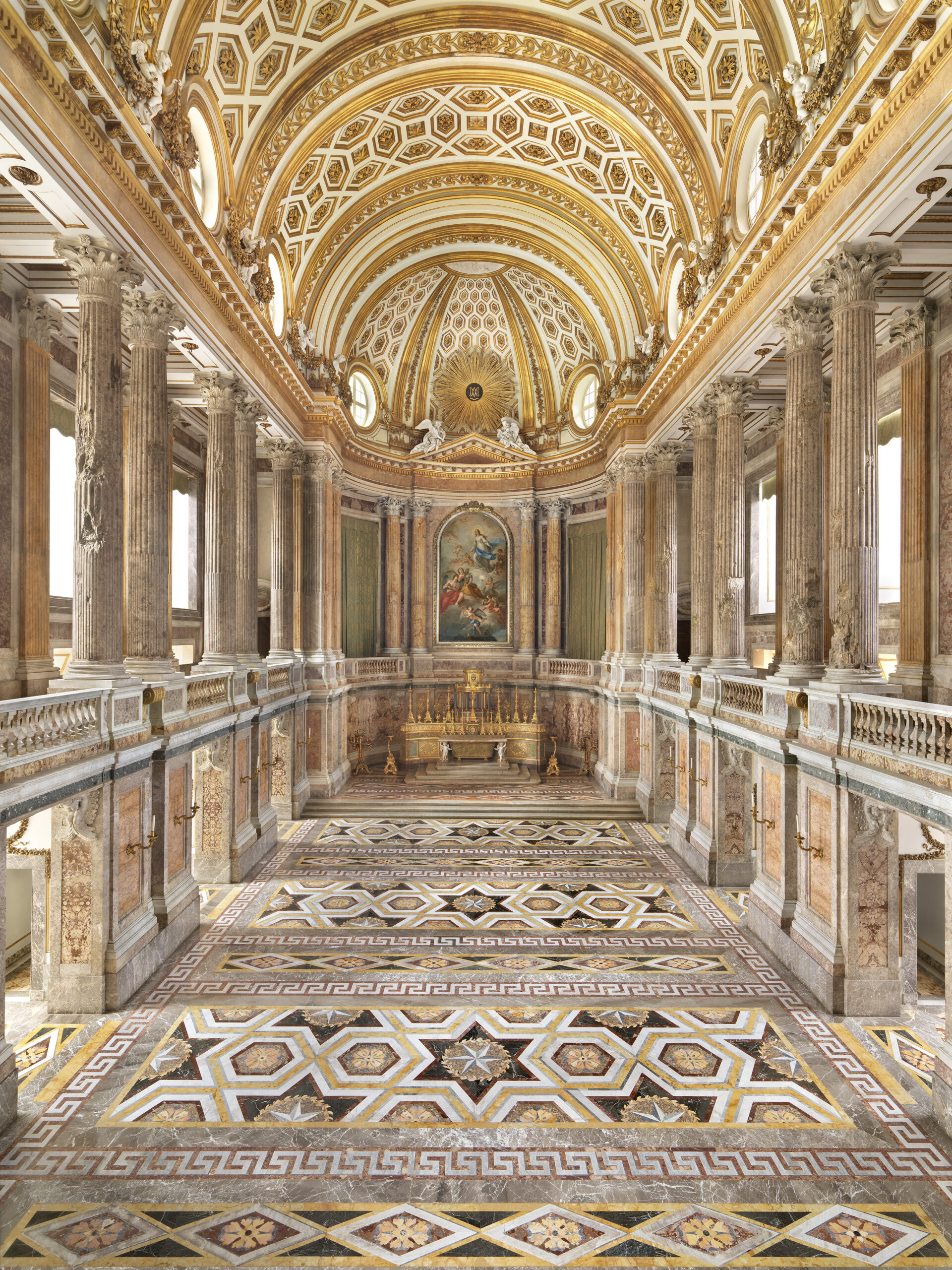
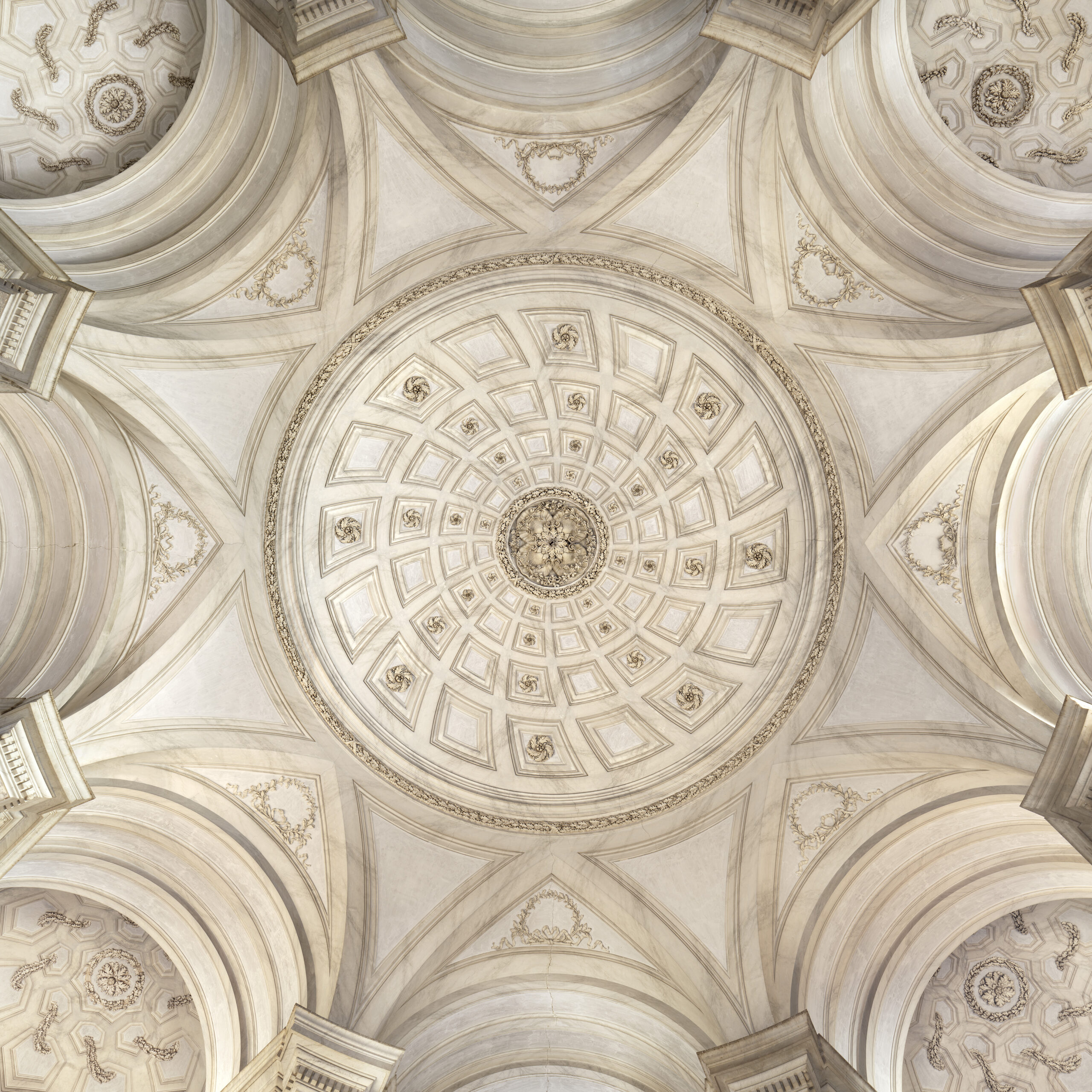
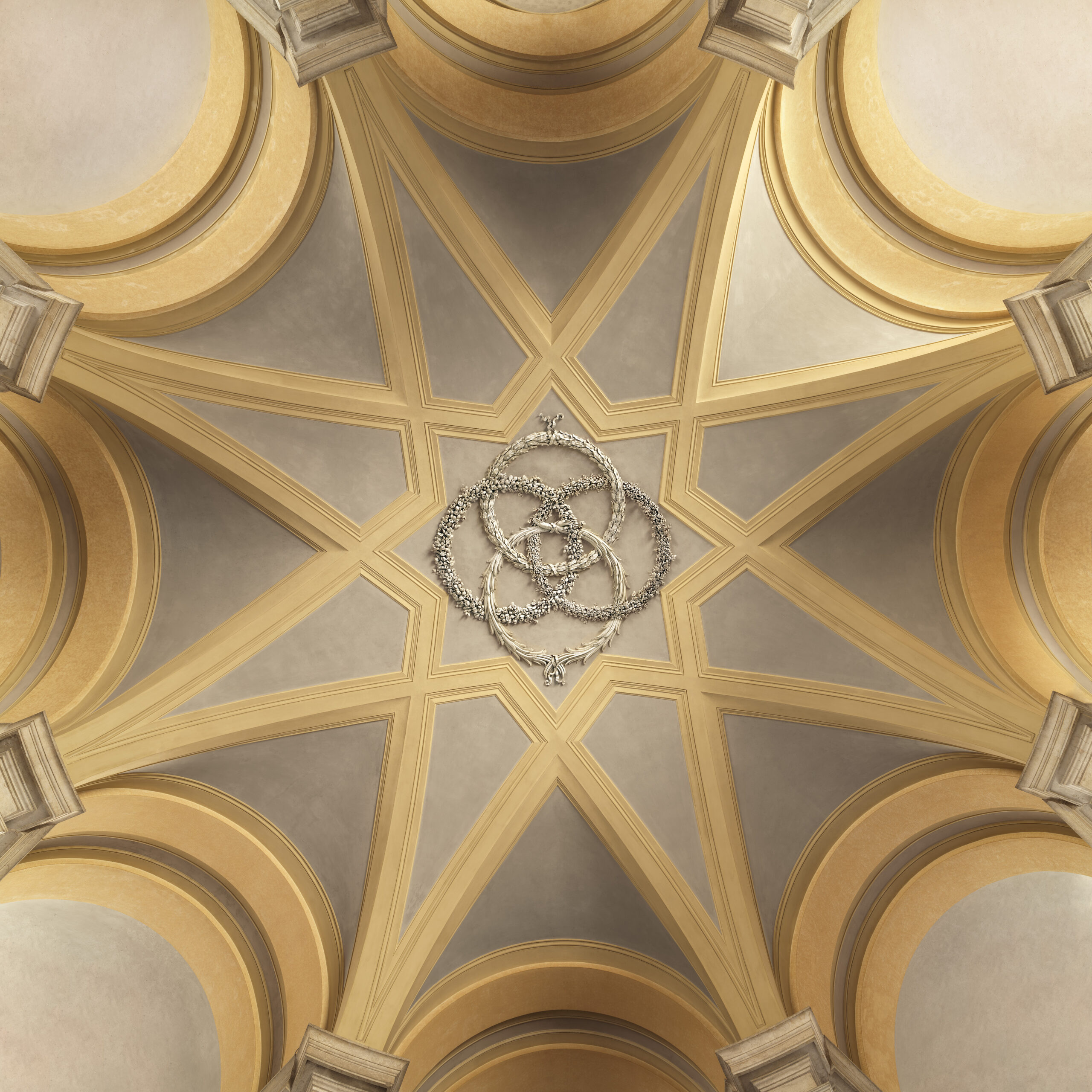
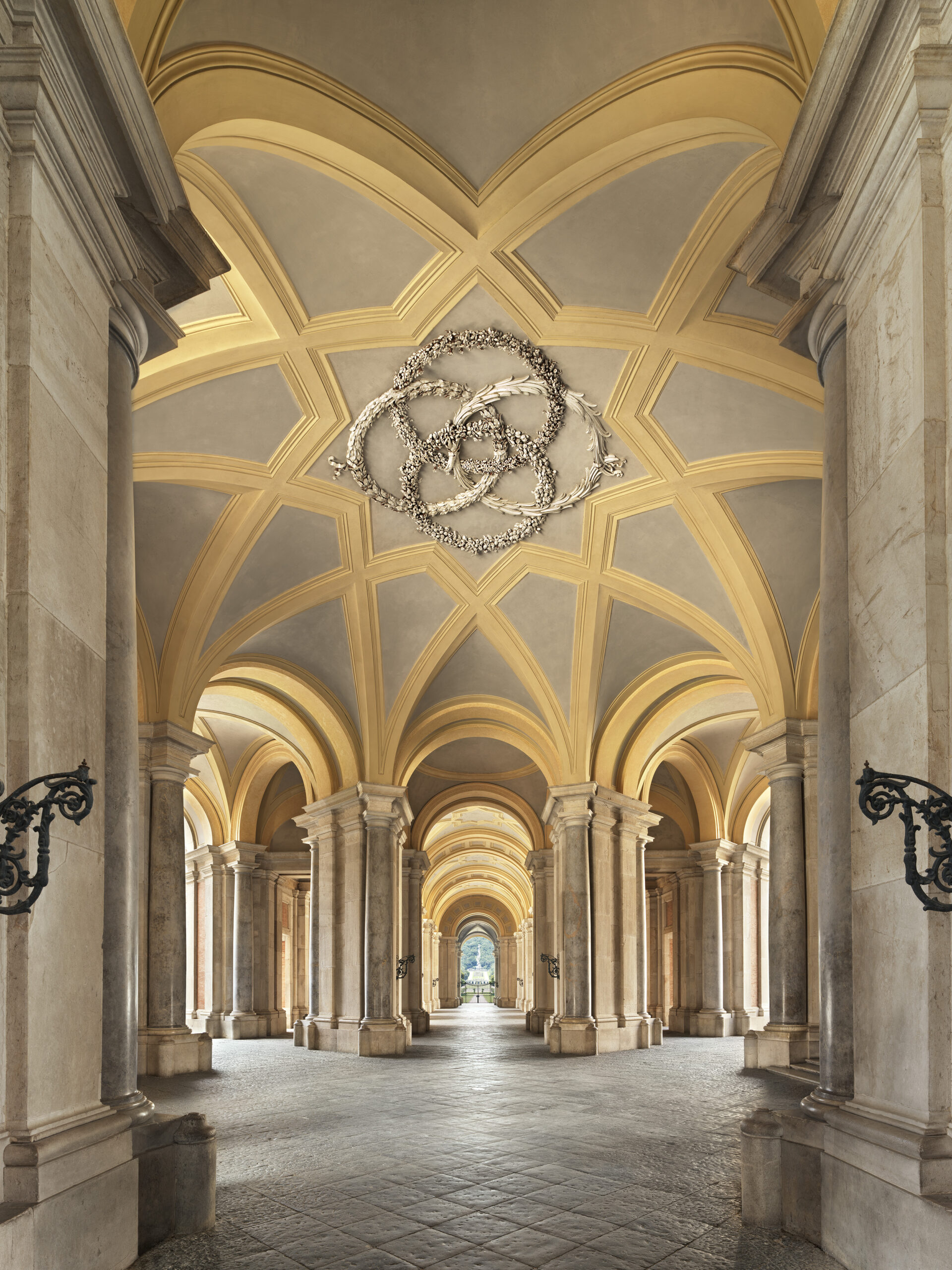
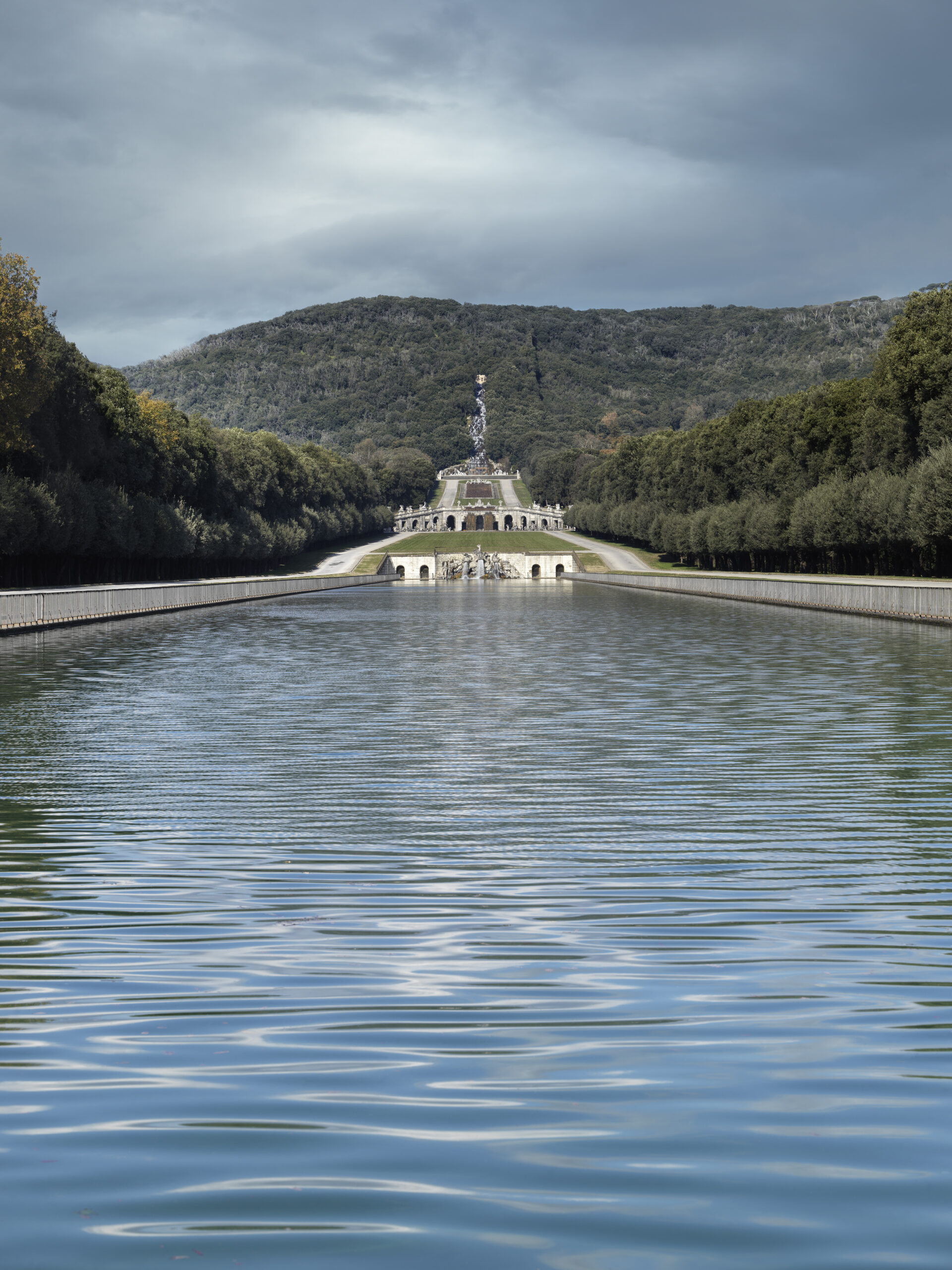
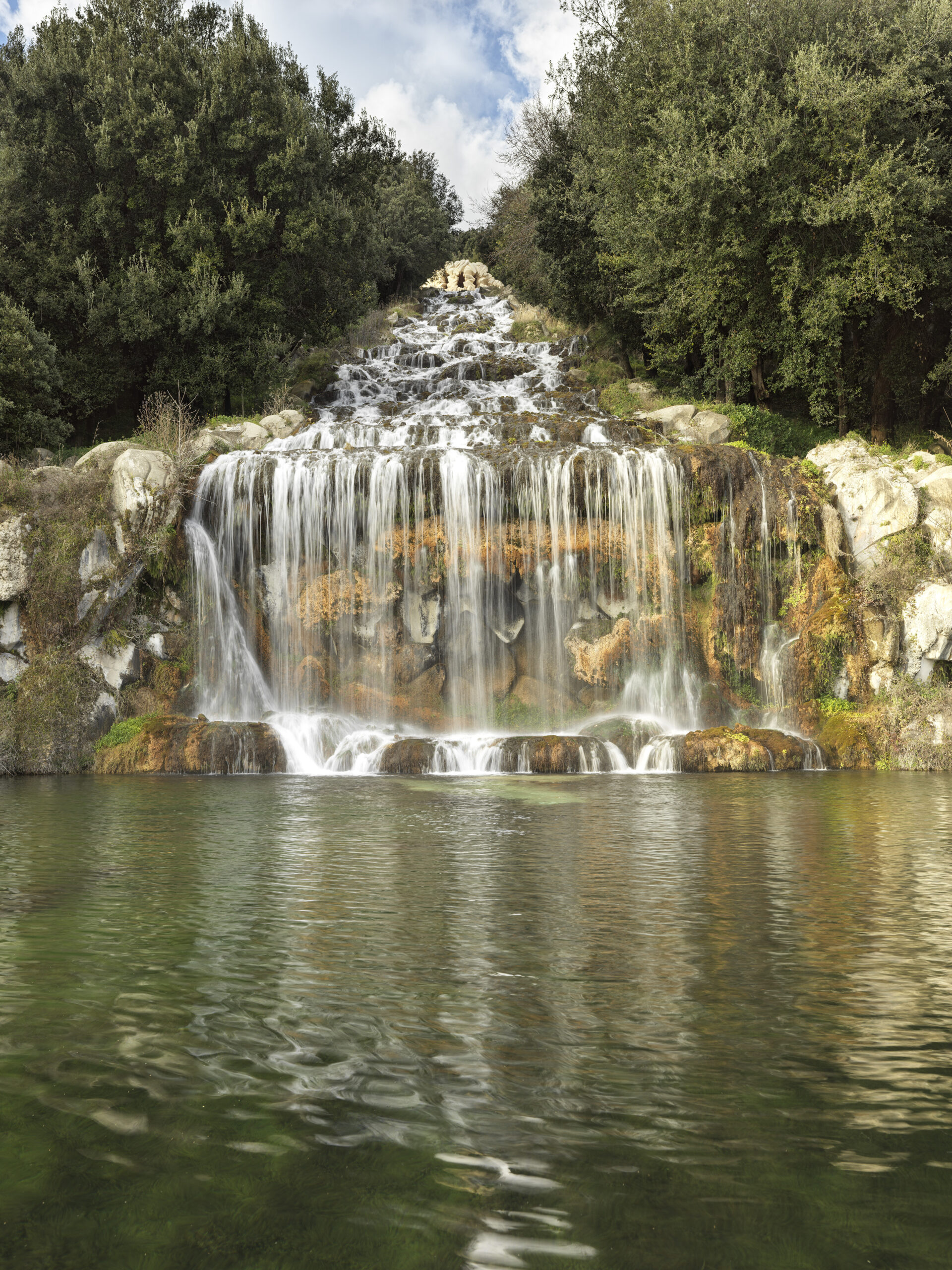
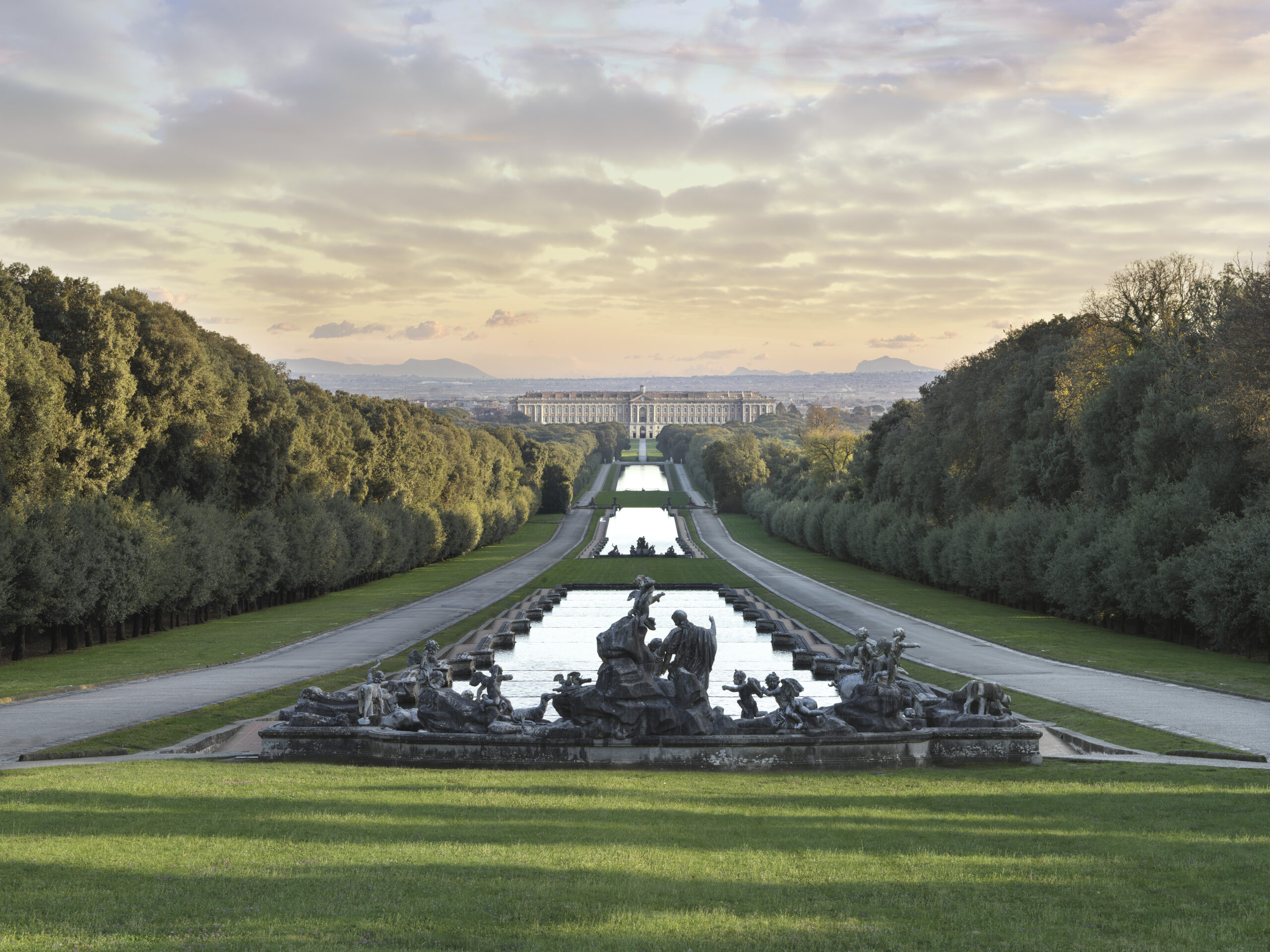
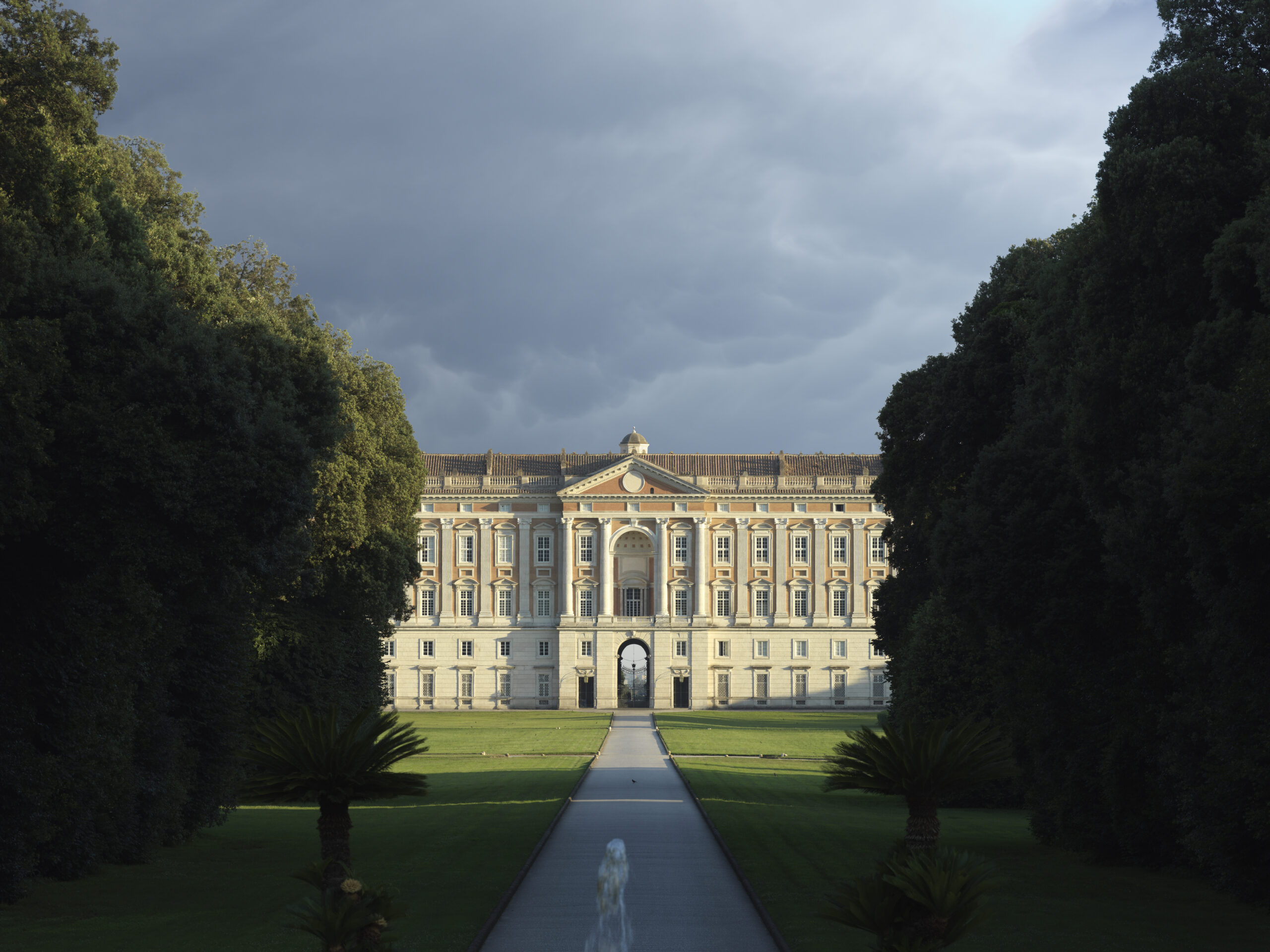
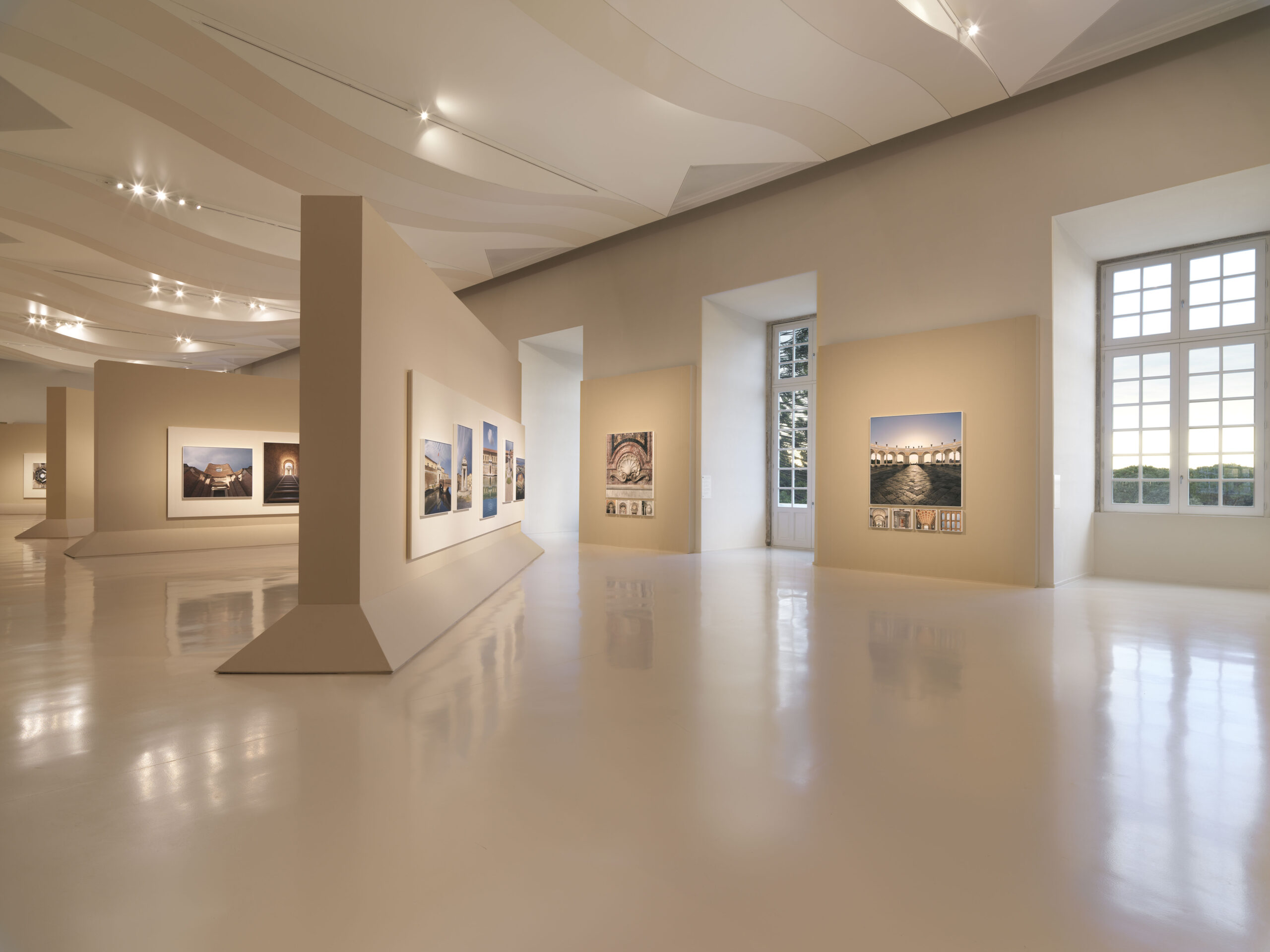
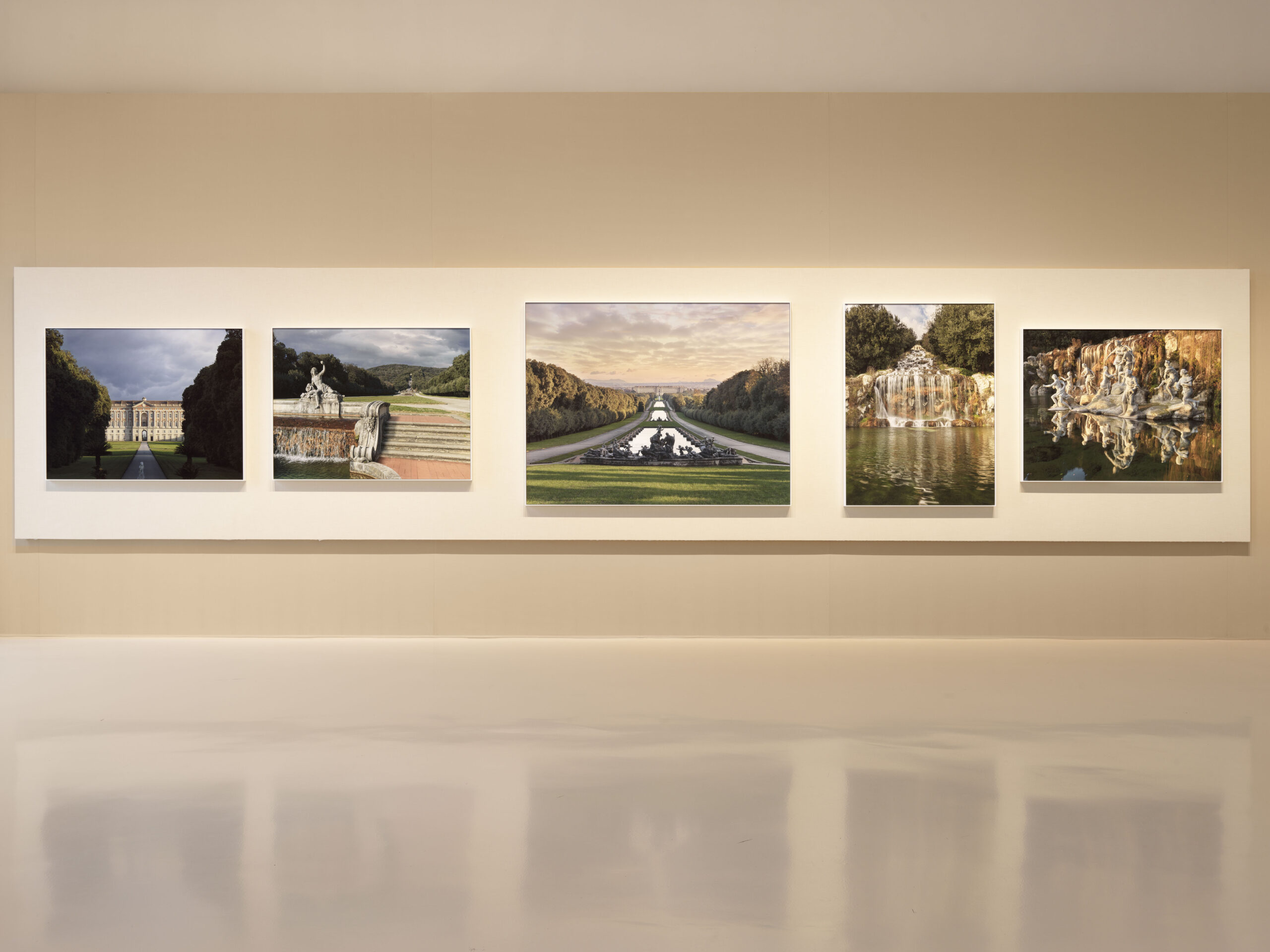
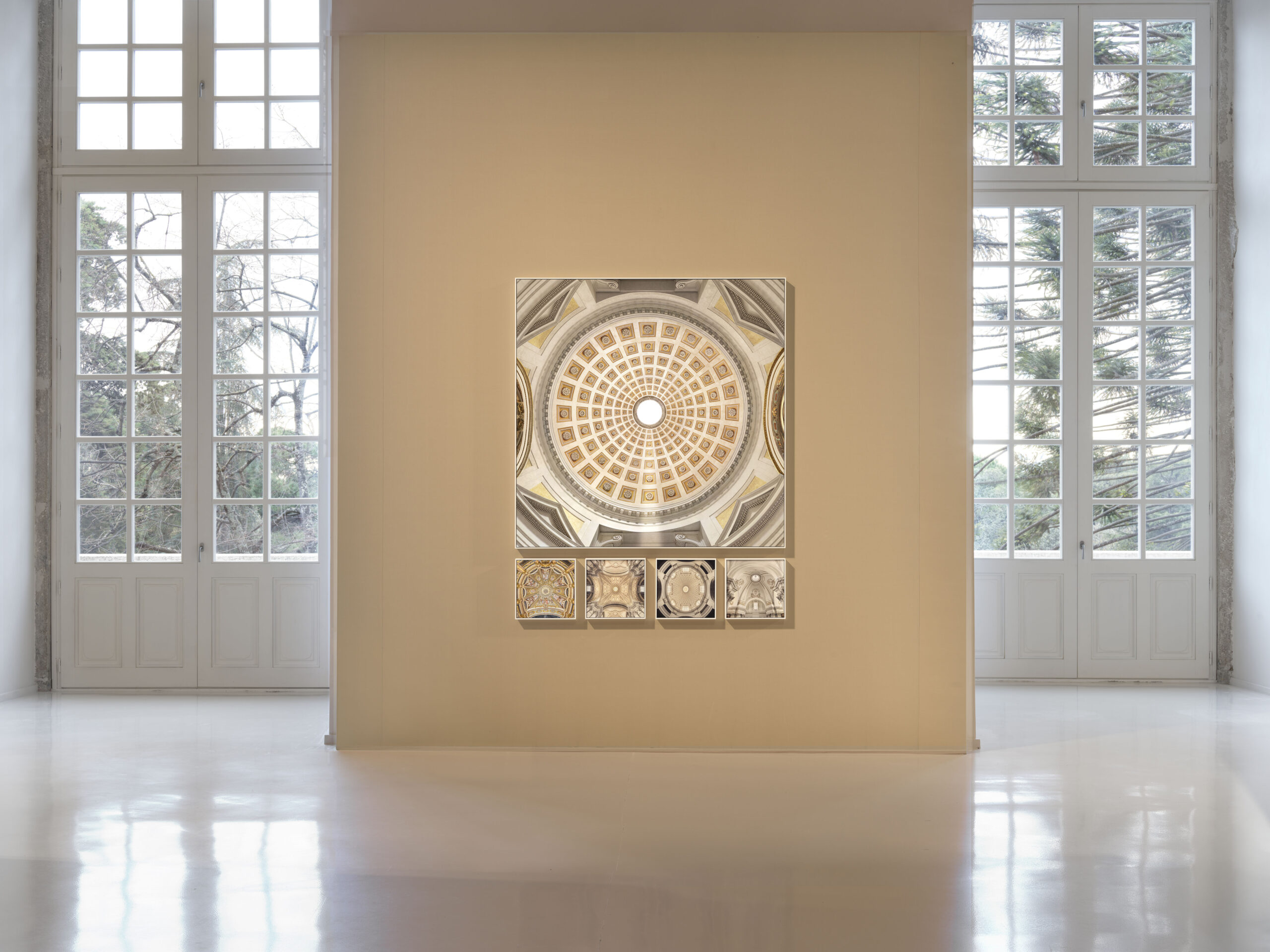
Light, geometry, balance: Luigi Vanvitelli overcomes the familiar device of the perspective telescope ascribed to him, by enacting an authentic dramaturgy of the gaze; it means that the people that cross his architectures are like spectators who are seeing a staging carefully composed in the chiaroscuro effects and in the visiting time and paths. The vaults and floor scores mirror one within the other, suggesting the mutual belonging to the space sequences, and Vanvitelli, as an experienced theatre director, defines precisely the strategic points of the vision by signing the reference points drawn on the vaults and on the floors. His architecture is in fact the perfect metaphor of the human action: transforming nature and building a world in man’s own image, starting from the opacity of the stone to aim at the brightness of the sky. Luigi was, in that aspect, the worthy son of Caspar van Wittel, who was one of the best vedutisti of the time that loved describing the places he painted in details, by immersing them in atmospheres handled by restless clouds; the space can’t be revealed without the appropriate light, that’s what is shown by the images exhibited. That’s why, before one of the most visionary architects of all times, I thought that the most appropriate approach I had to use was trying to photograph his thought, his idea, before representing the objective built form. The images research the connection between the place and its history, the passage from the knowable and the unrevealed. They try to trace back to the visual sign that triggers the creative process, by having in mind that it is only through the exercise of memory that the sign is allowed to excite us.
Luce, geometria, equilibrio: Luigi Vanvitelli va oltre il noto espediente del cannocchiale prospettico a lui attribuito, mettendo in atto una vera e propria drammaturgia dello sguardo; le persone che attraversano le sue architetture sono come spettatori che assistono a una messa in scena teatrale da lui definita meticolosamente negli effetti chiaroscurali, nei tempi e nei percorsi di visita. Volte e spartiti pavimentali si specchiano l’uno nell’altro, lasciando intendere la reciproca appartenenza delle sequenze spaziali, e Vanvitelli, come un esperto regista, definisce con precisione i punti strategici della visione attraverso l’apposizione di punti di riferimento disegnati sulle volte e sui pavimenti. La sua architettura è la perfetta metafora dell’azione umana: trasformare la natura e costruire il mondo a propria immagine partendo dalla dall’opacità della pietra per mirare alla luminosità del cielo. Luigi fu in questo degno figlio di Caspar van Wittel, uno dei più grandi vedutisti del suo tempo, che amava descrivere dettagliatamente i luoghi rappresentati, immergendoli in atmosfere movimentate da nuvole irrequiete; al cospetto di uno degli architetti più visionari di tutti i tempi, tentare di fotografare un pensiero, un’idea progettuale, ancor prima di rappresentarne l’oggettiva forma costruita, è l’approccio che è sembrato più appropriato. Queste immagini ricercano la connessione tra il luogo e la storia, il passaggio tra il conoscibile e il non rivelato, e provano a risalire all’indizio visivo che innesca il processo della creazione, avendo ben presente che solo attraverso l’esercizio della memoria agisce il segno in grado di produrre l’emozione.
Icons and Identities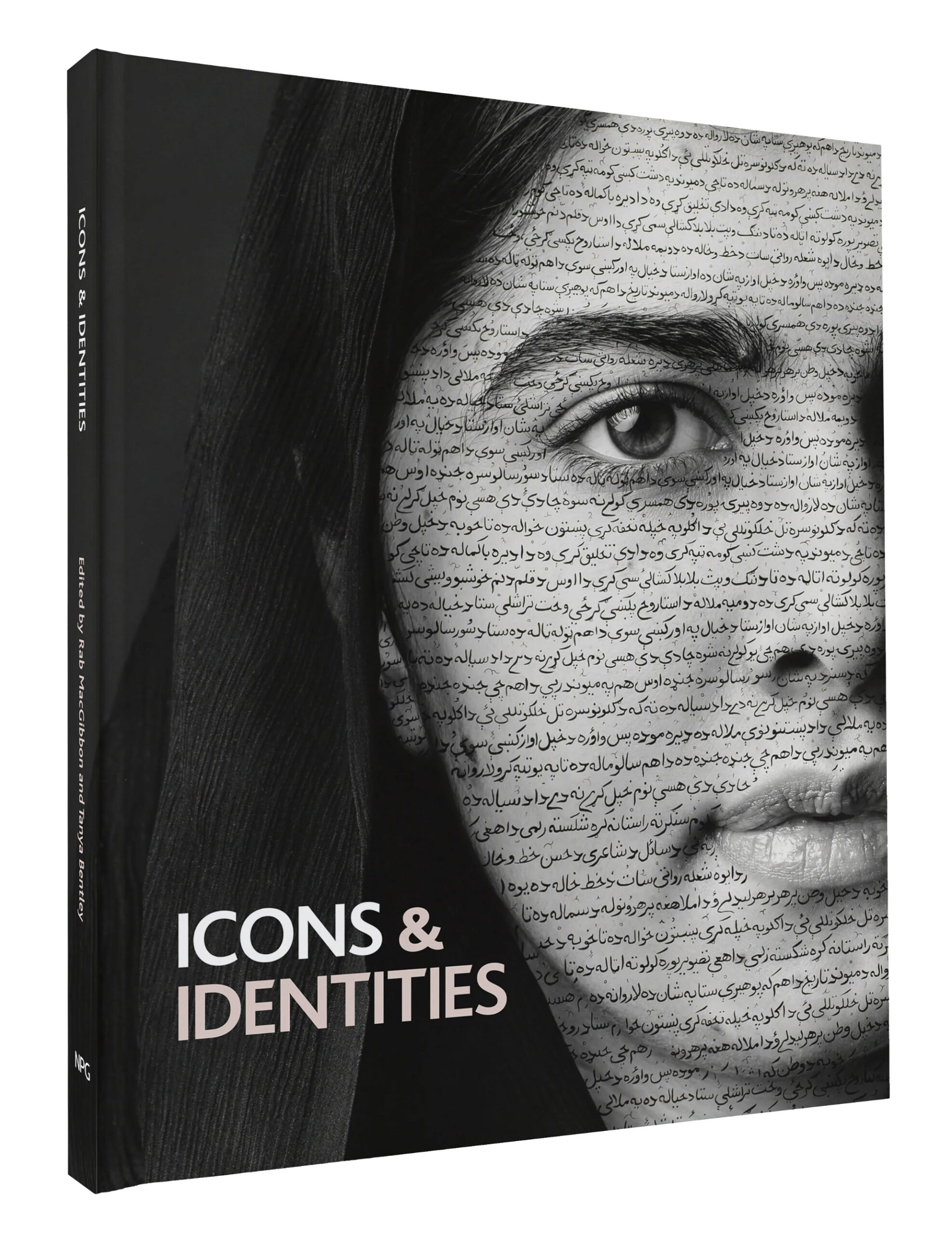
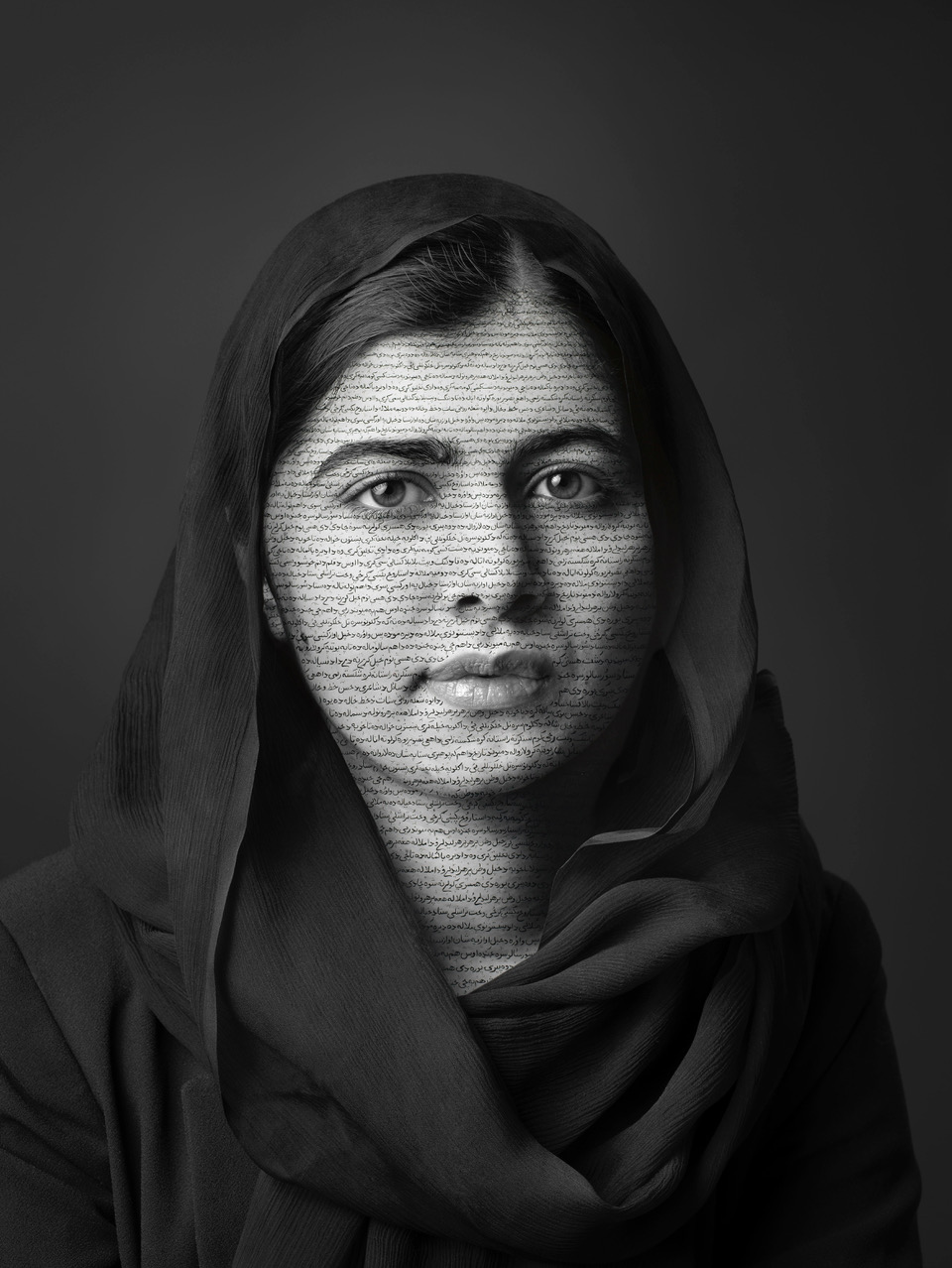
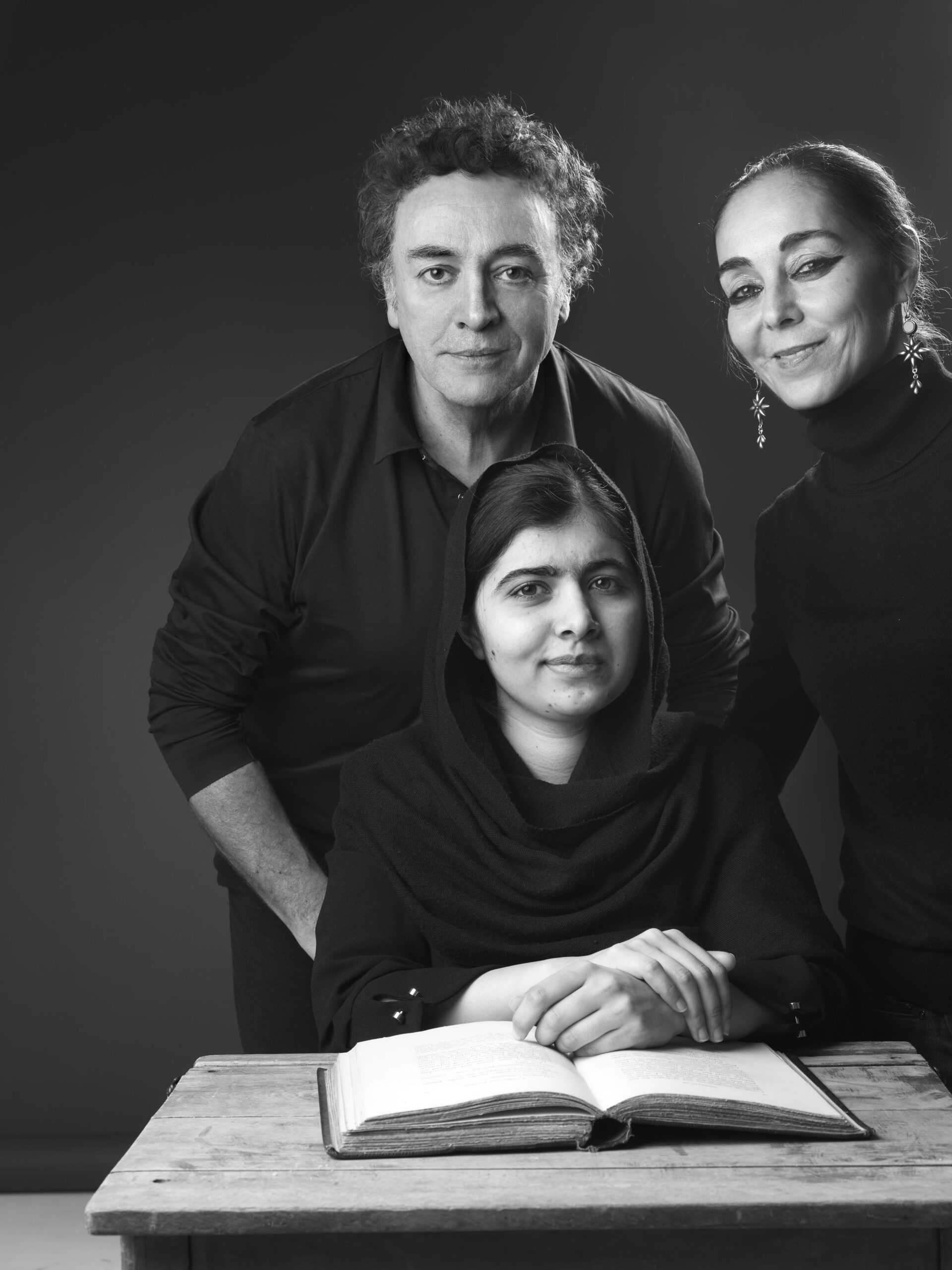
Proud to be part of the project, shooting for Shirin Neshat’s artwork. A simple and emotional portrait that capture the inner light of a young extraordinary woman. Portrait of Malala Yousafzai is one of the most powerful works recently commissioned by National Portrait Gallery in London, and now is on the cover of a new book: Icons & Identities published by NPG.
Identity is complex, multifaceted and profoundly personal, and artists have developed innovative methods with which to explore it in images of both icons and less well-known figures. Icons & Identities examines how artworks encourage us to think about who we are and what we value, and illustrates how we are seen by society, through the variety, diversity and complexity of portraiture.
Orgoglioso di far parte del progetto, eseguendo gli scatti fotografici per l’opera di Shirin Neshat. Un ritratto semplice ed emozionale che cattura la luce interiore di una giovane donna straordinaria. Il ritratto di Malala Yousafzai è una delle opere più potenti recentemente commissionate dalla National Portrait Gallery di Londra, ed è ora sulla copertina di un nuovo libro: Icons & Identities pubblicato da NPG.
L’identità è complessa, sfaccettata e profondamente personale, e gli artisti hanno sviluppato metodi innovativi con cui esplorarla attraverso immagini sia iconiche che meno conosciute. Icons & Identities esamina come le opere d’arte ci incoraggiano a pensare a chi siamo e cosa apprezziamo, e illustra come siamo visti dalla società, attraverso la varietà, diversità e complessità della ritrattistica.
Ex Novo
Solo exhibition, Pio Monte della Misericordia, Napoli
April – September 2022
The project Ex Novo concerns Art itself, exploring the visual clues which trigger the creative process. We are living in difficult times, in the midst of epidemics, conflicts, migration, violence that is reminiscent of a historical reoccurrence, the seventeenth century, the “Century of Rage” which saw the birth of the Pio Monte della Misericordia.
Ex Novo highlights the feelings of empathy and compassion towards frail, vulnerable people.
It is composed by six picture that, between April and September 2022, surrounds Caravaggio’s masterpiece, Seven acts of Mercy.
Loosely based on details of great baroque painting, they interpret the ethical mission based on solidarity of the Pio Monte in accordance with the logic and urgency of our time.
Ex Novo si riferisce alla Storia dell’Arte, ricercando gli indizi visivi che innescano il processo della creazione. Stiamo vivendo un momento difficile, tra epidemie, conflitti, esodi, violenze che fanno pensare a un ricorso della Storia, al Seicento, al “Secolo di Furore” che vide nascere le creazioni del Pio Monte della Misericordia.
Ex Novo mette in luce i sentimenti di empatia e compassione nei confronti delle persone fragili e vulnerabili. Sono sei immagini che da aprile a
settembre del 2022 fanno ala intorno al capolavoro di Caravaggio, le Sette opere di Misericordia. Liberamente ispirate a dettagli della grande pittura barocca, interpretano la missione etica e solidale del Pio Monte secondo le logiche e le urgenze del nostro tempo.
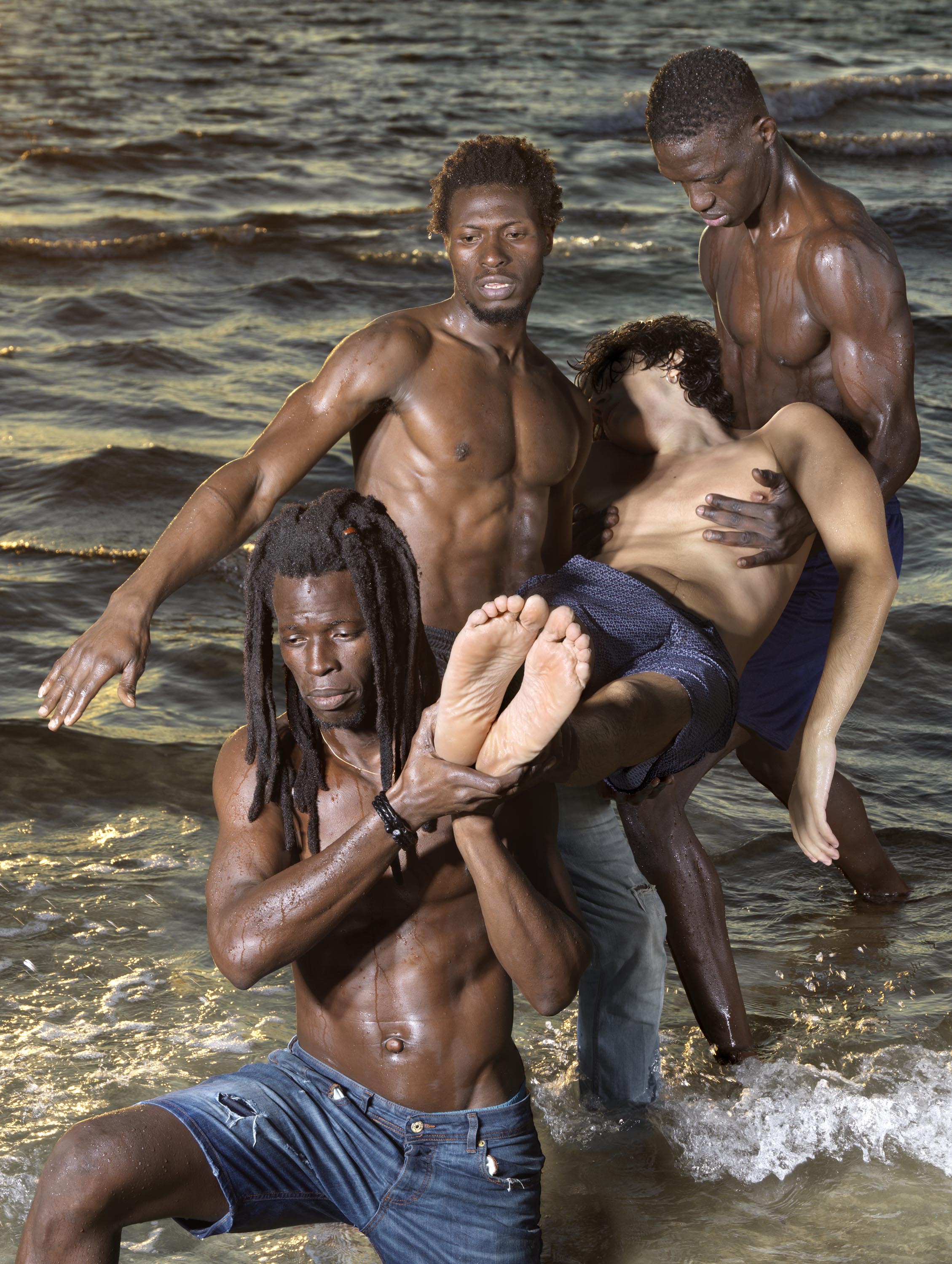
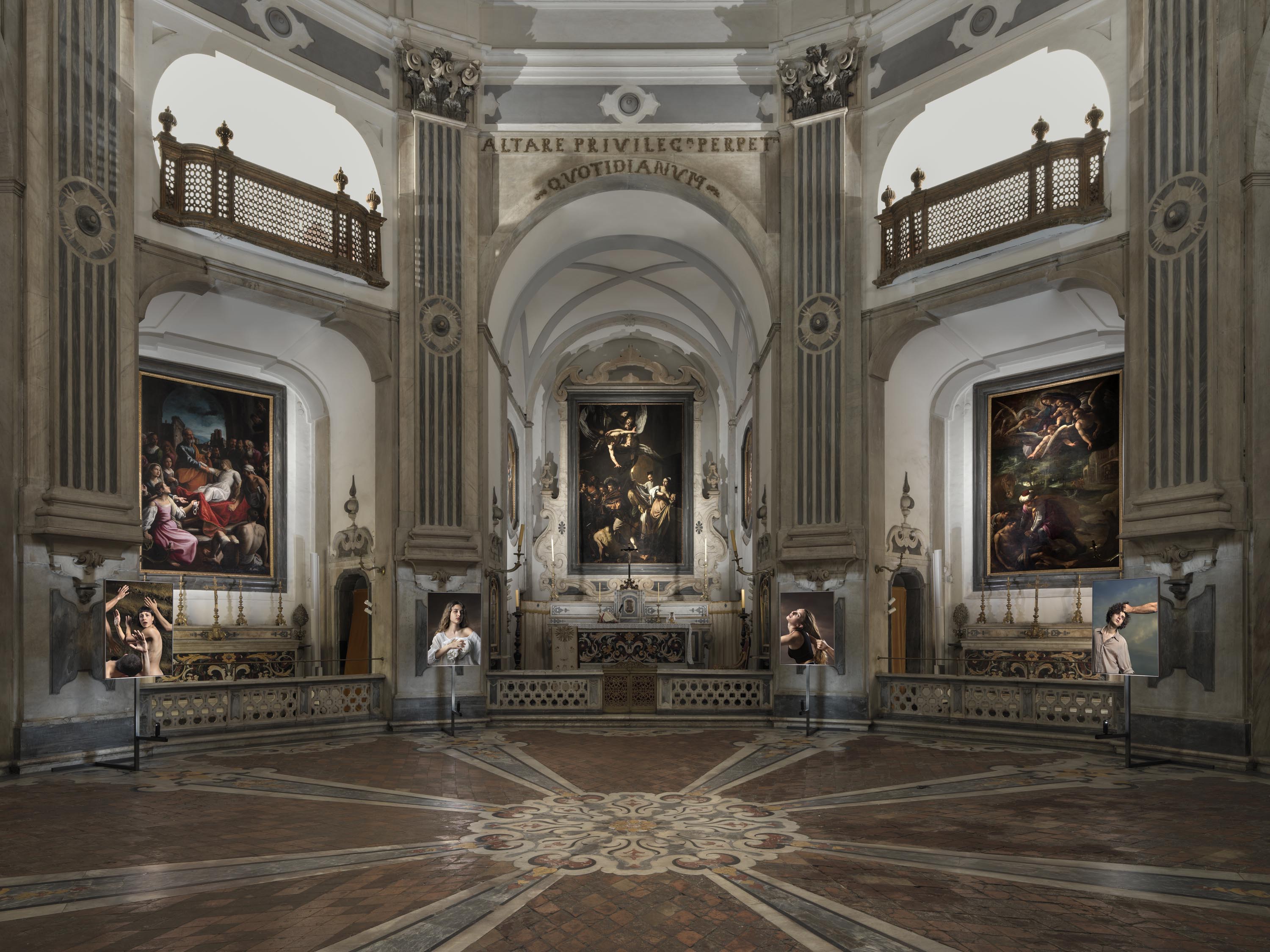
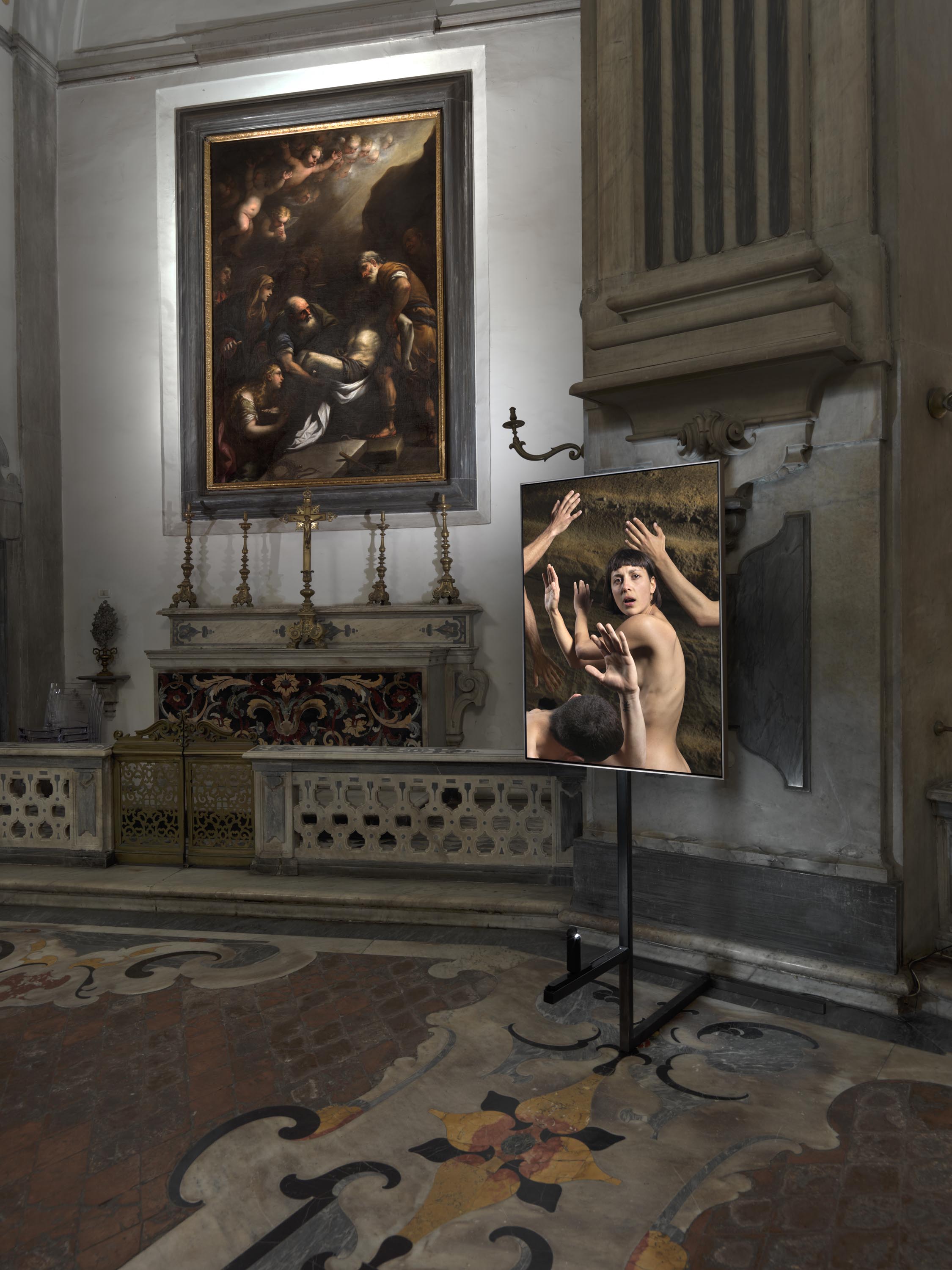
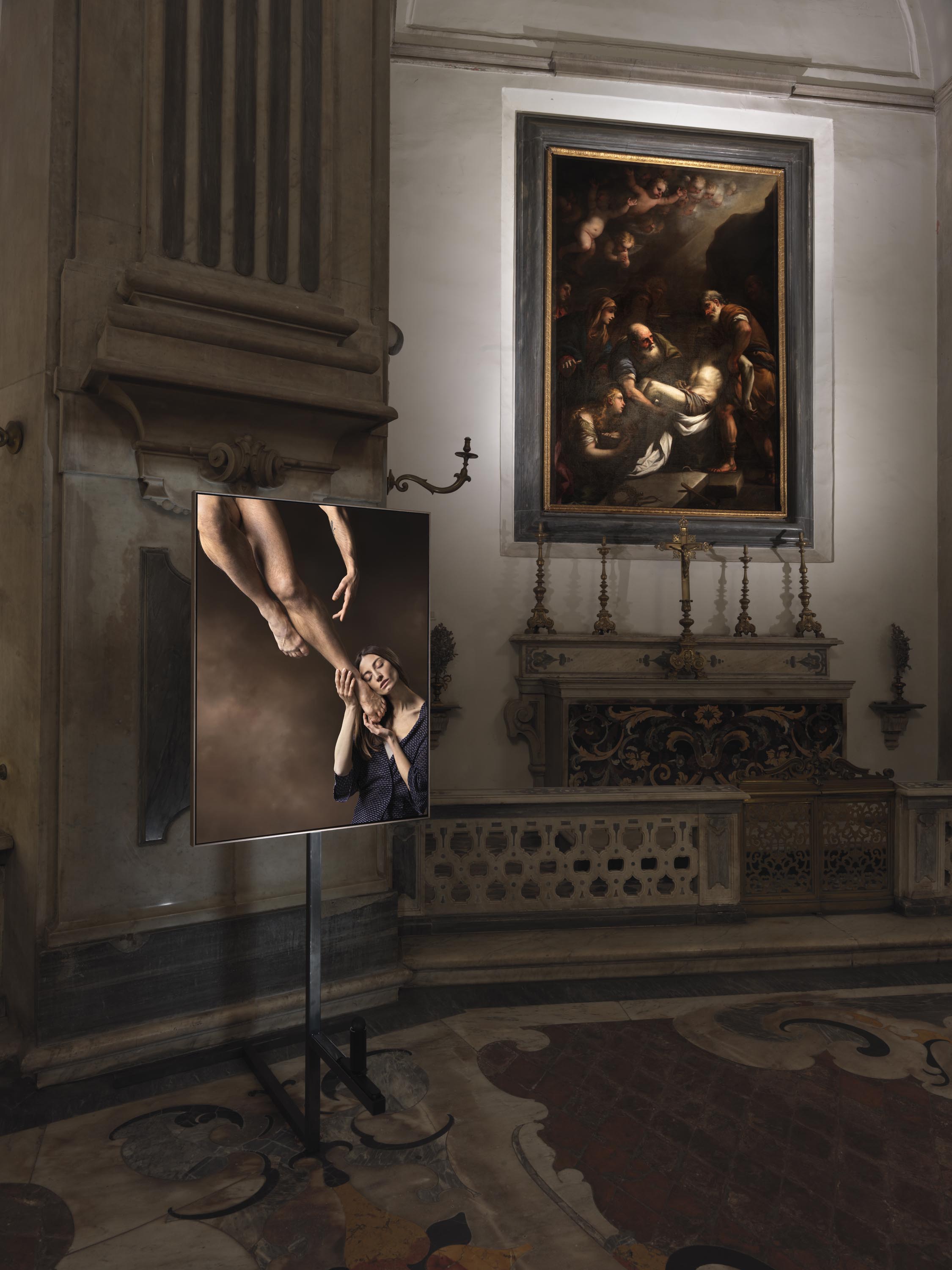
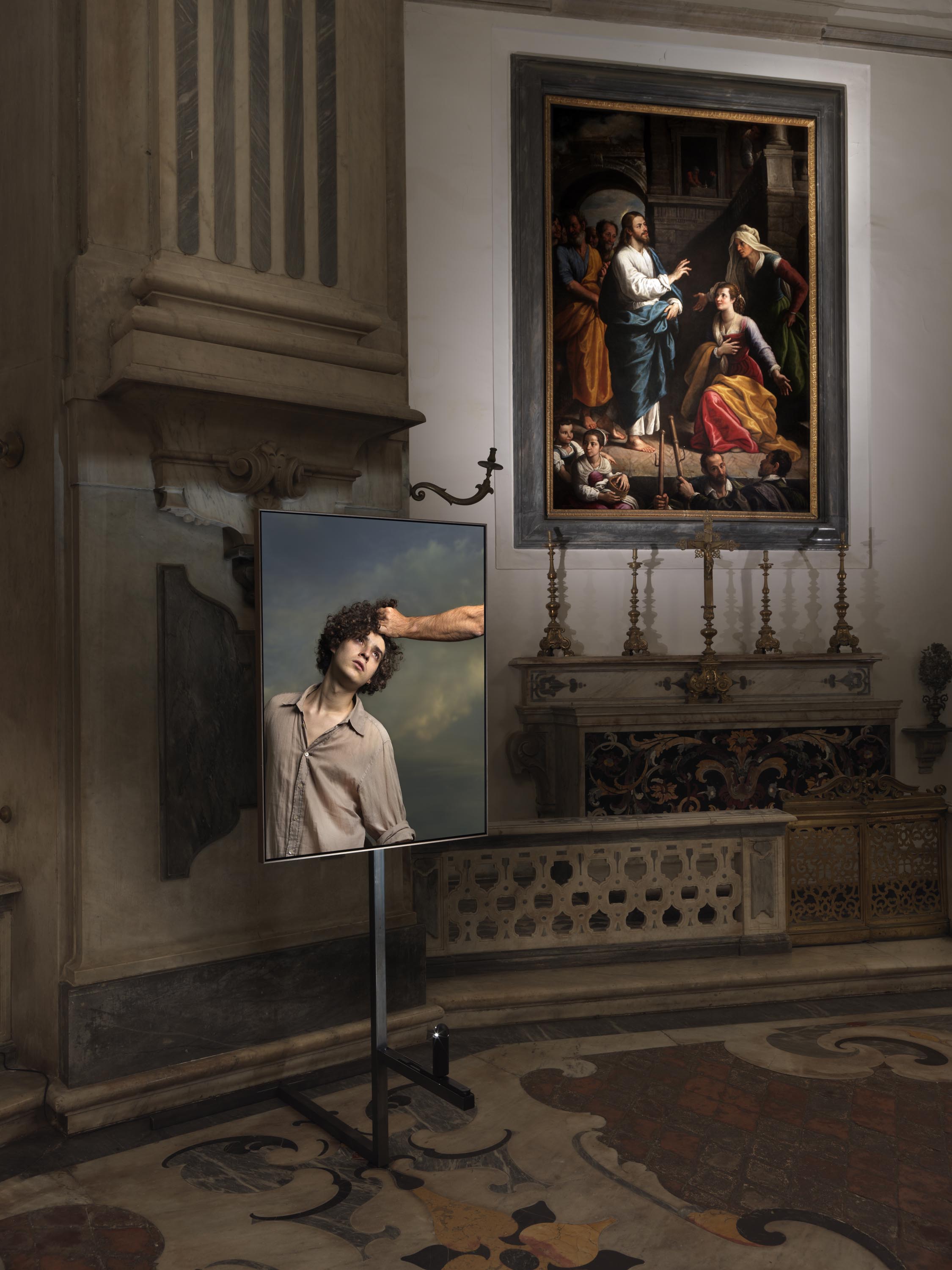
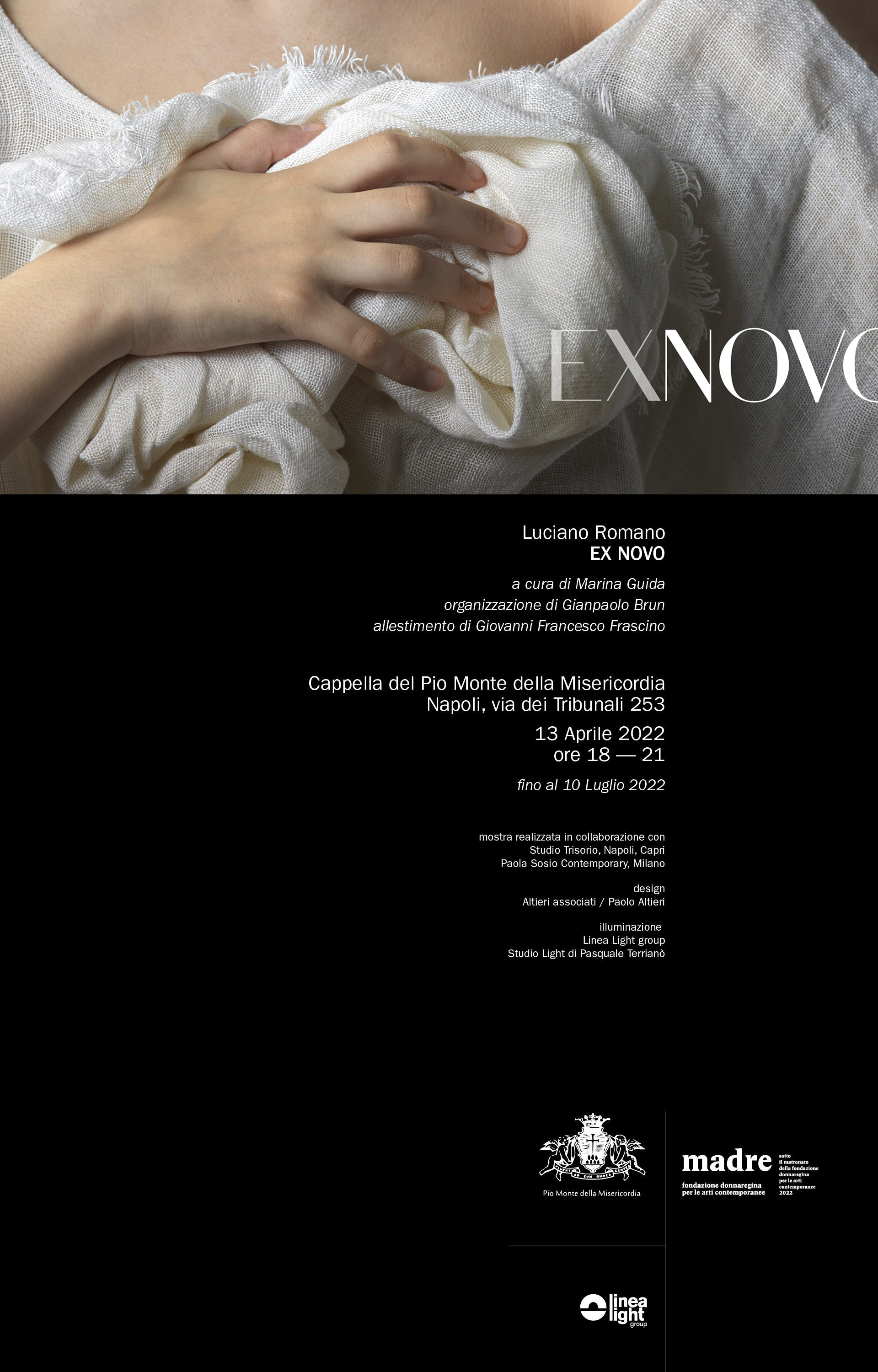
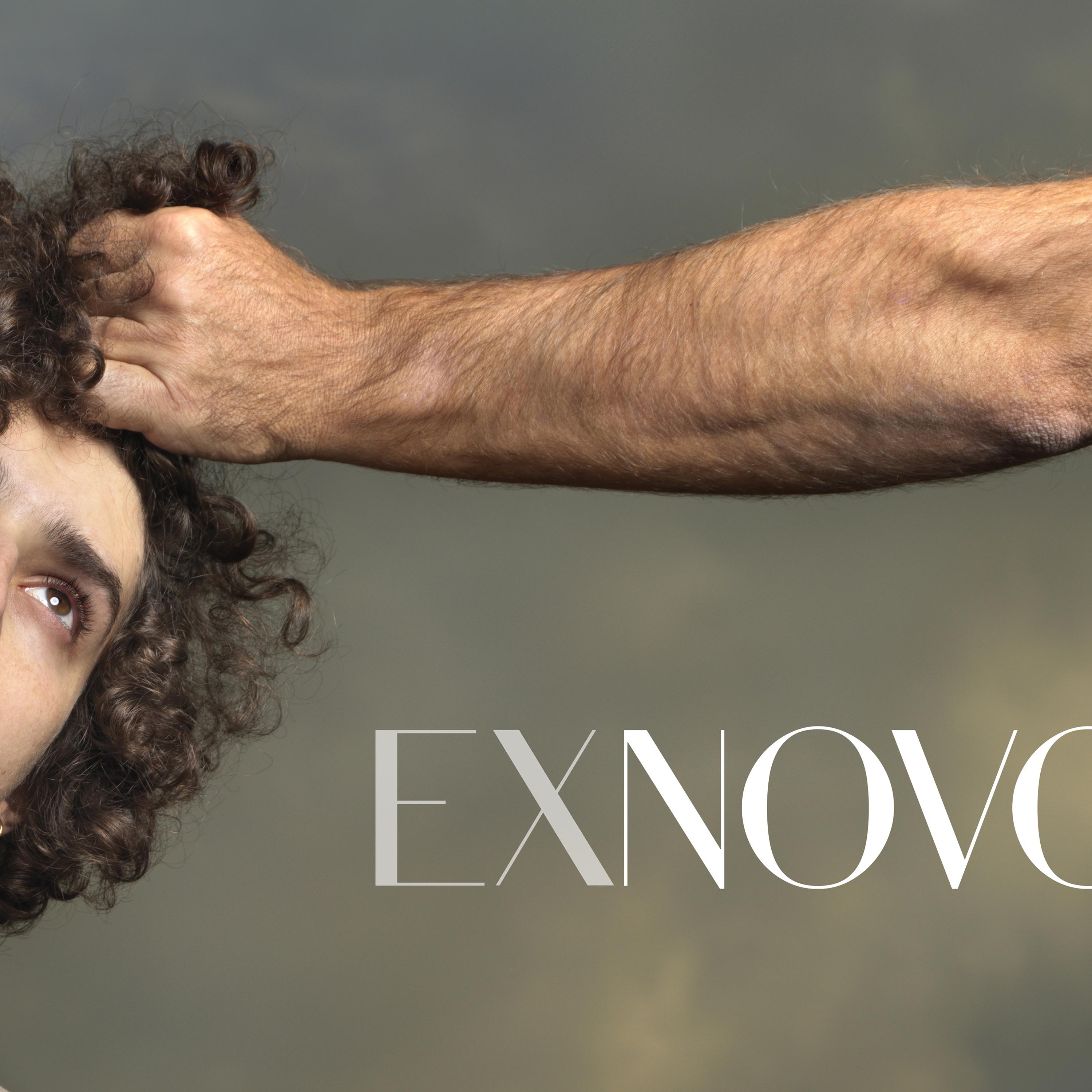
Hasselblad Masters 2021
finalist Architecture
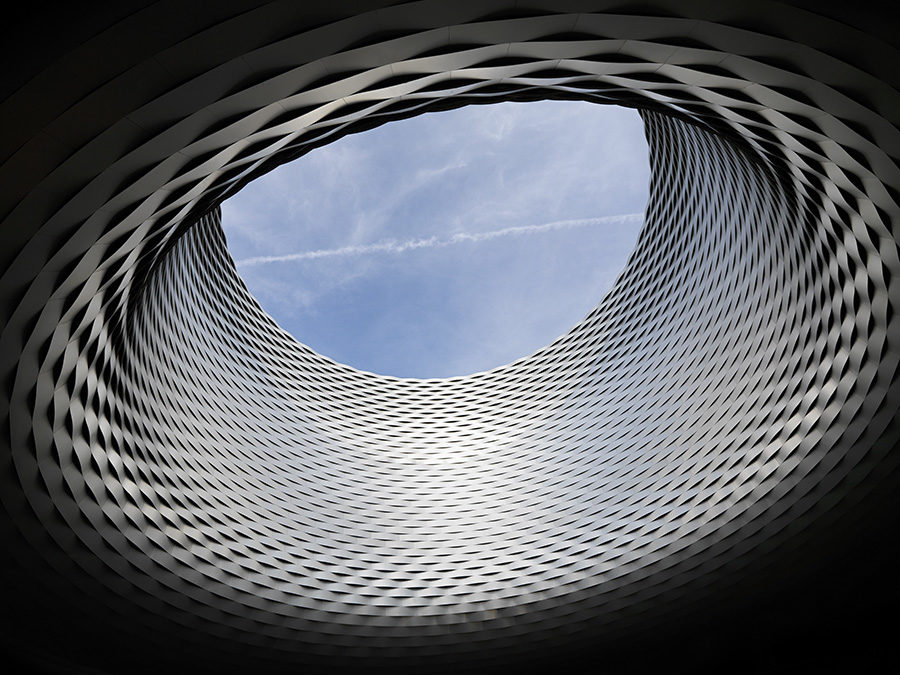
Song ‘e mare
permanent installation in Scampia Station, Naples Metro Subway
Regione Campania – EAV – Fondazione Plart
December 2019
Luciano Romano’s portraits for Scampia Station in Naples Subway, December 2019
“Music cannot be posed, because of its nature, it escapes from any visual representation”. Still, in photographing music, the artist has found a metaphor just as credible as all the things that compose the Scambiapassi project: the sea, in its endless flow and inspiration, and our shimmering relationship with it. A sea that – with its gulf that shines at the “Sole mio” or under the glimmer of the stars and a “Luna Rossa” – has inspired a lot of Neapolitan music, but in Scampia, as in many other central districts of Naples, it seems historically and creatively so distant (after all, Anna Maria Ortese wrote that “The sea does not flow through Naples”). But it is the sea, indeed, that brings the harmonic evocation and rhythmic excitement of singing and music, making themselves “a possible representation” of their very “raison d’être”. Fourteen full-length pictures of Neapolitan musicians and singers, portrayed in black and white at the encounter between solar backlight and artificial lighting, placed along the same horizon line, the one among sea and sky, while they take a step forward, moving closer or going away, in a constant dynamic between scene and background, light and shadow, masculine and feminine, cultured and popular, memory and intuition. As if, even fixed on the photographic paper, these images return us the motion itself of the creative process from which Neapolitan songs and melodies were all originated on the shores of this gulf. The matrix structure of these portraits turns out to be the image of the German artist Joseph Beuys (Krefeld, 1921 Düsseldorf, 1986) We Are The Revolution (1971): every note and every chord of hope or desperation, seem to be recalled from this gesture that demands our attention and participation… “If I have tochoose an image, the Neapolitan music inhabits my thoughts like this”… And here there is another surprising reference in the genesis of Scambiapassi: precisely of a conception of art understood and practiced by Beuys as inclusion and activation, in a research that leads to the same level of existential event and maieutic and formative function of artistic acting. The art-life relationship originated from the Beuys’ Soziale Plastik, subverts an experience of artwork as a fetishistic object to contemplate for assuming an anthropological value and a democratic function of responsibility towards every human being, solicited to participate in the society’s decision mechanisms and to be committed actively, critically, responsibly. We Are The Revolution, therefore, is not only the image taken at Casa Orlandi in Anacapri becoming the manifesto published for the artist’s first personal exhibition in Naples, on 13th of November 1971, at the Lucio Amelio gallery. But it is also, and above all, a code word that seems to reverberate up to a public art project such as Scambiapassi, indeed, will be. (Andrea Viliani)
Le immagini fotografiche di Luciano Romano per la stazione metro di Scampia, dicembre 2019
“La musica non la puoi mettere in posa, per sua natura sfugge a ogni rappresentazione visiva”. Eppure, nel fotografare la musica, l’artista ha reperito una metafora altrettanto verosimile, come lo è tutto ciò che compone il progetto Scambiapassi: il mare, nel suo flusso e ispirazione senza fine, e il nostro cangiante rapporto con esso. Un mare che – con il suo golfo che risplende al “Sole mio” o sotto il baluginio delle stelle e di una “Luna rossa” – ha ispirato molta della musica napoletana, ma che a Scampia, come in molti altri quartieri anche centrali di Napoli, storicamente e creativamente sembra invece così distante (scriveva del resto Anna Maria Ortese che Il mare non bagna Napoli). Ma è appunto il mare che porta con sé l’evocazione armonica e l’eccitazione ritmica del canto e della musica, facendosi “possibile raffigurazione” della loro stessa “ragion d’essere”. Quattordici fotografie di musicisti e cantanti napoletani a figura intera, ritratti in bianco e nero all’incontro fra controluce solare e illuminazione artificiale, posti lungo la stessa linea d’orizzonte, quella fra mare e cielo, mentre fanno un passo in avanti, avvicinandosi o allontanandosi, in una costante dinamica fra scena e retroscena, luce e ombra, maschile e femminile, colto e popolare, ricordo e intuizione. Come se, pur fissate sulla carta fotografica, queste immagini ci restituissero il moto stesso del processo creativo da cui canzoni e melodie napoletane sono scaturite, tutte, in riva a questo golfo. La struttura-matrice di questi ritratti si rivela essere l’immagine dell’artista tedesco Joseph Beuys (Krefeld, 1921-Düsseldorf, 1986) La rivoluzione siamo noi (1971), riportata sul manifesto della mostra personale alla Modern Art Agency di Lucio Amelio e realizzata mentre l’artista era ospite di Pasquale e Lucia Trisorio alla Casa Orlandi di Anacapri: ogni nota e ogni accordo, di speranza o di disperazione, sembrano richiamati da questo gesto che reclama la nostra attenzione e partecipazione… “Se proprio devo scegliere un’immagine, la musica di Napoli abita così i miei pensieri”… Ed ecco un altro riferimento sorprendente nella genesi di Scambiapassi: quello appunto a una concezione dell’arte intesa e praticata da Beuys come inclusione e attivazione, in una ricerca che conduce sullo stesso piano vicenda esistenziale e funzione maieutica e formativa dell’agire artistico. Il rapporto arte-vita che scaturisce dalla Soziale Plastik beuysiana sovverte un’esperienza dell’opera d’arte come oggetto feticistico da contemplare per assumere un valore antropologico e una funzione democratica di responsabilizzazione nei confronti di ogni essere umano, sollecitato a partecipare ai meccanismi decisionali della società e a impegnarvisi attivamente, criticamente, responsabilmente. La Rivoluzione Siamo Noi non è quindi solo l’immagine scattata a Casa Orlandi ad Anacapri e diventata il manifesto pubblicato per la prima mostra personale dell’artista a Napoli, il 13 novembre 1971, presso la galleria di Lucio Amelio. Ma è anche, anzi soprattutto, una parola d’ordine che sembra riverberarsi fino a un progetto d’arte pubblica quale è, appunto, Scambiapassi. (Andrea Viliani)
